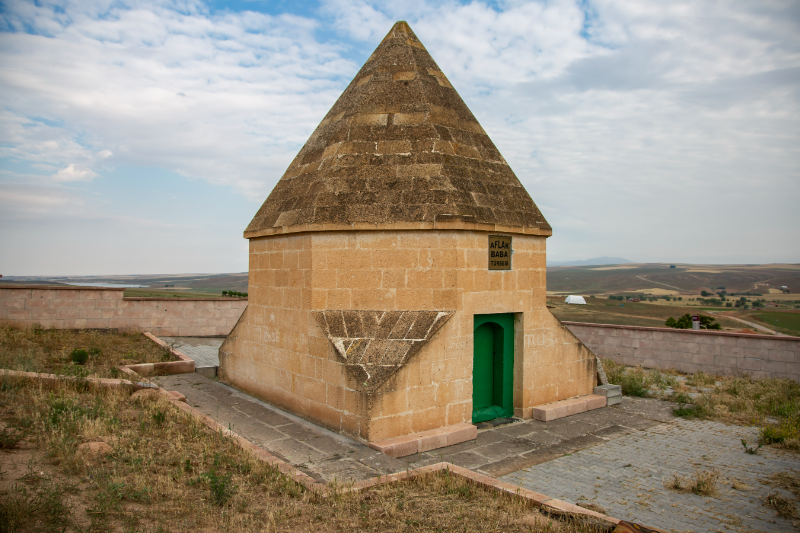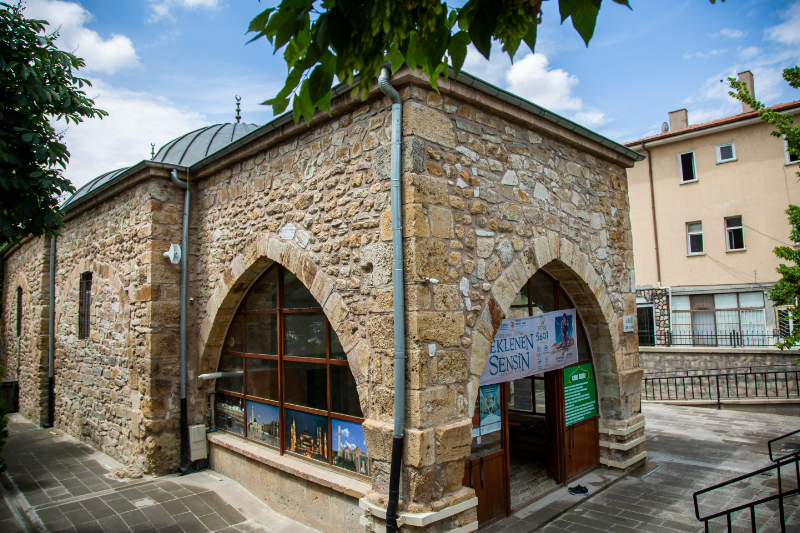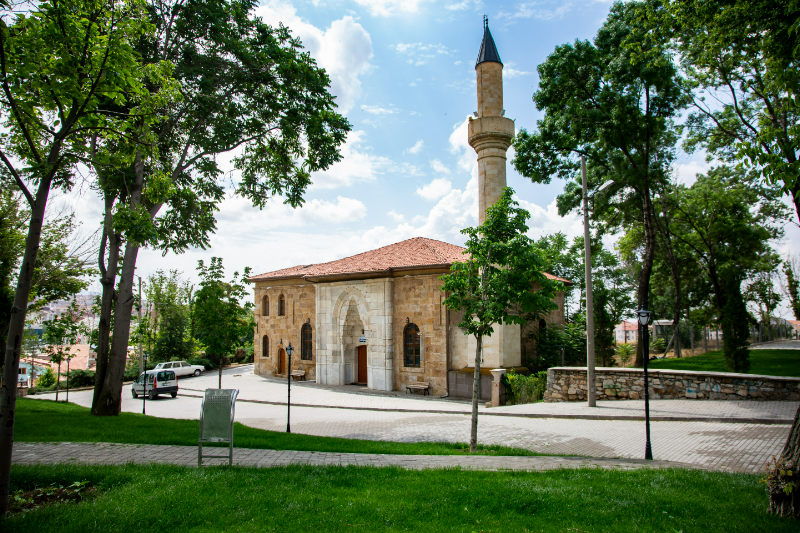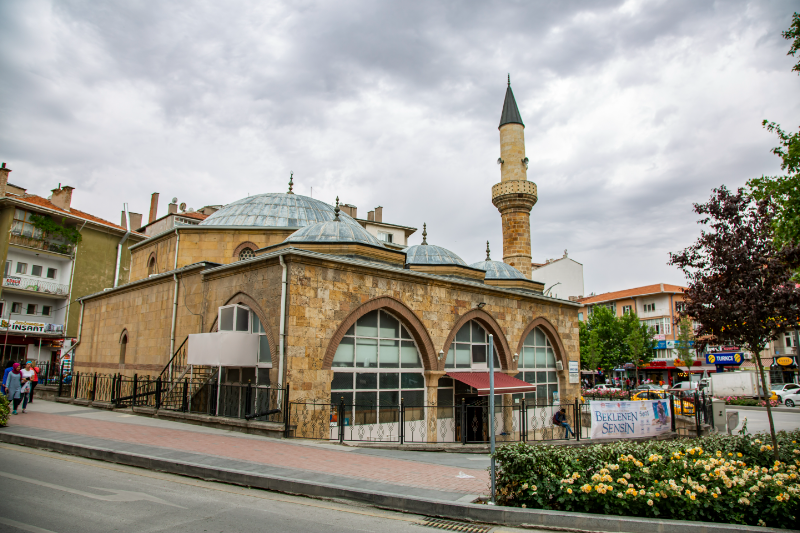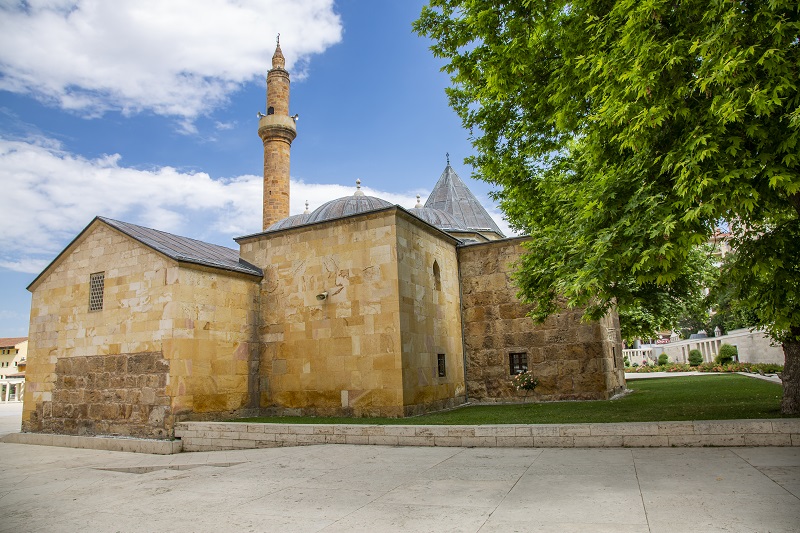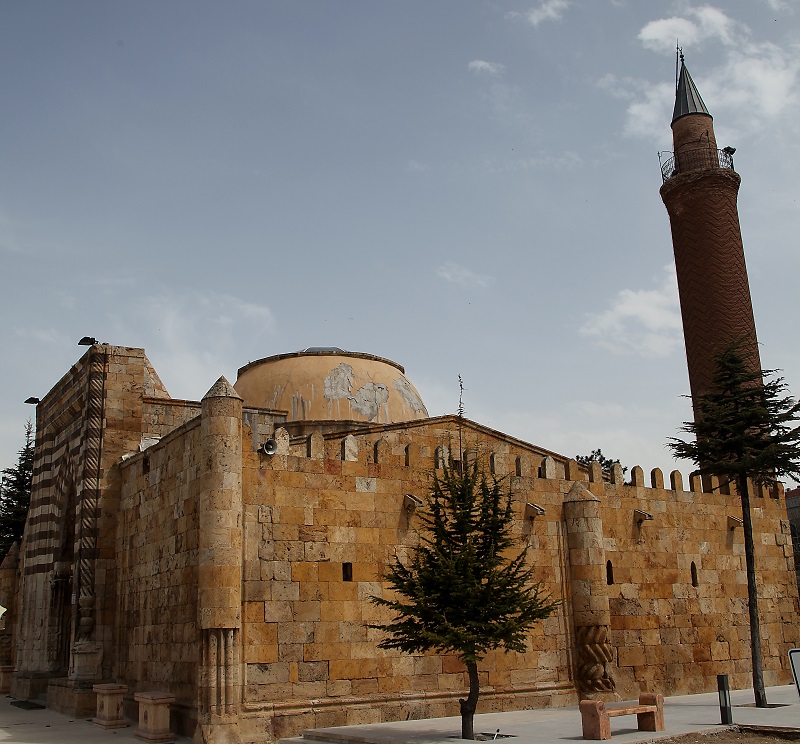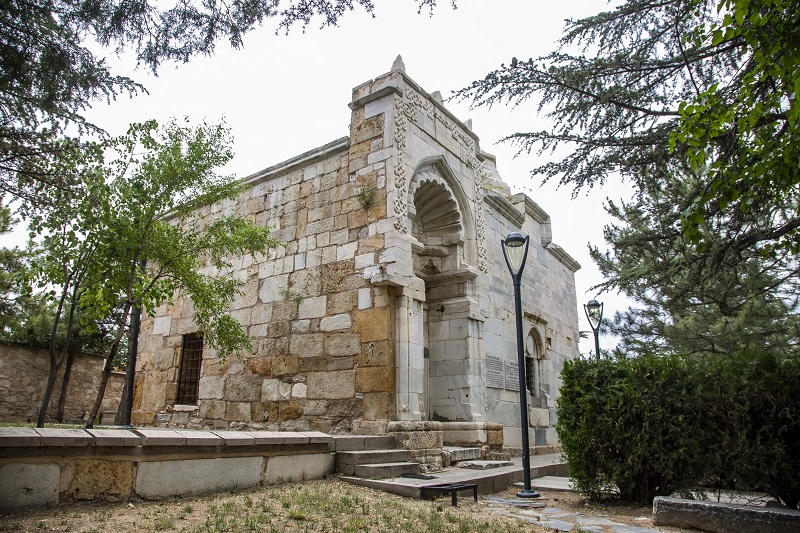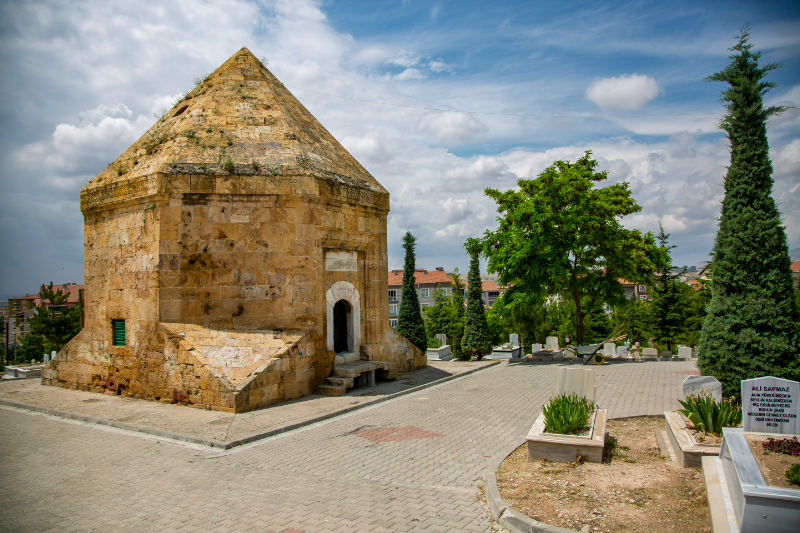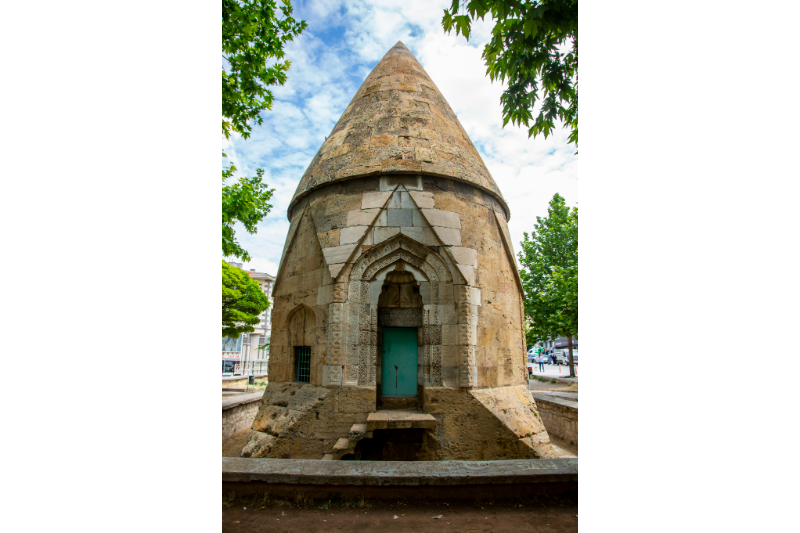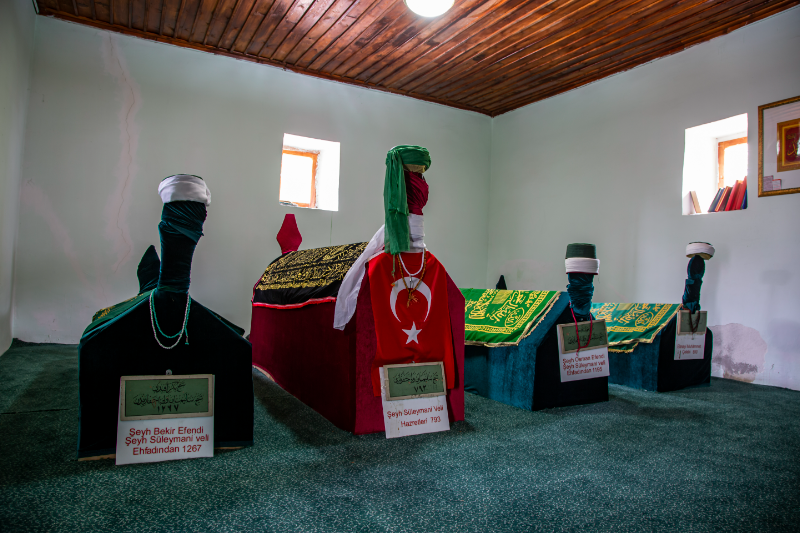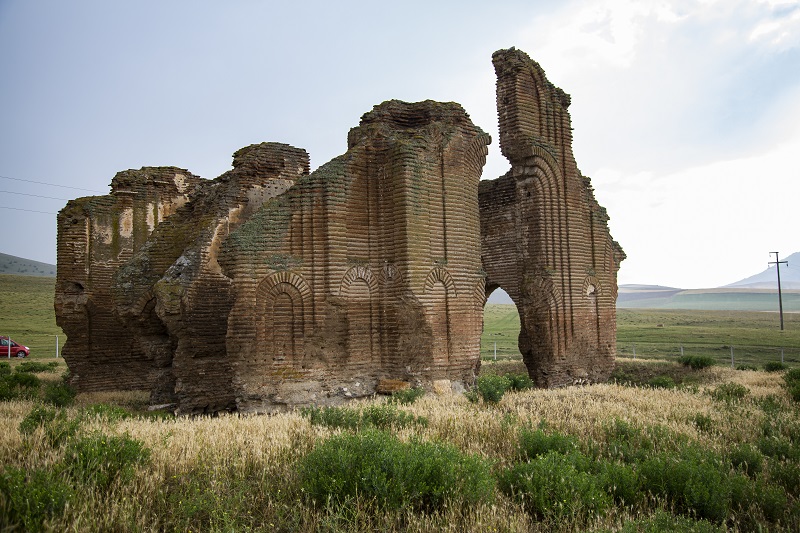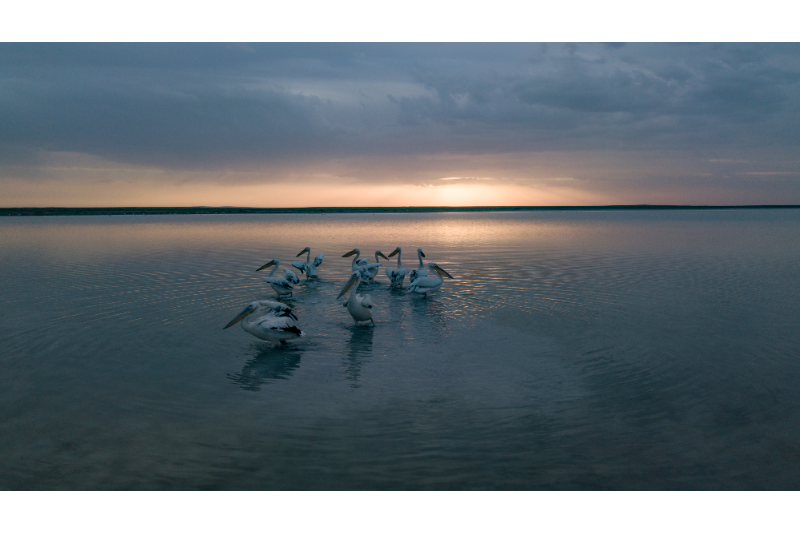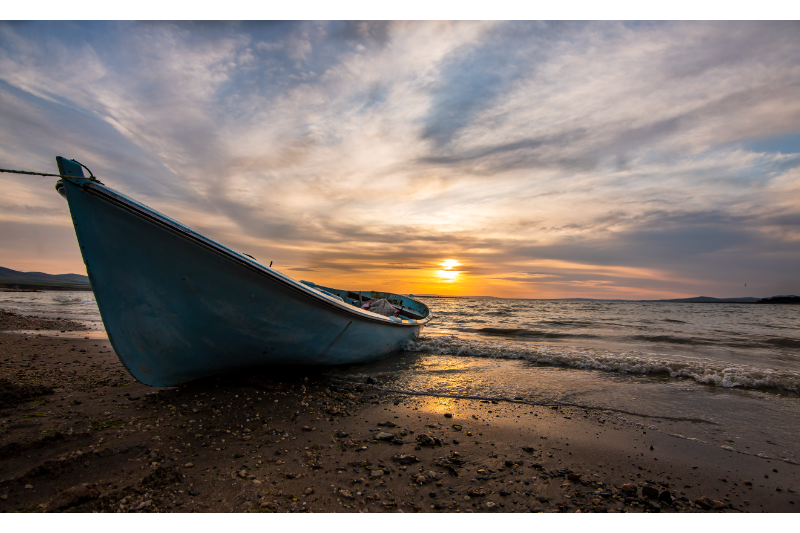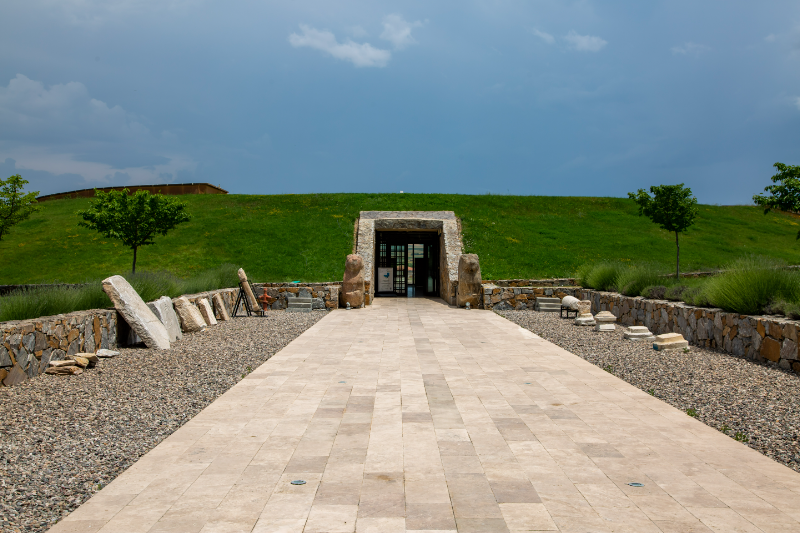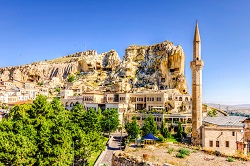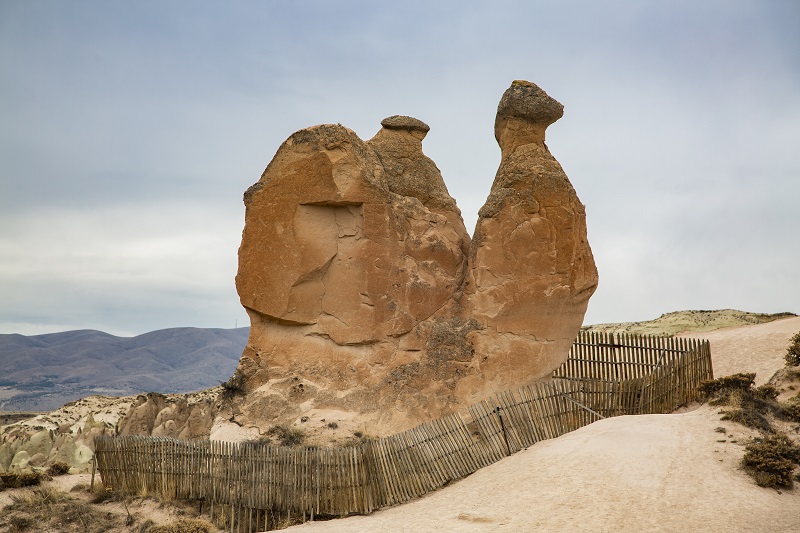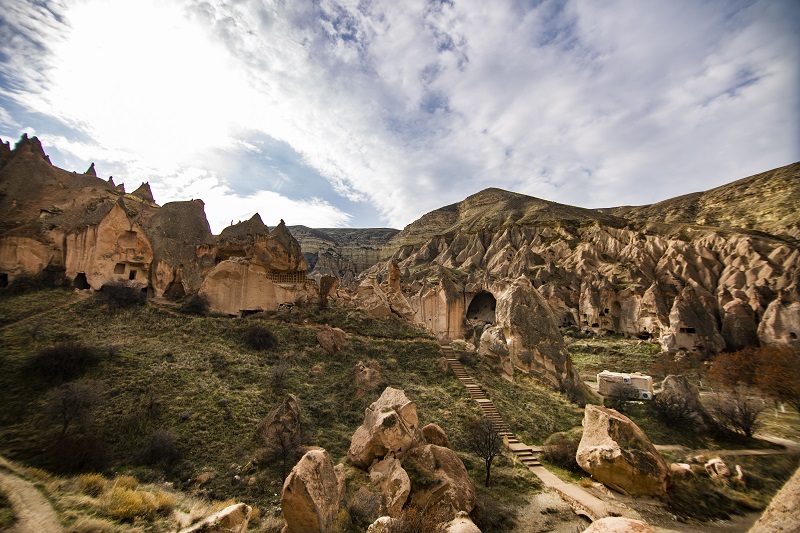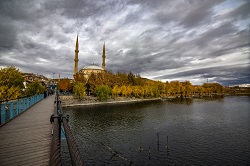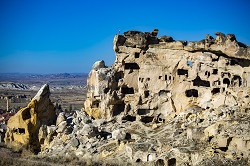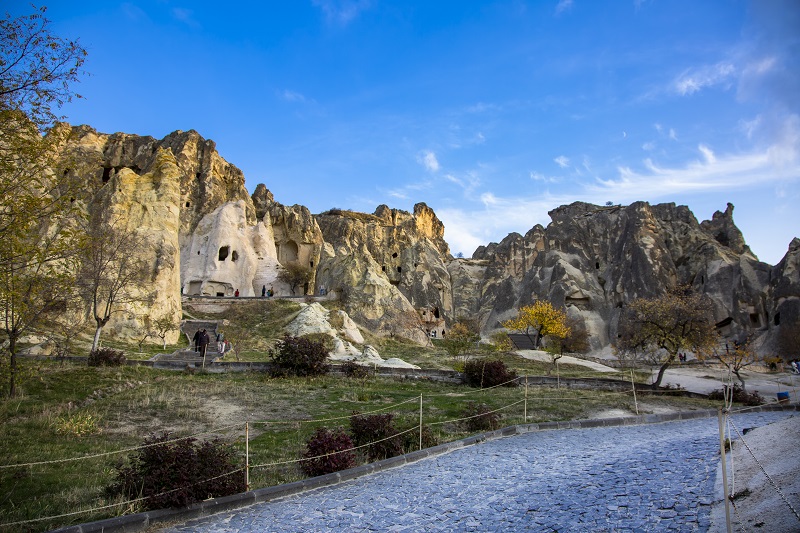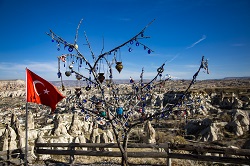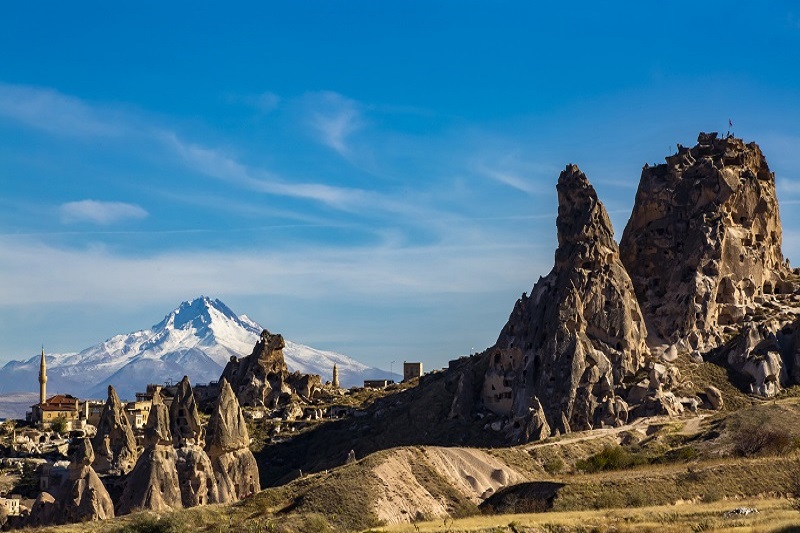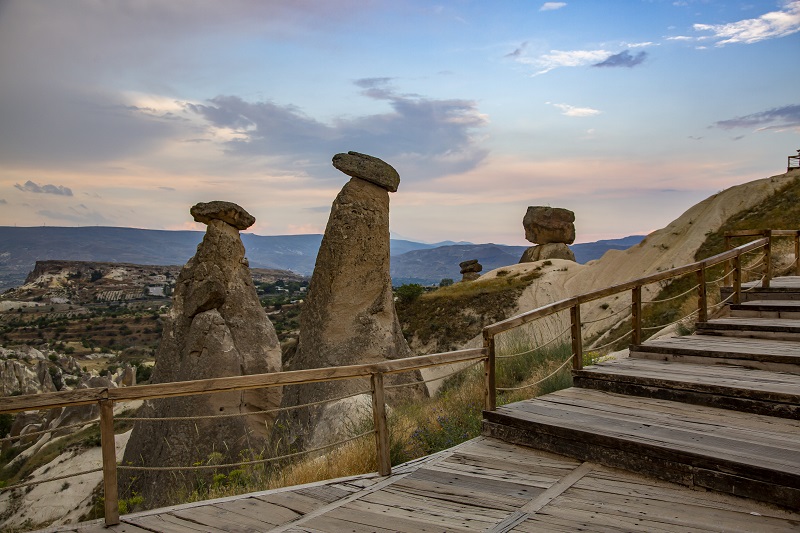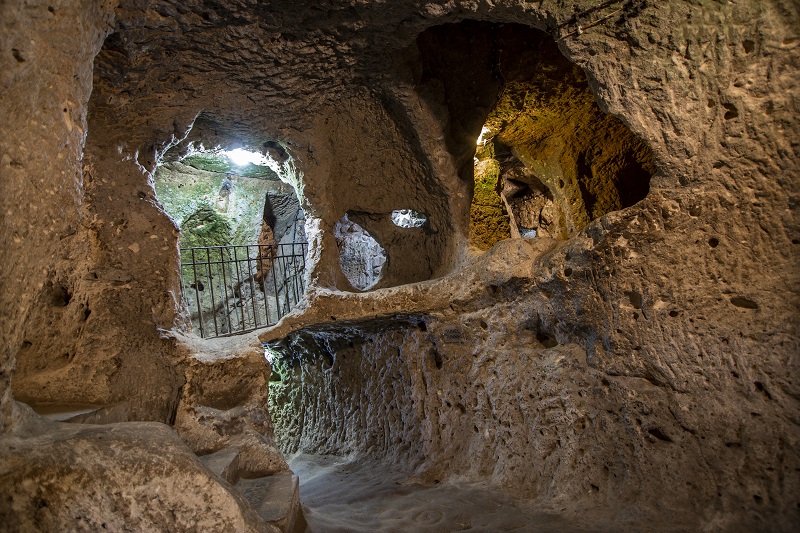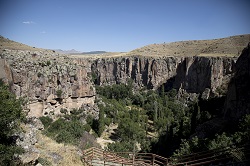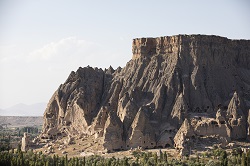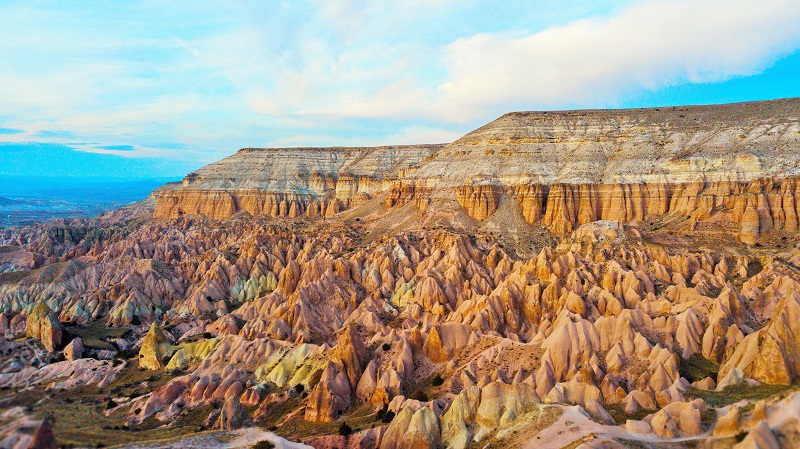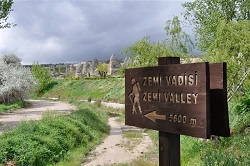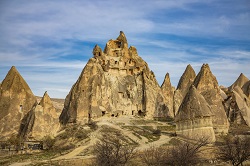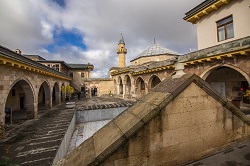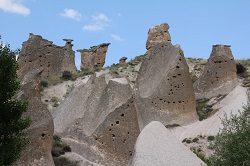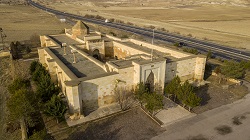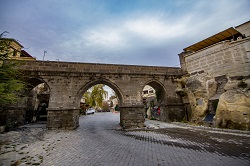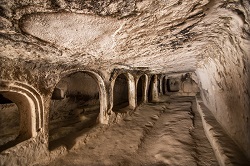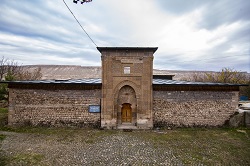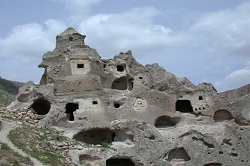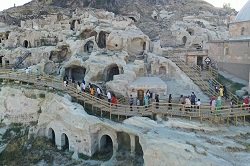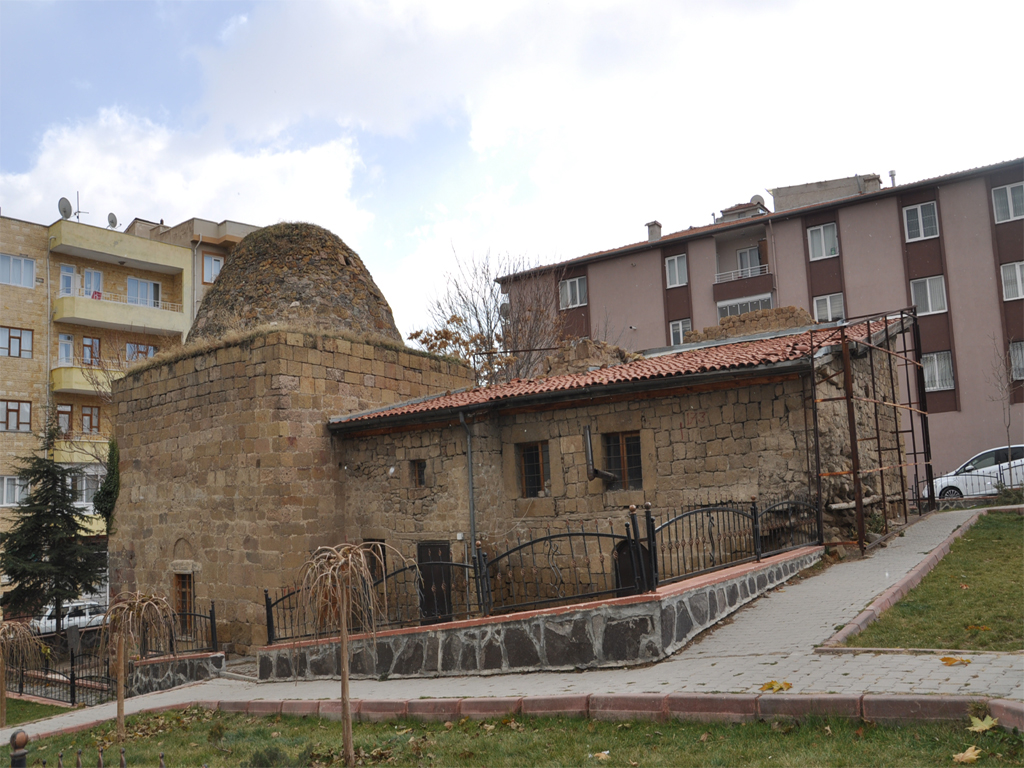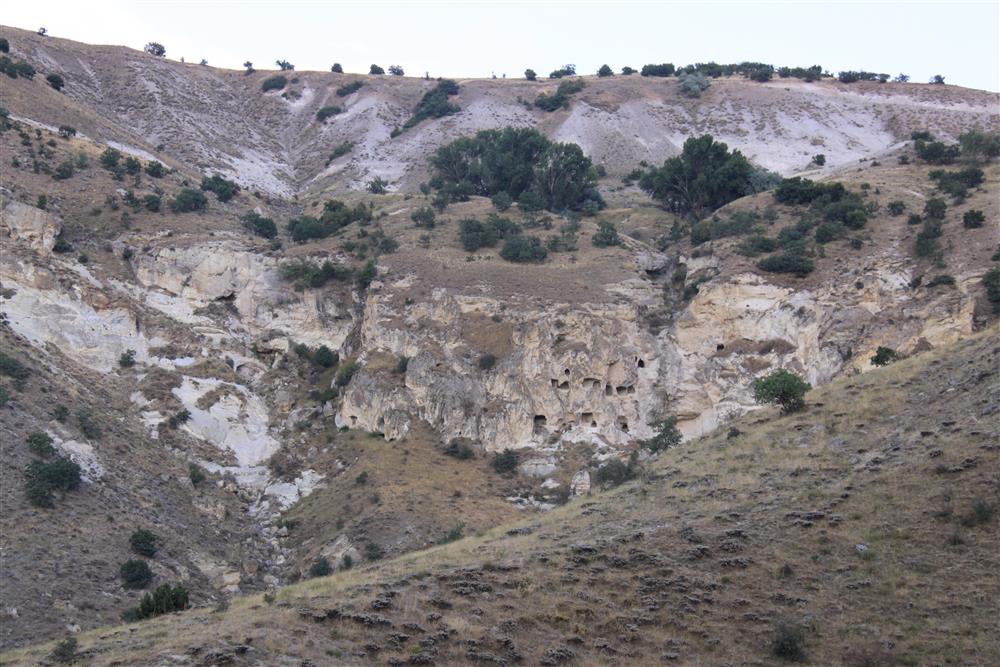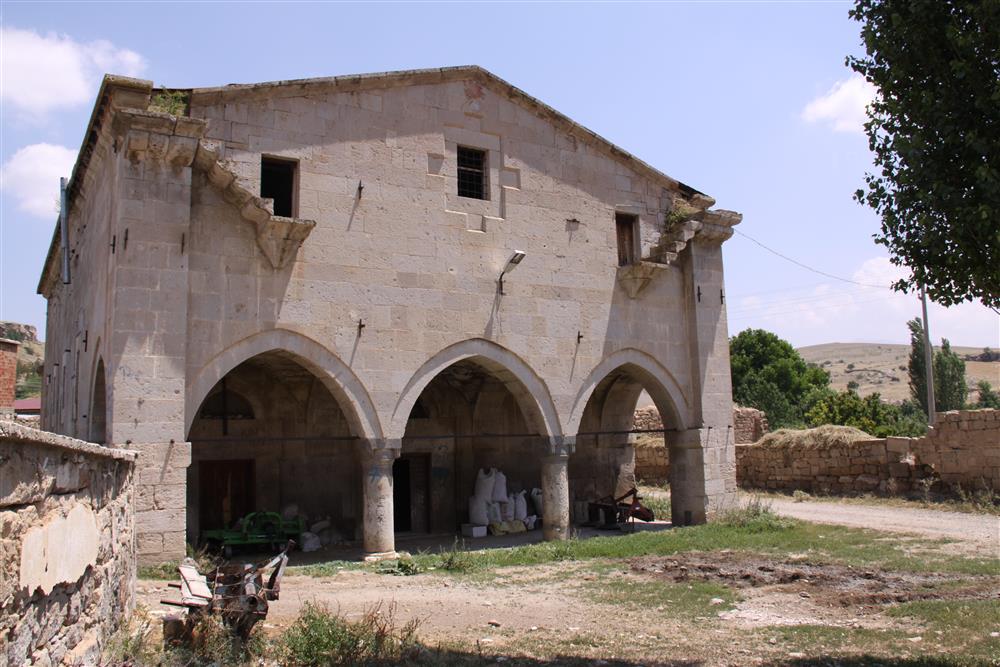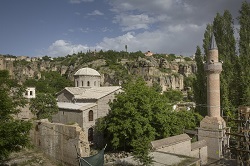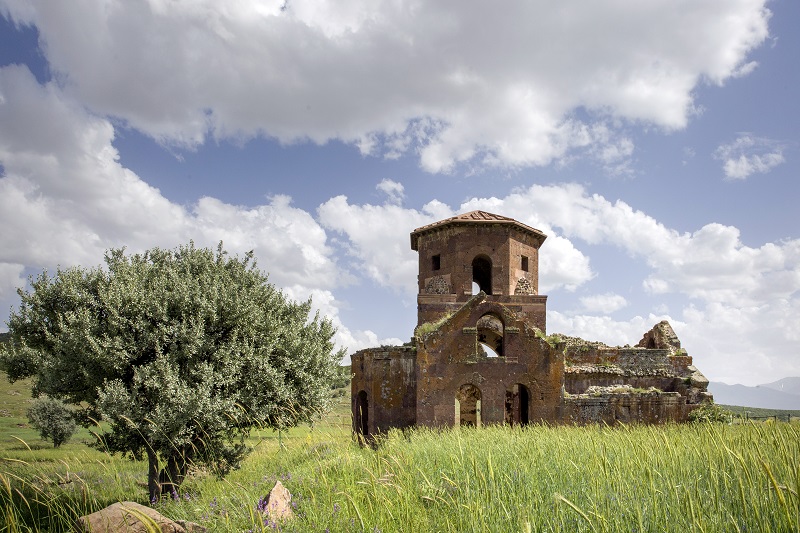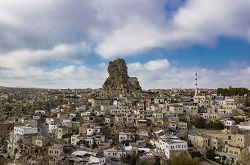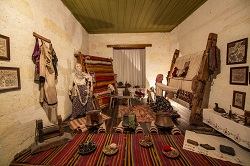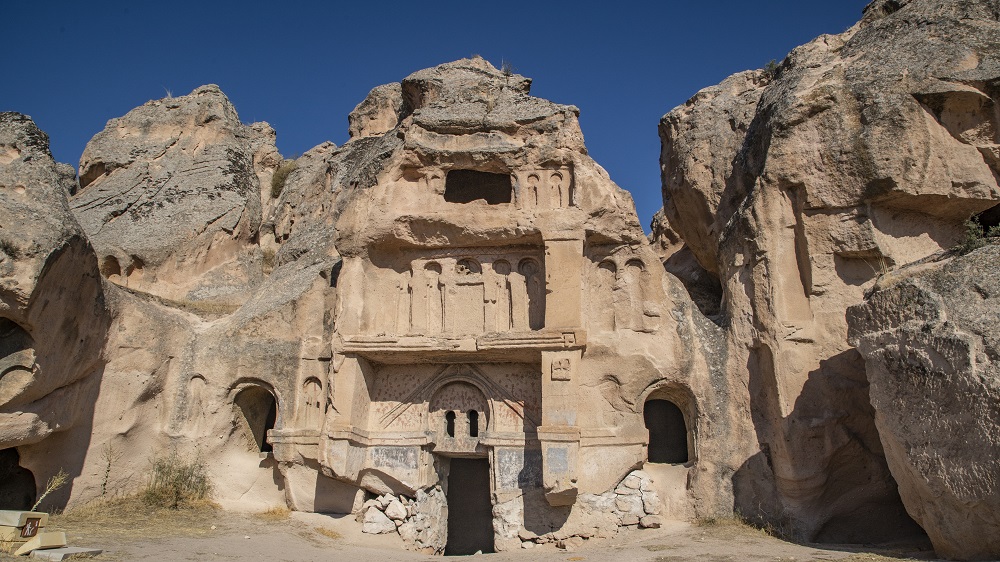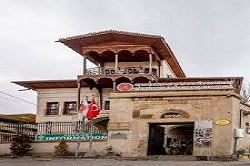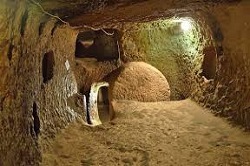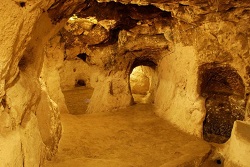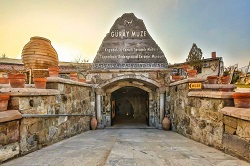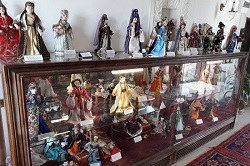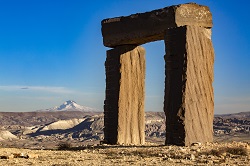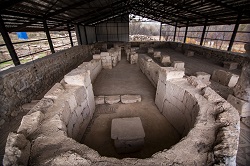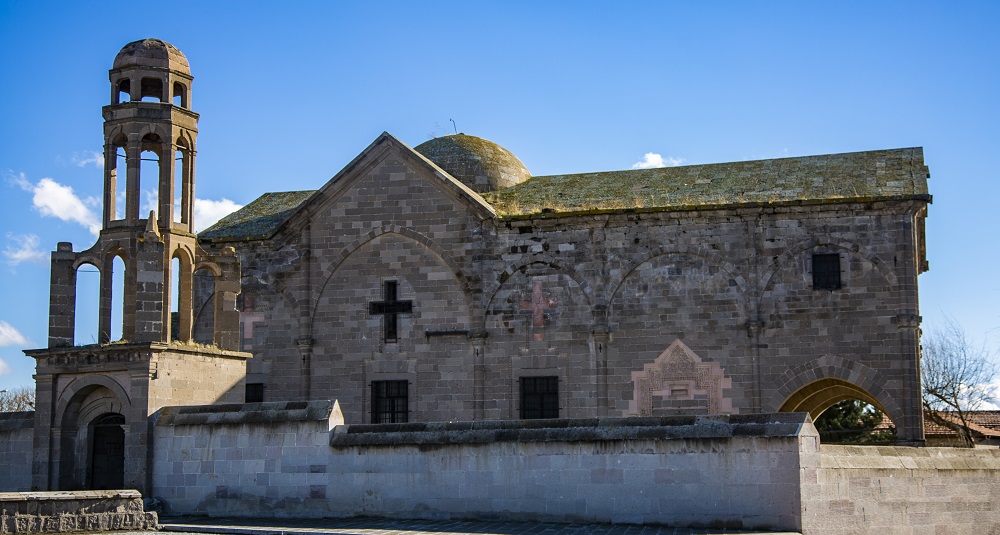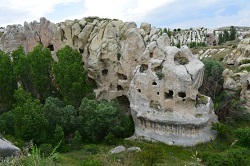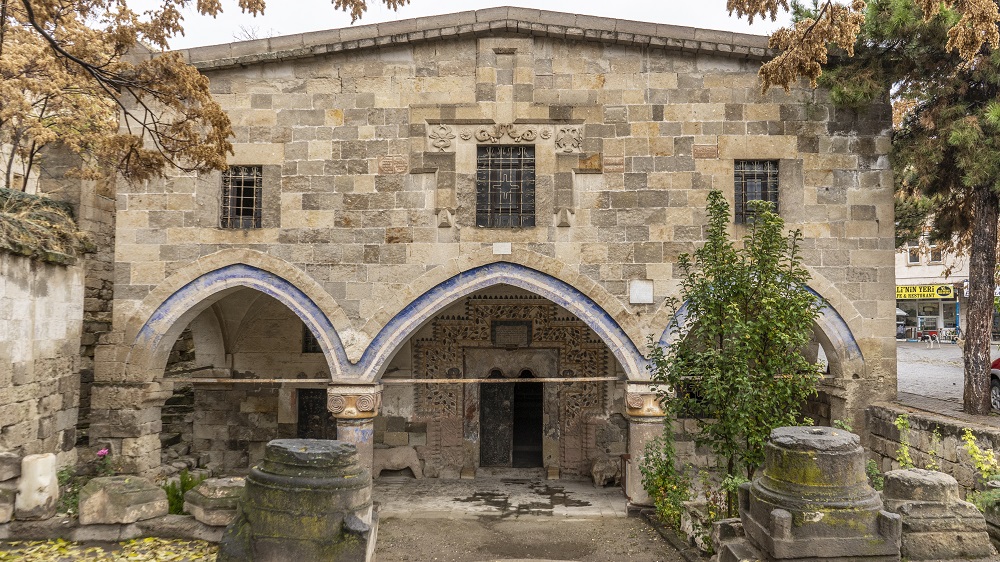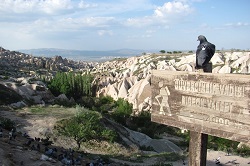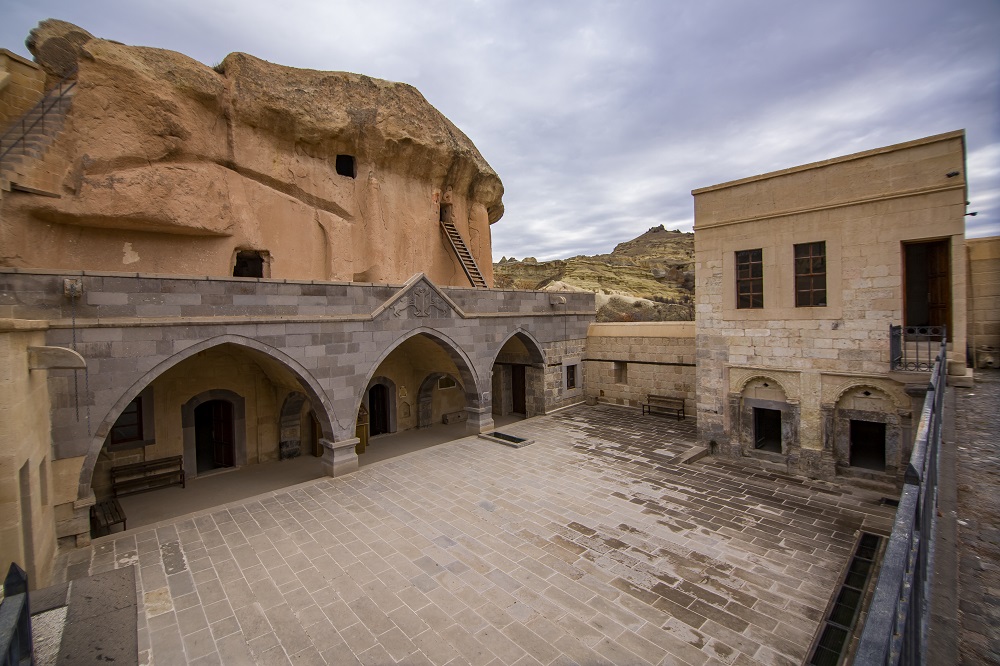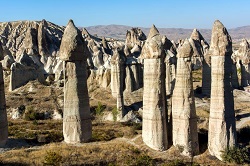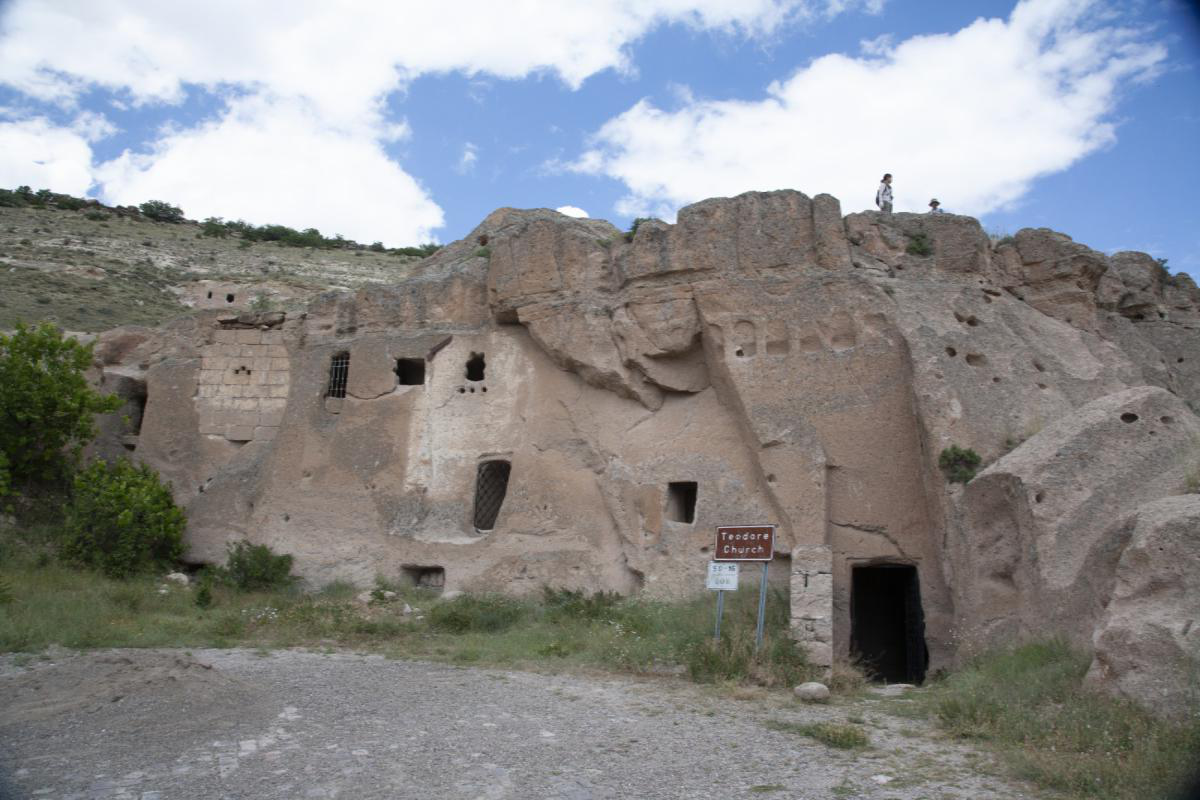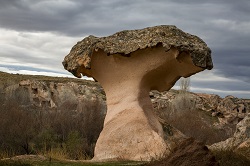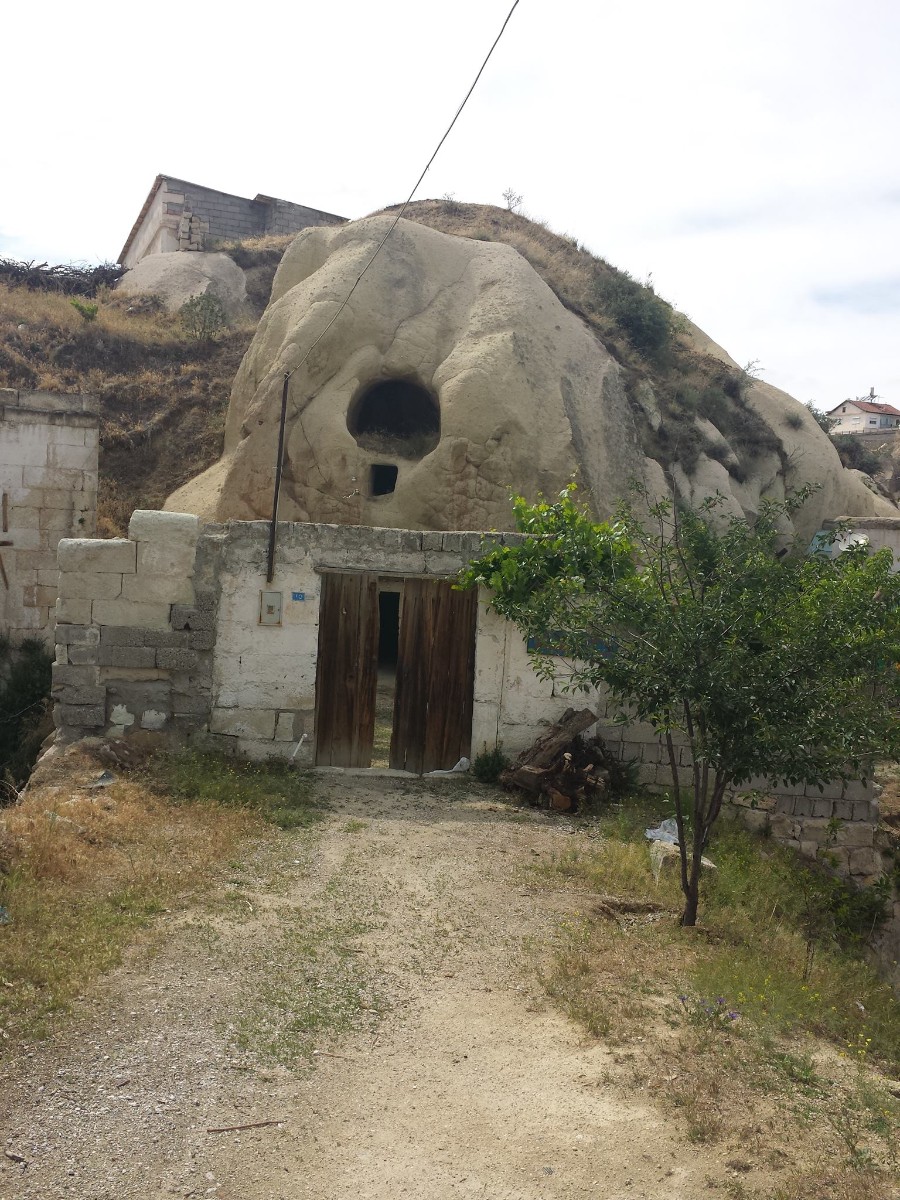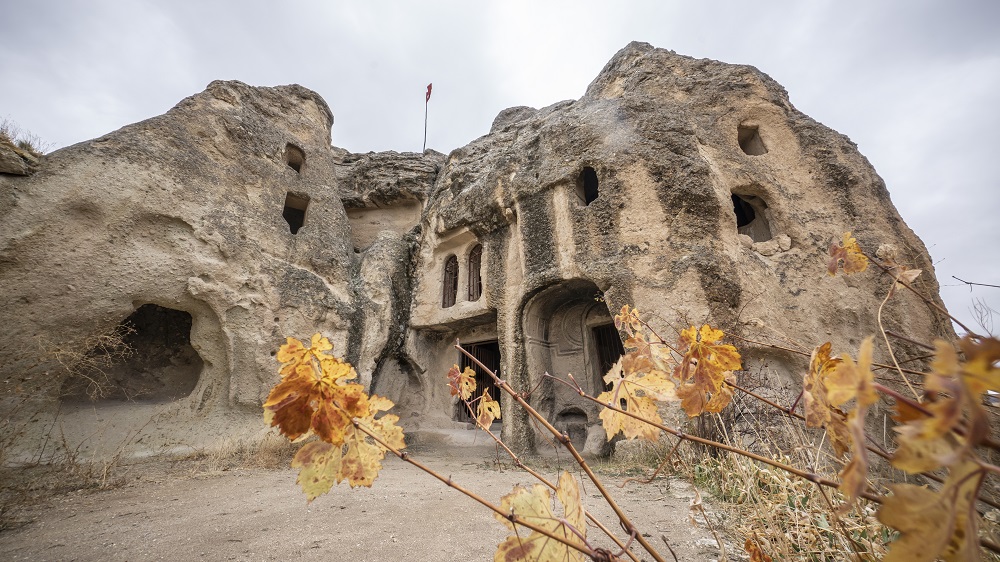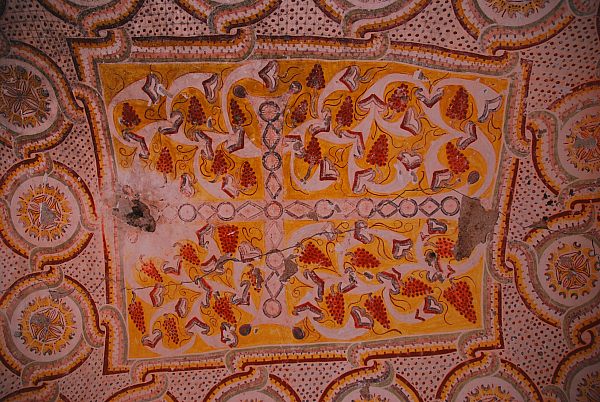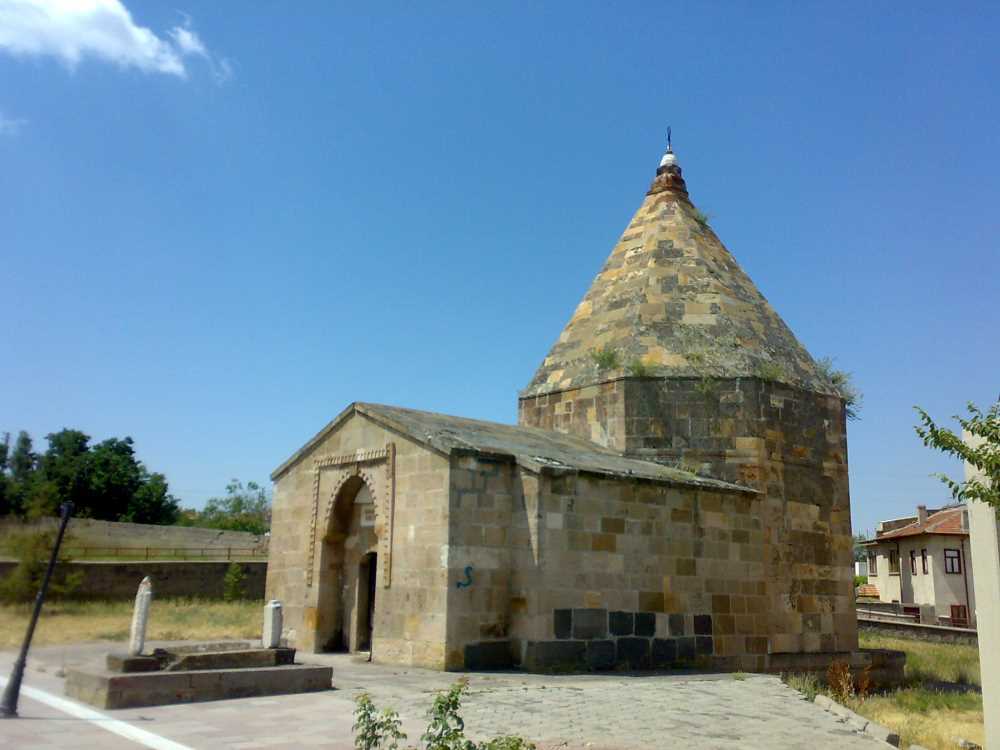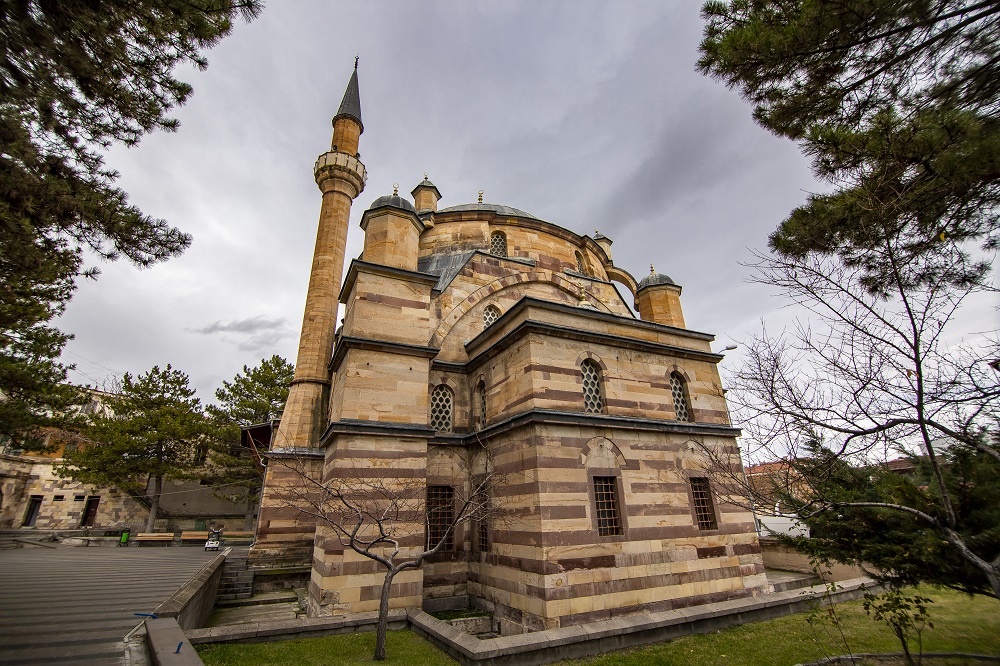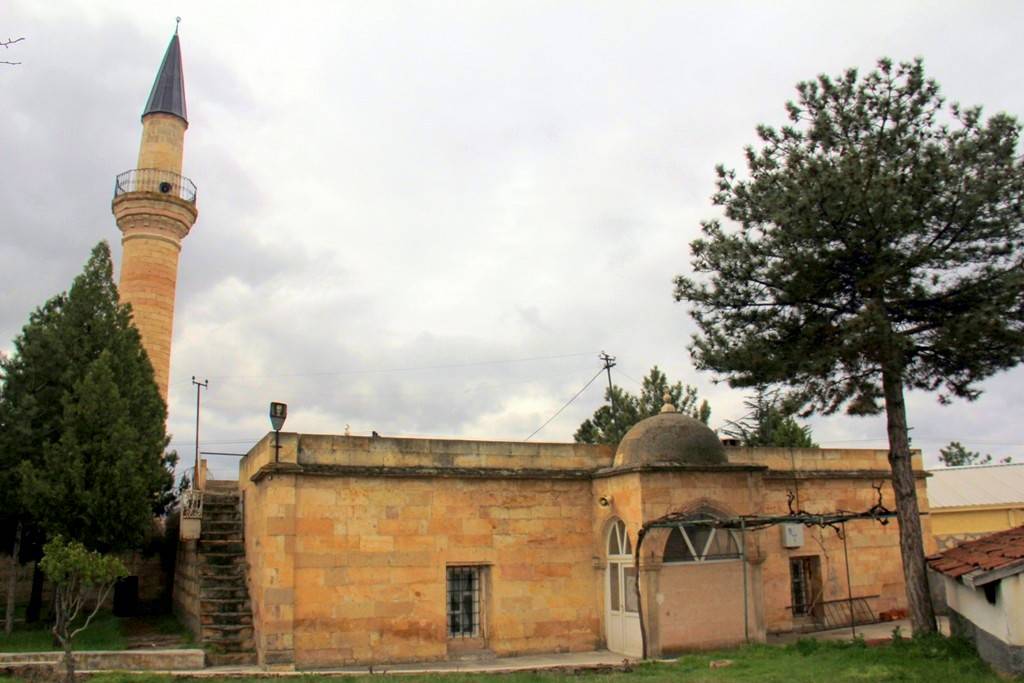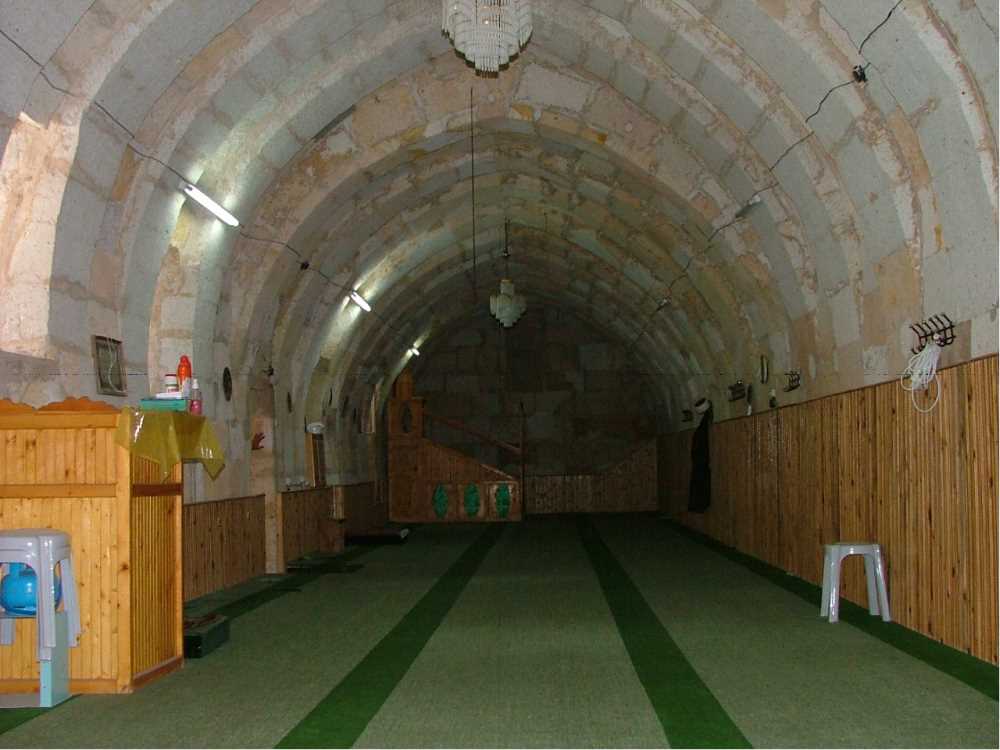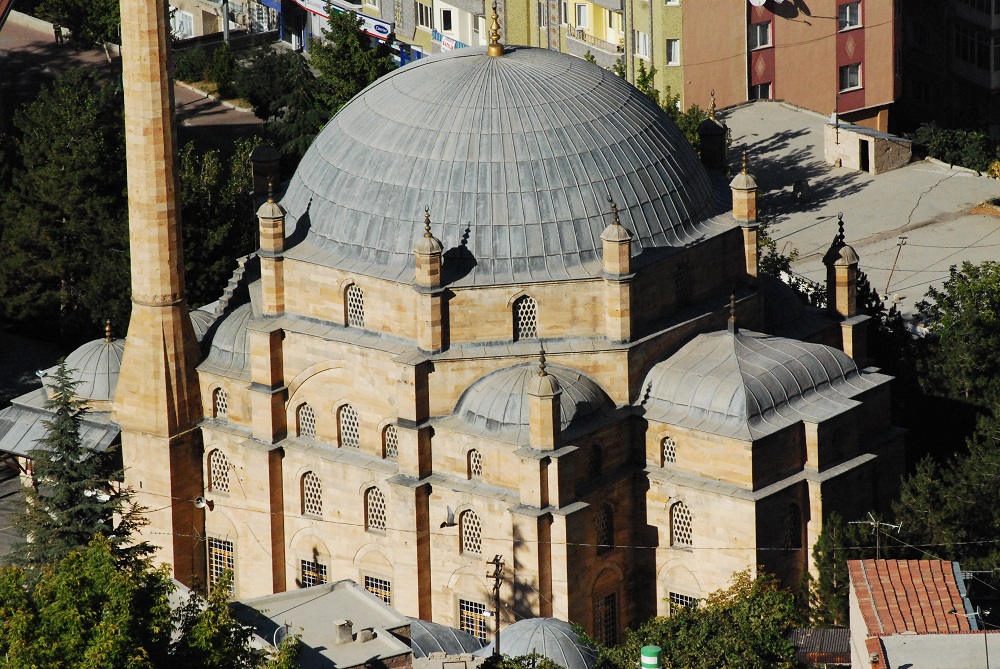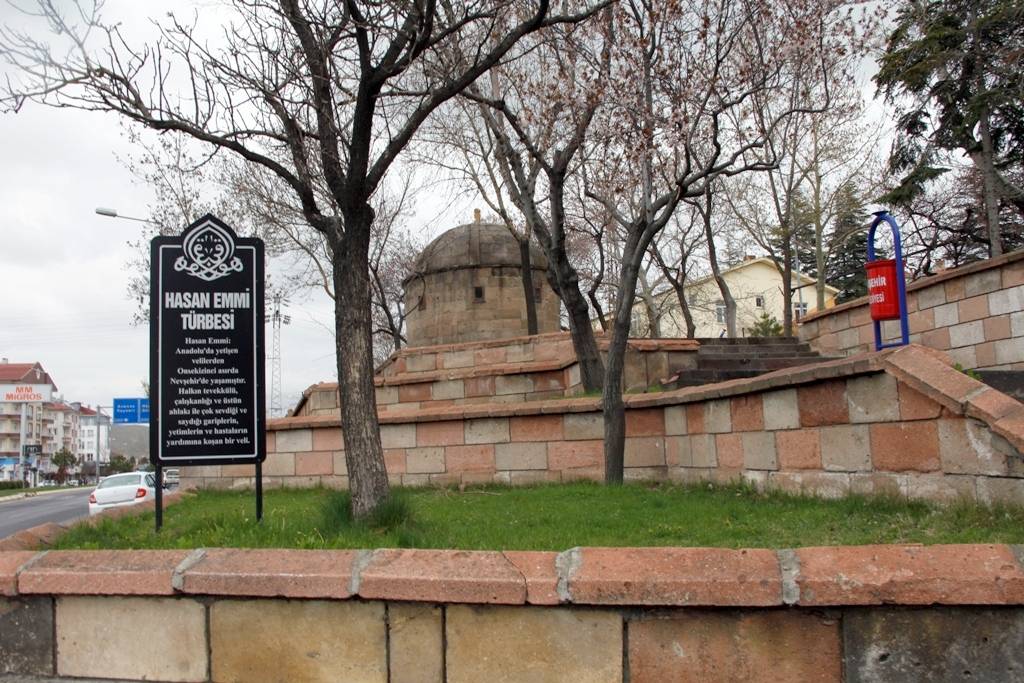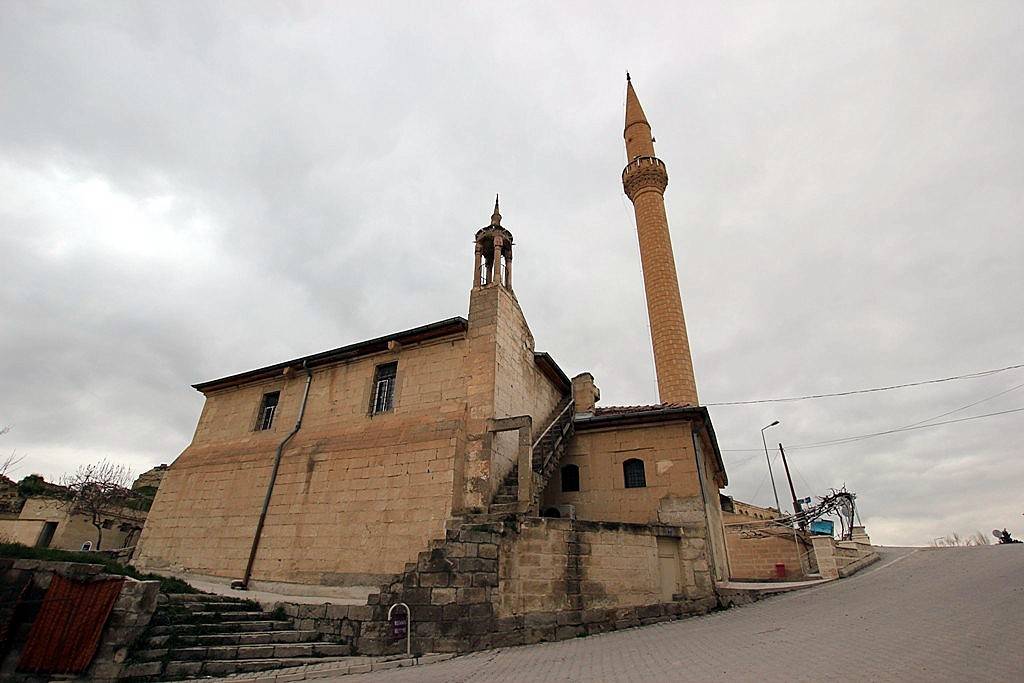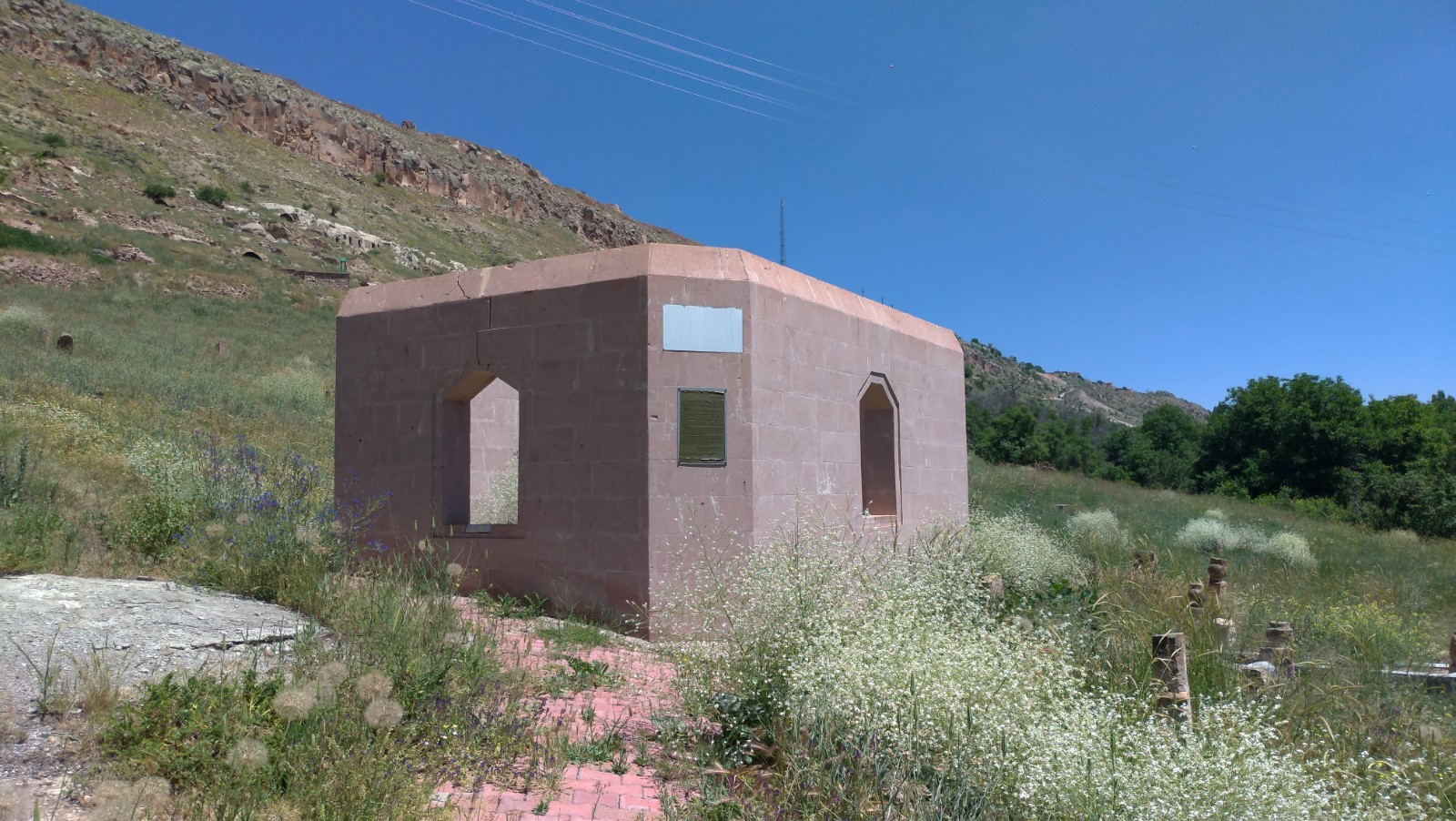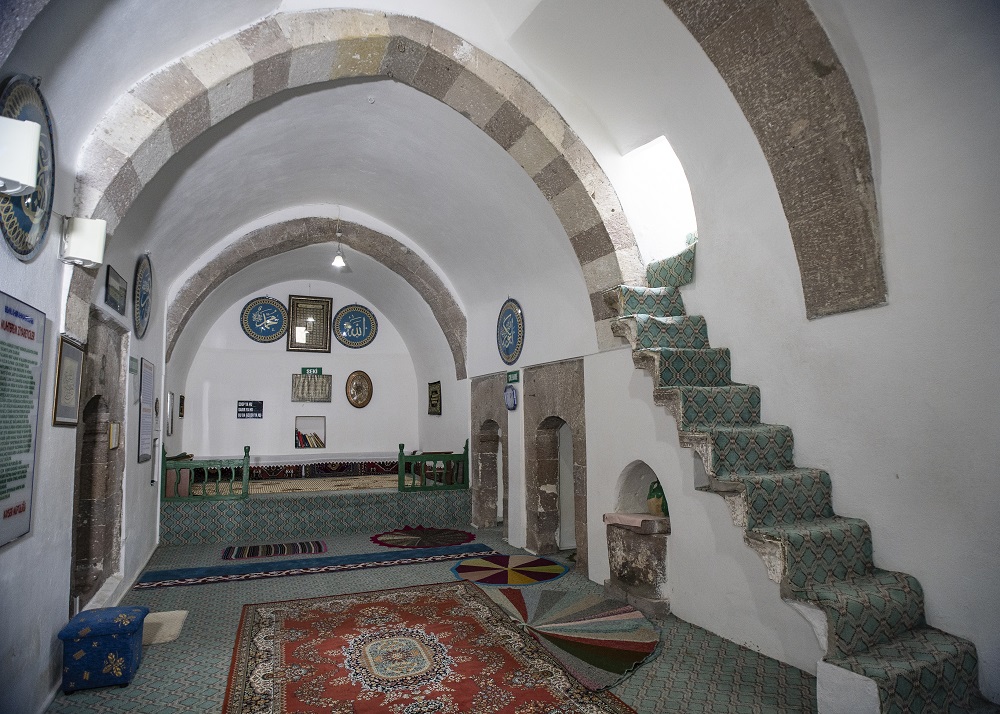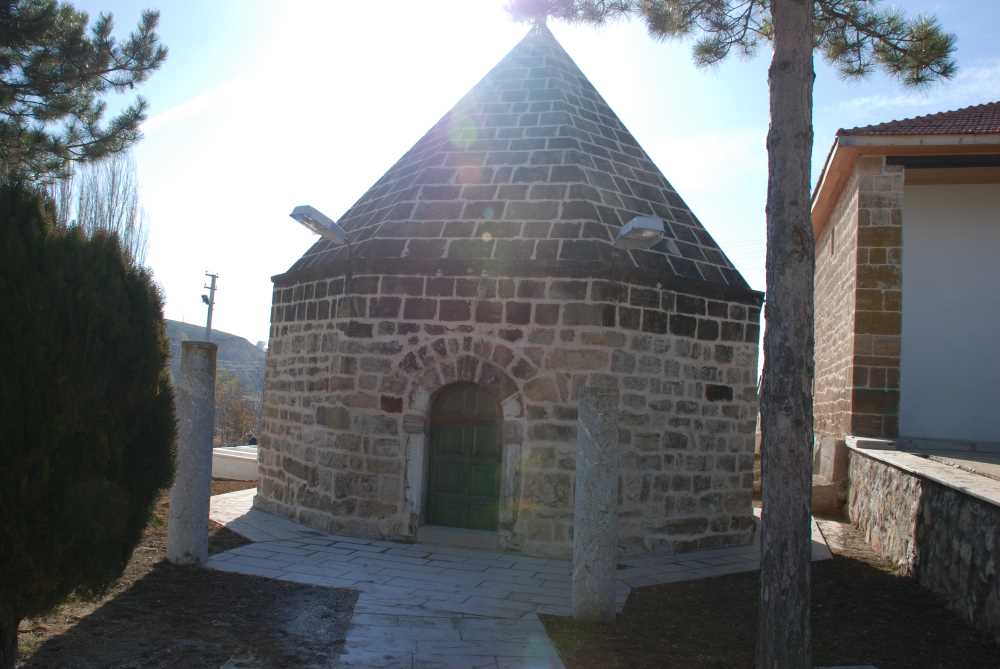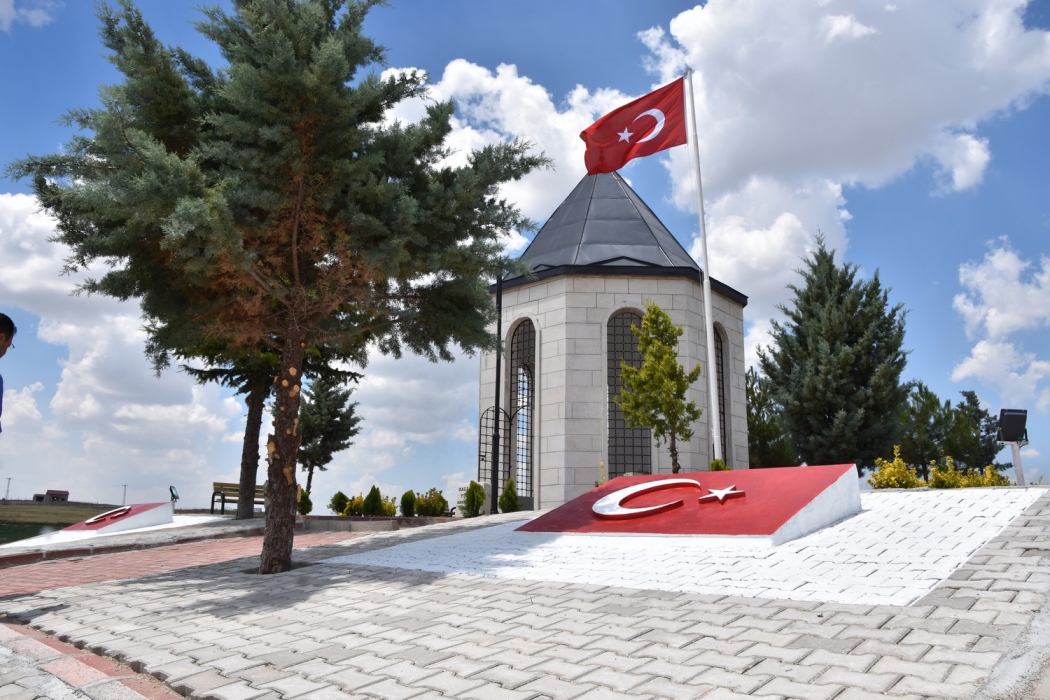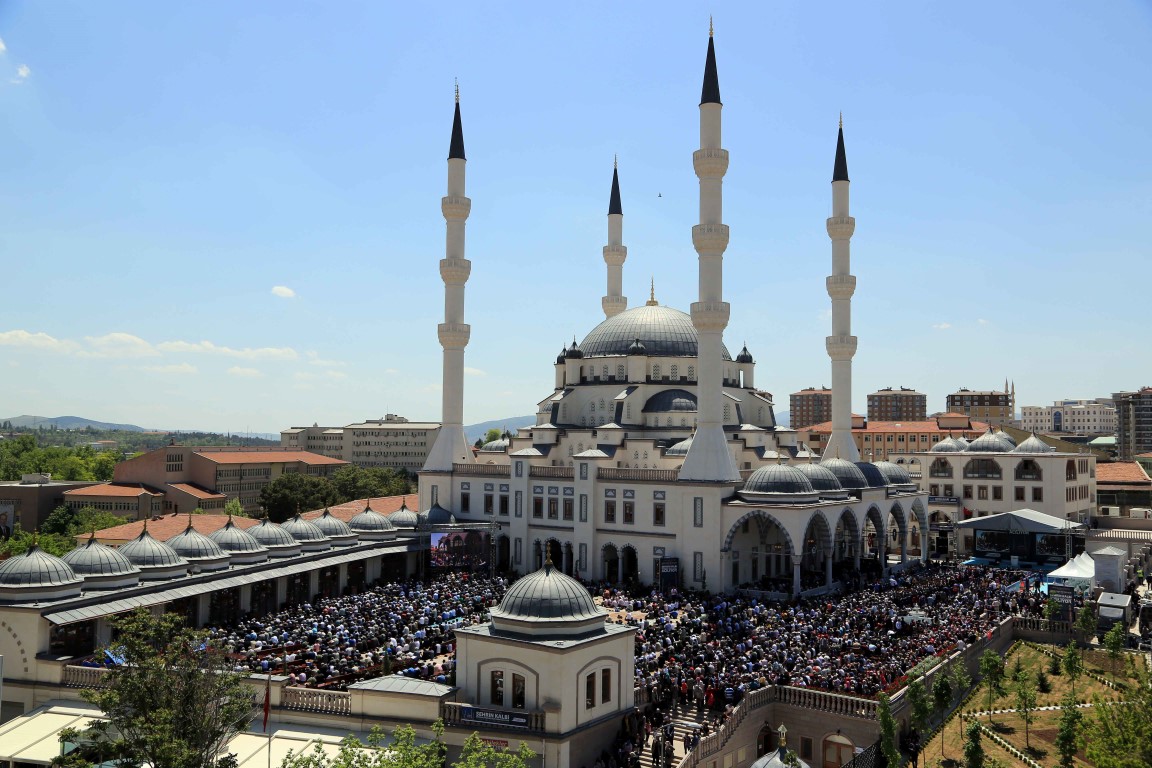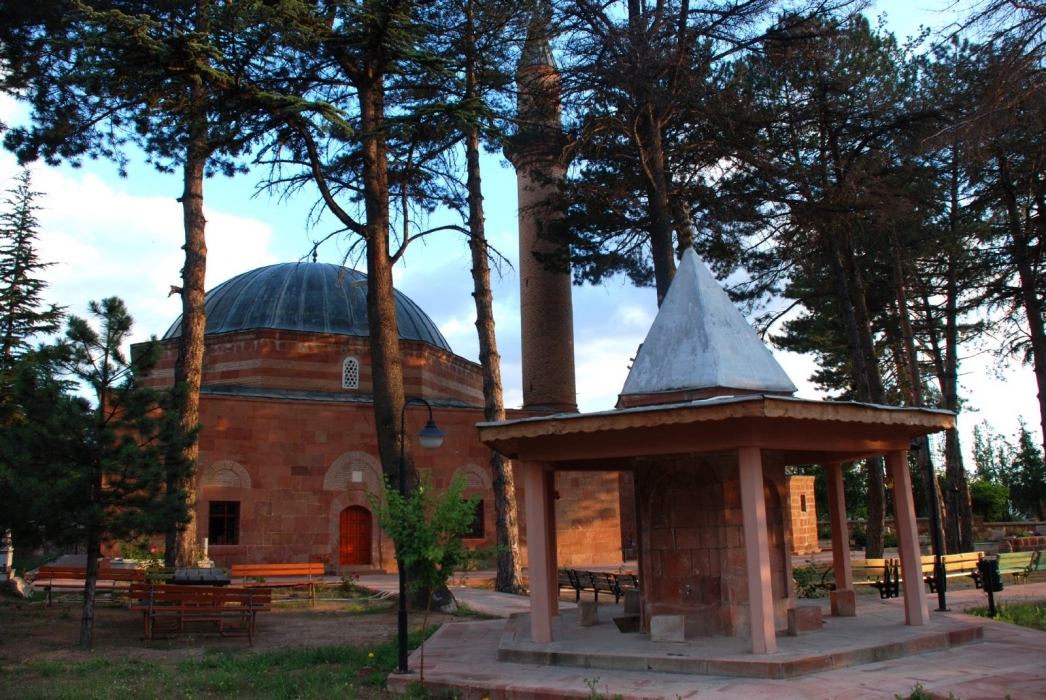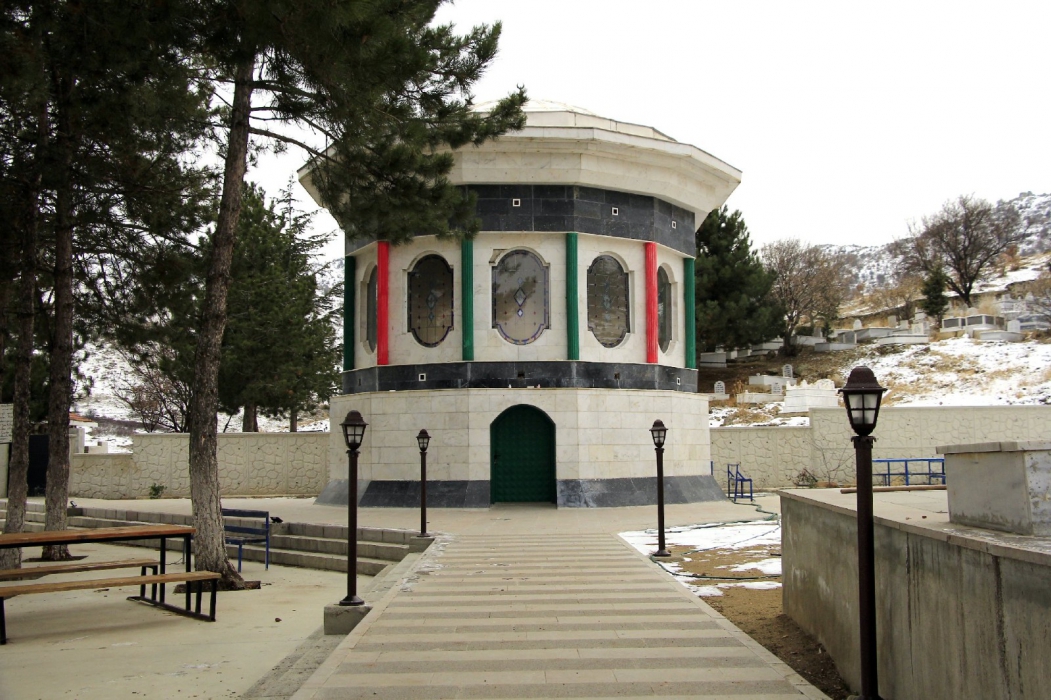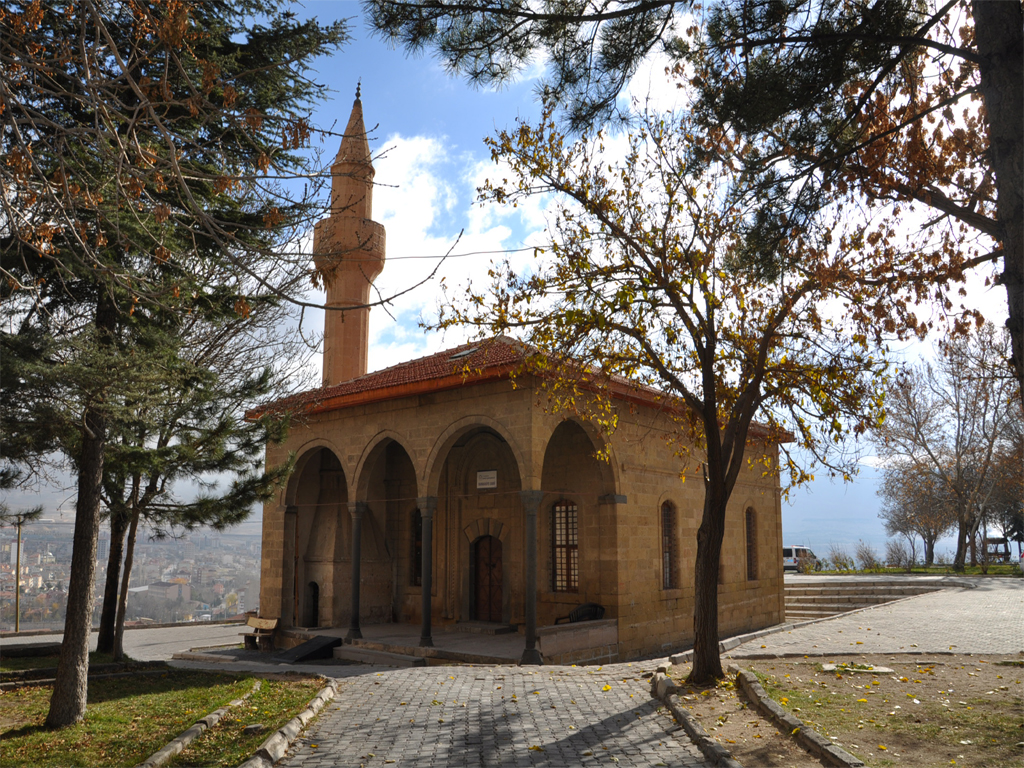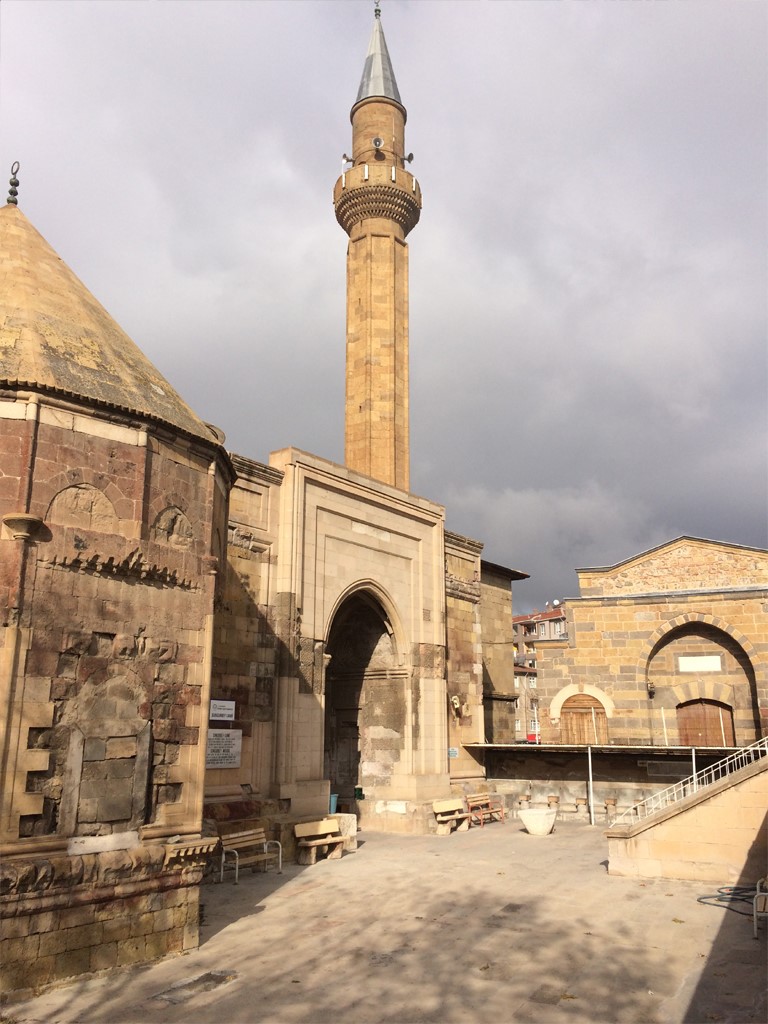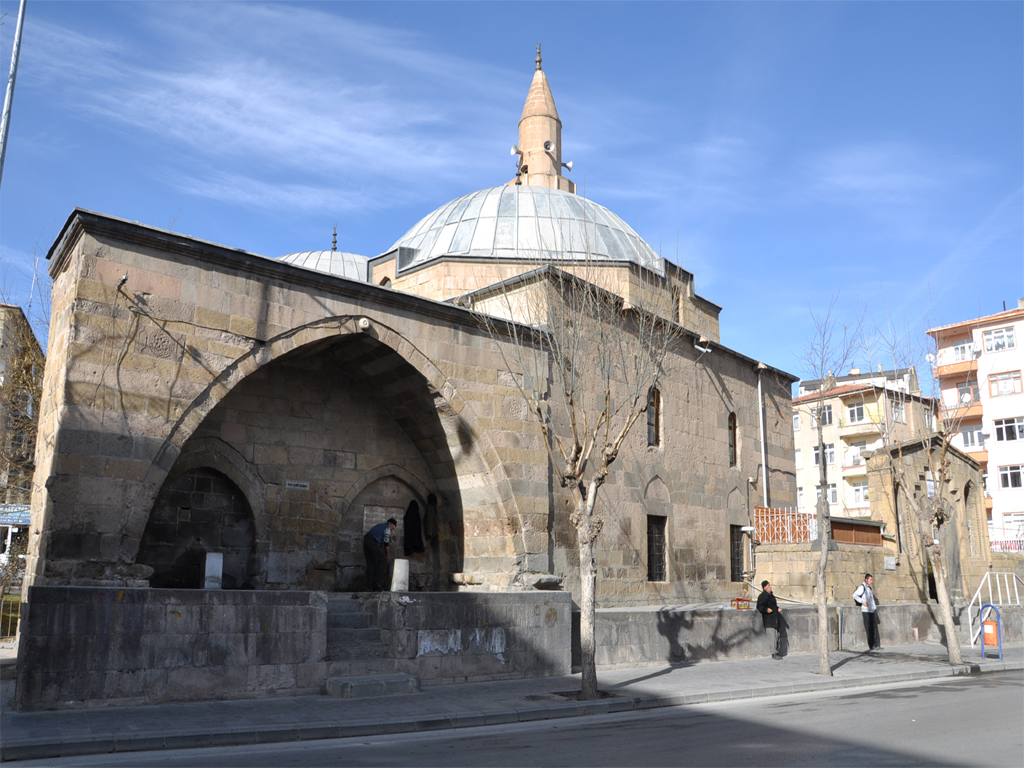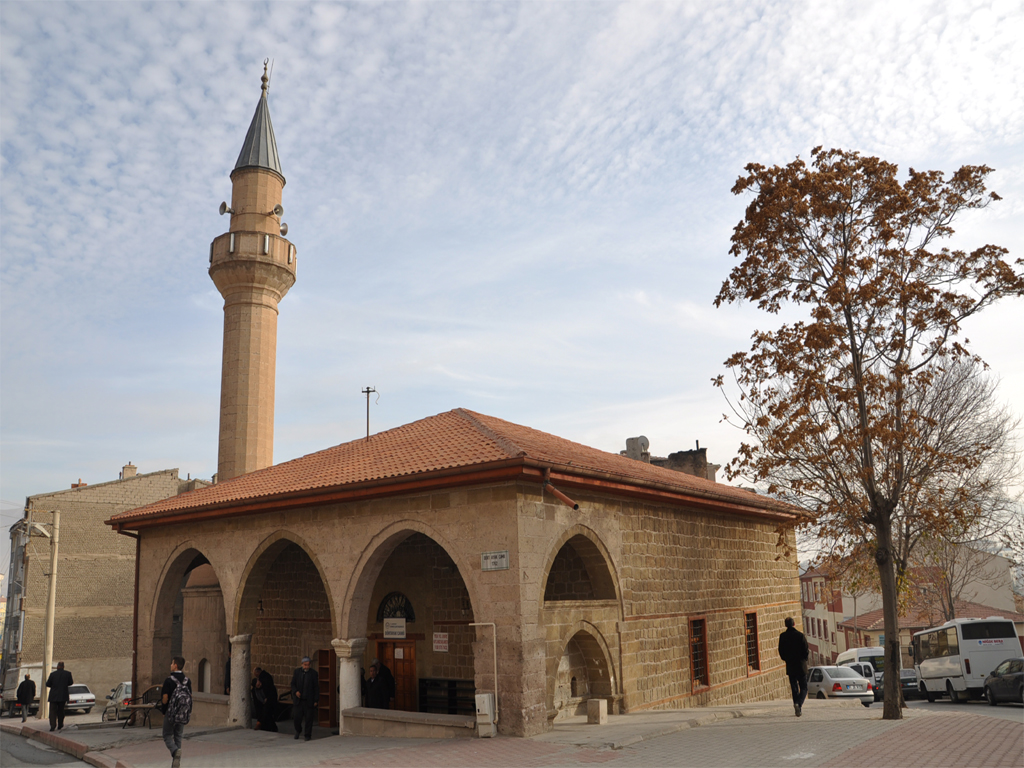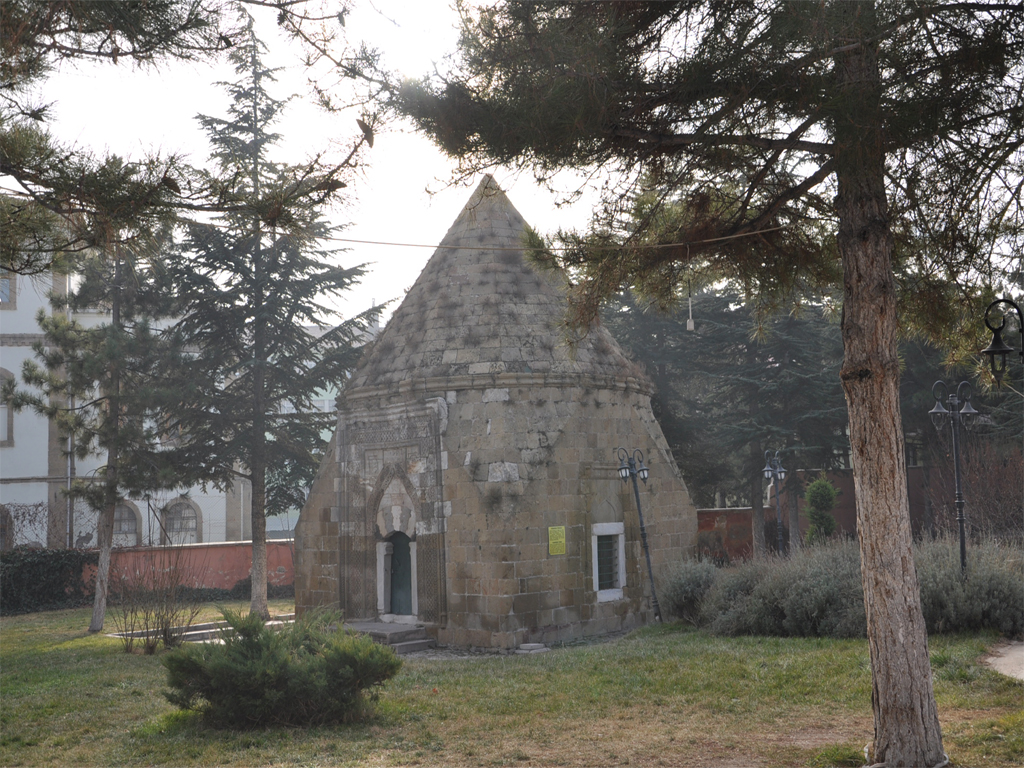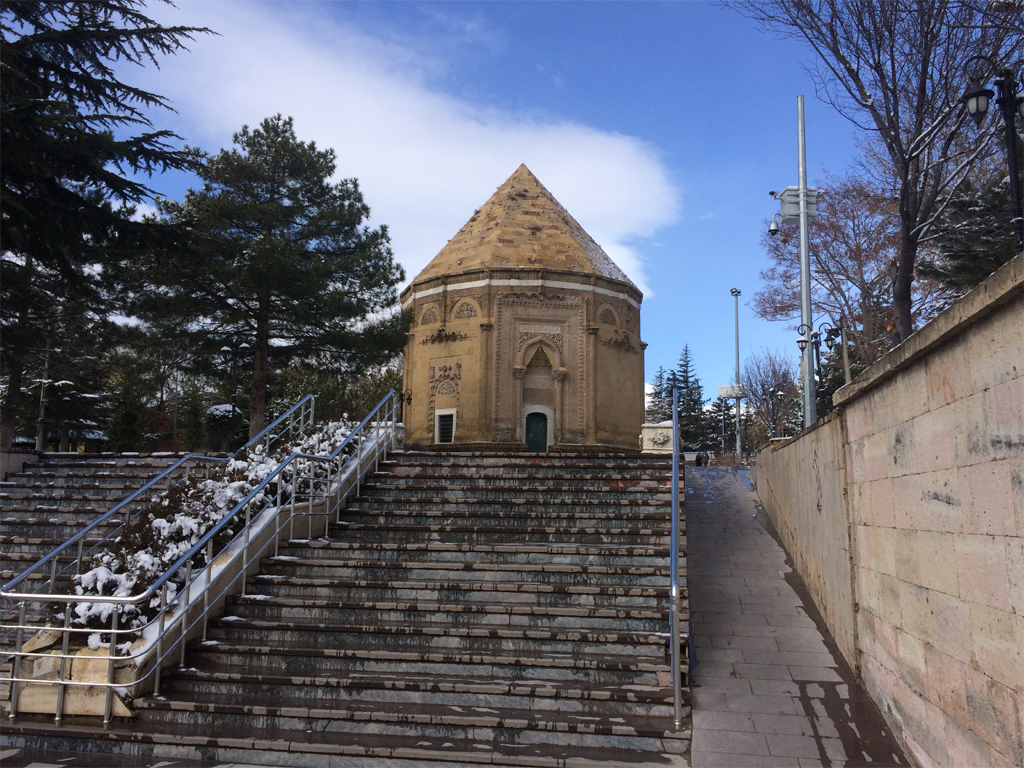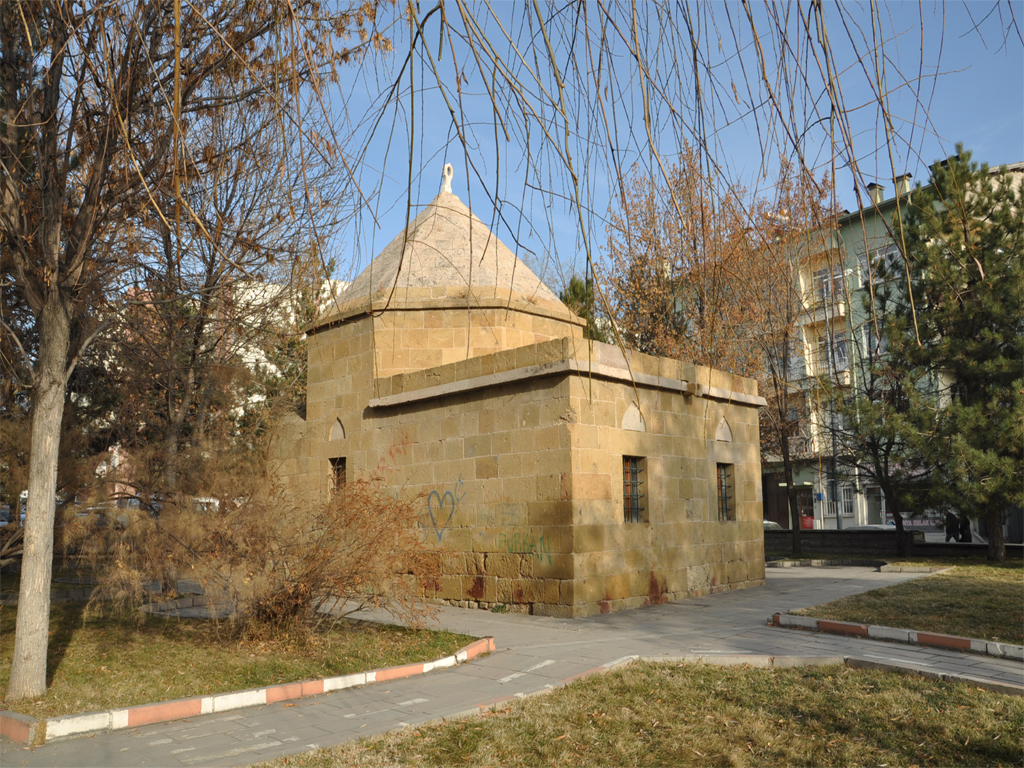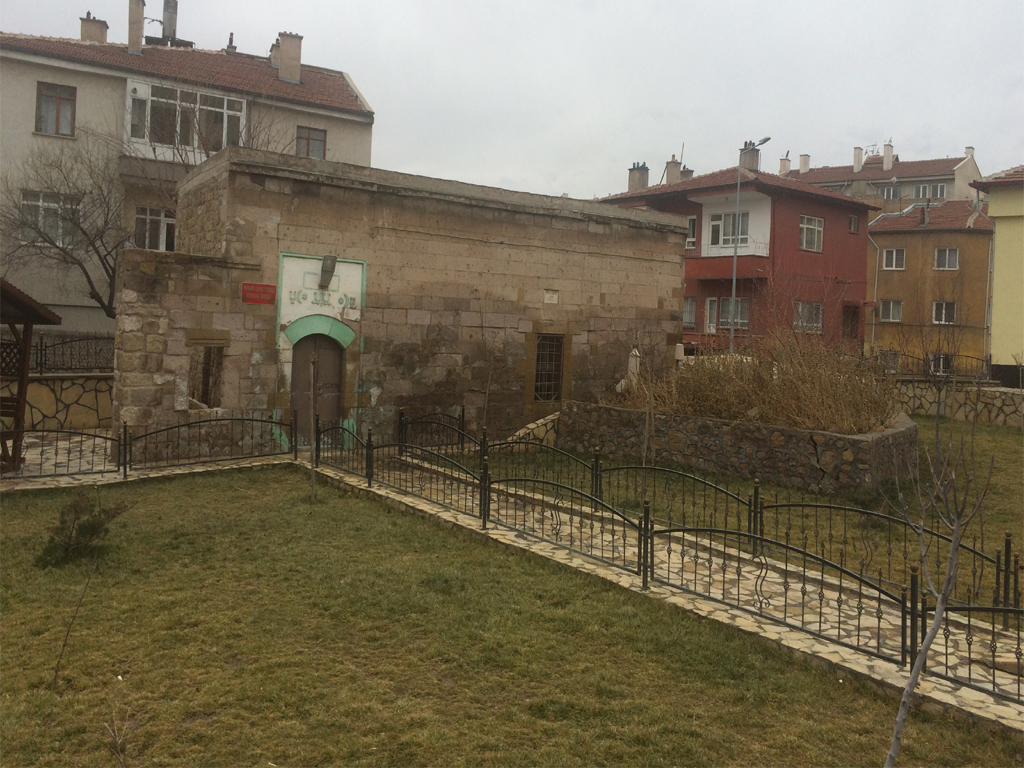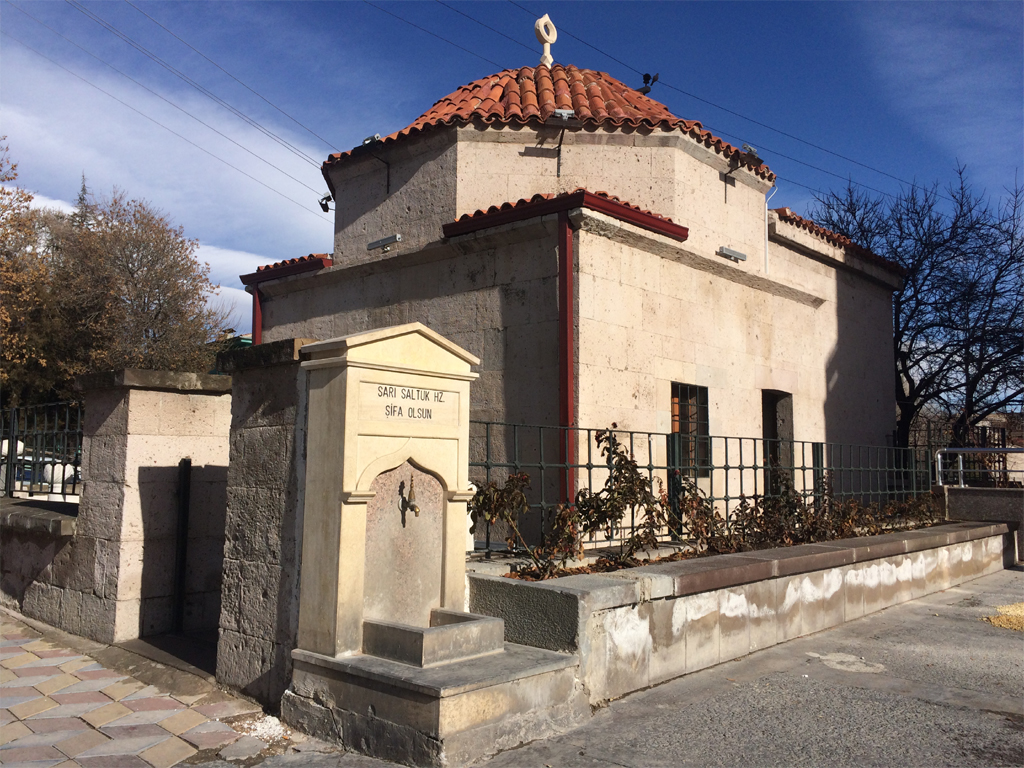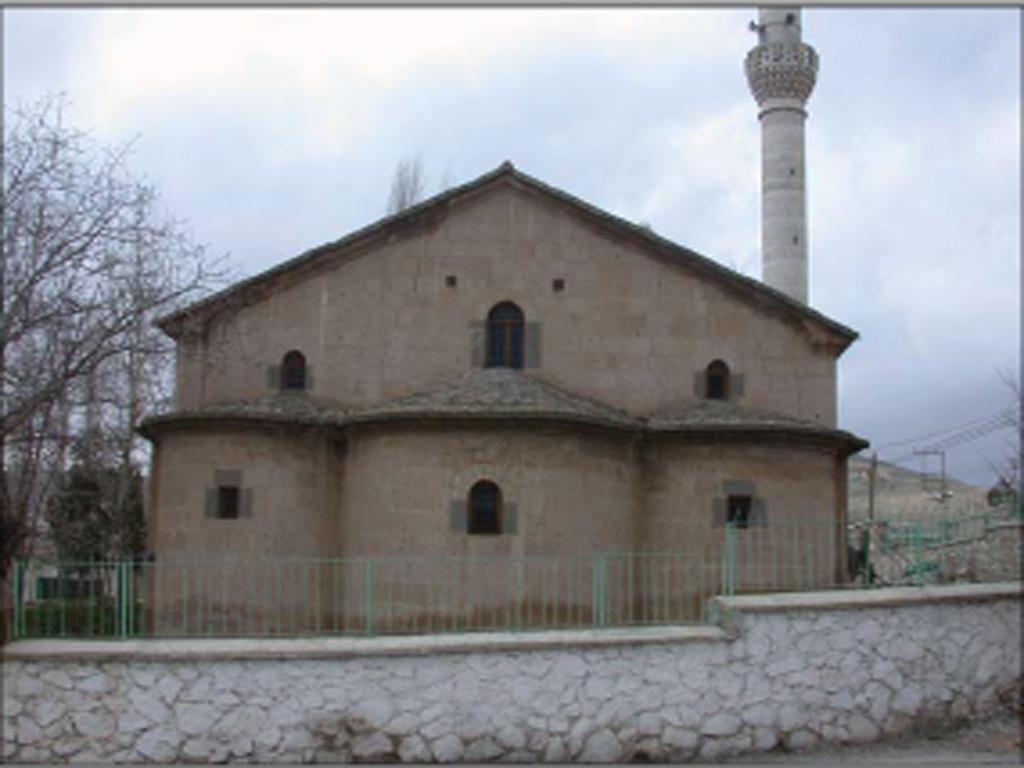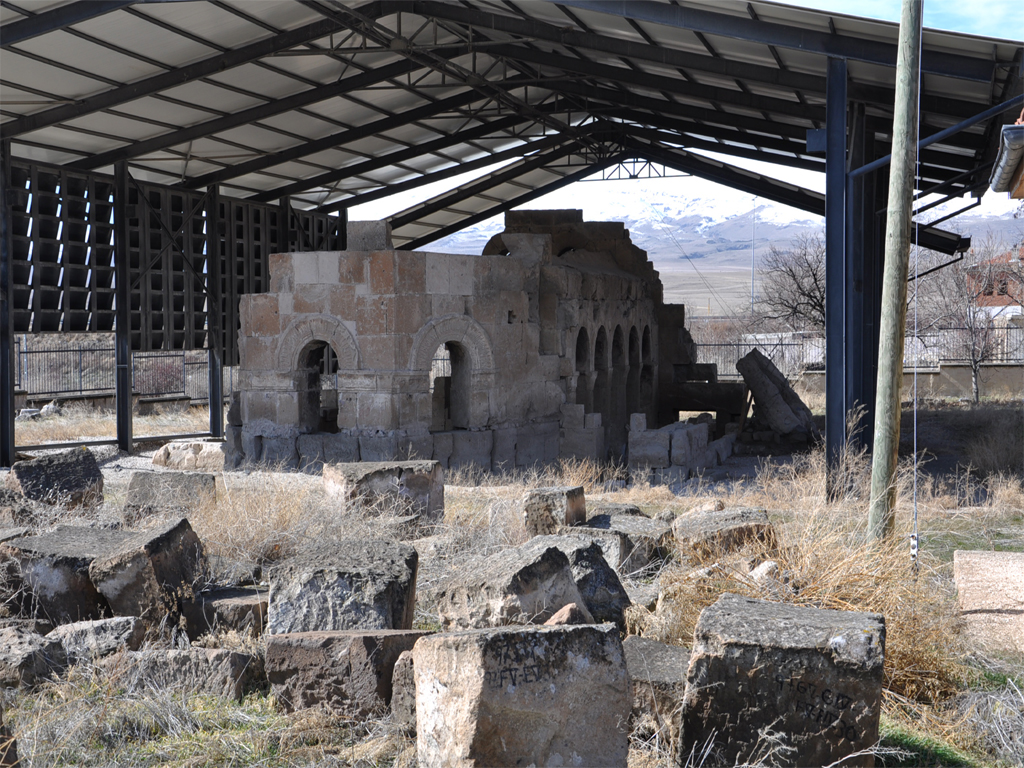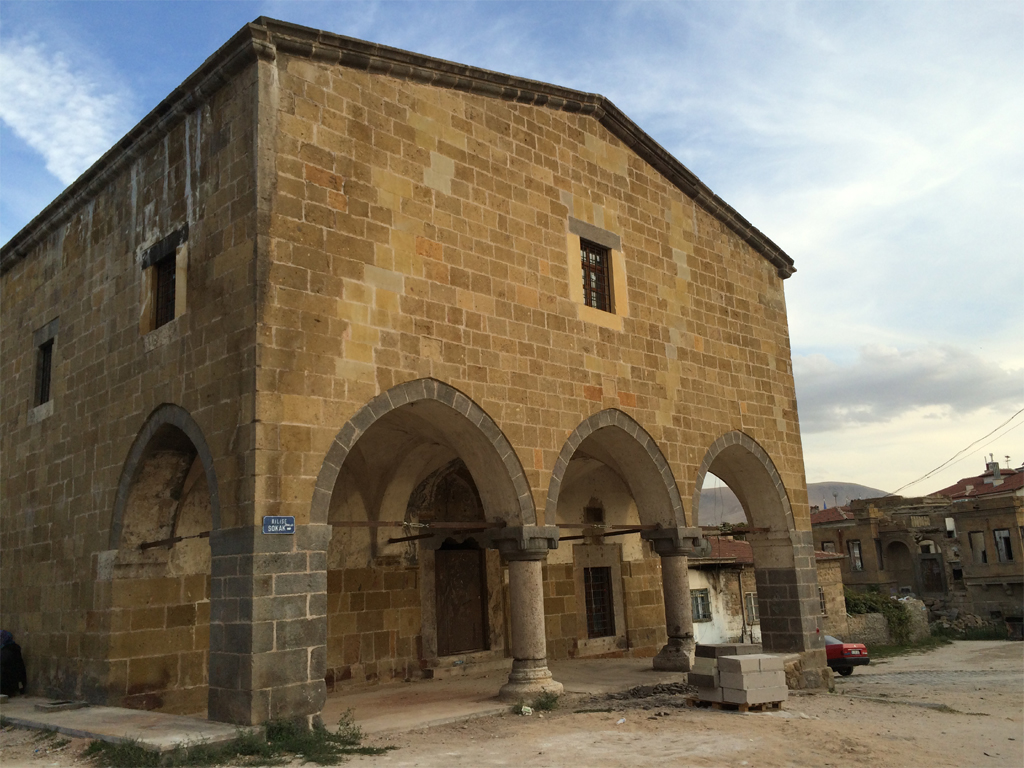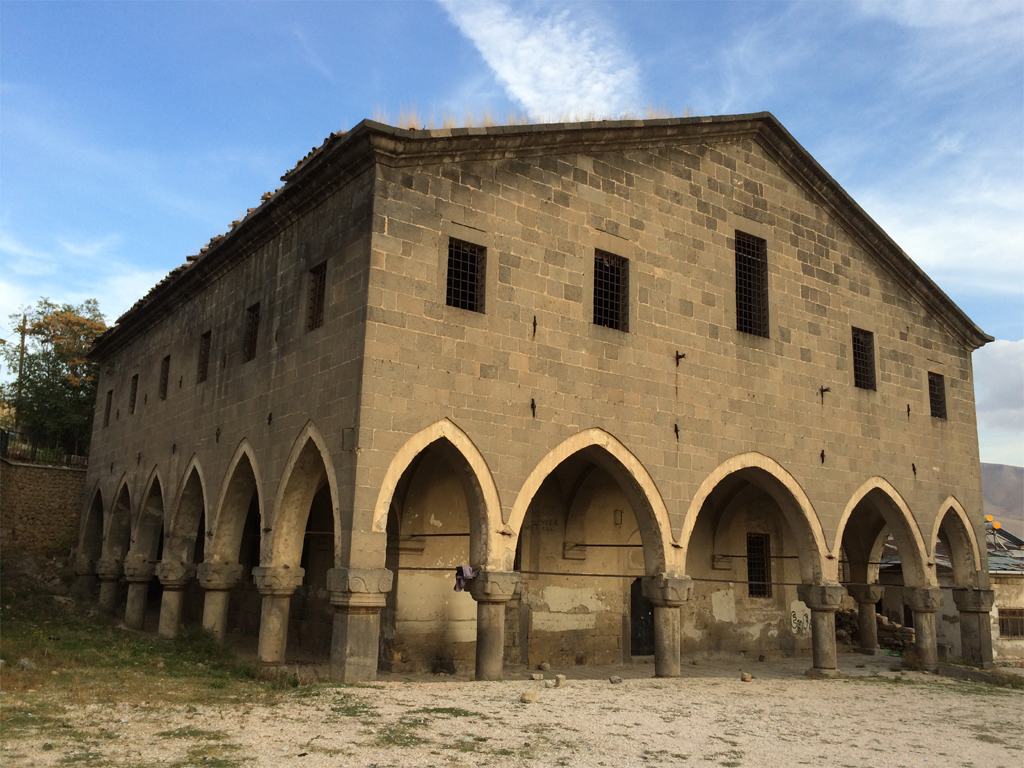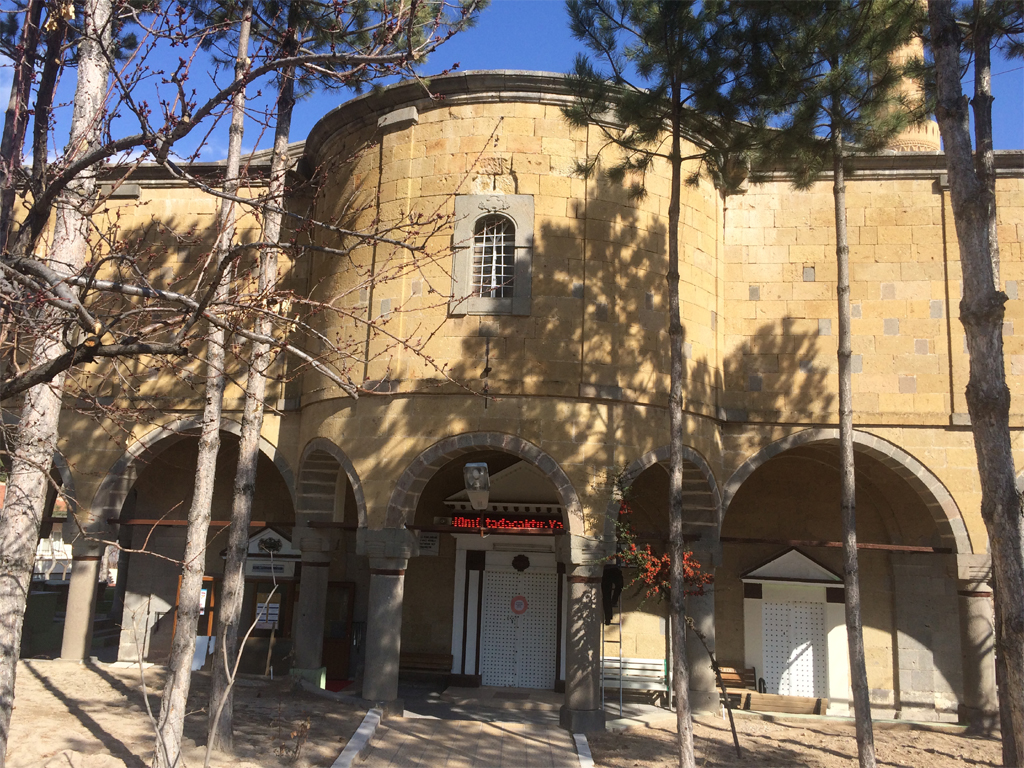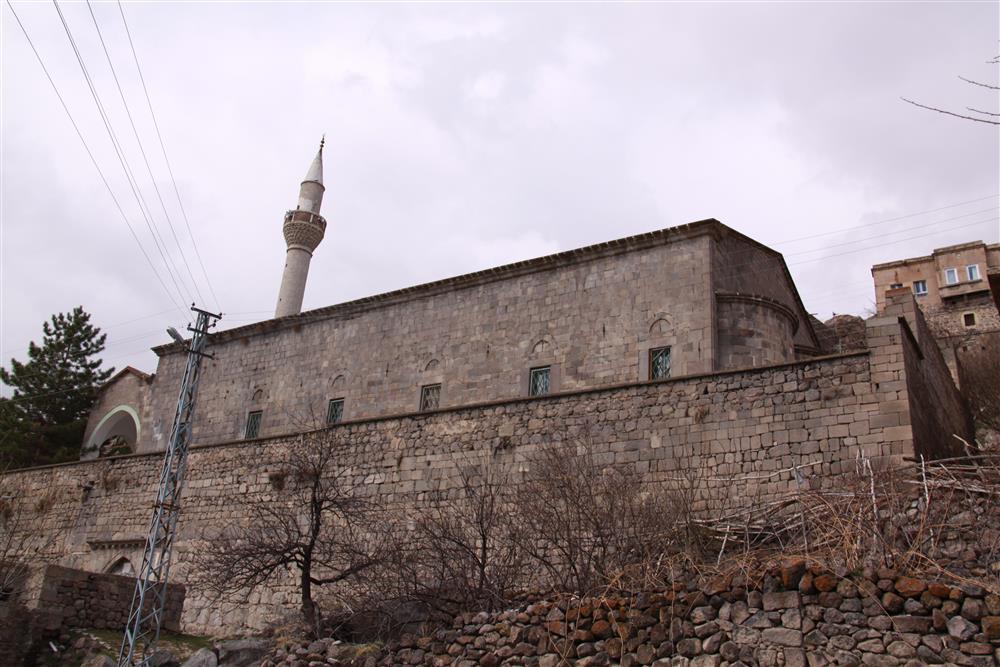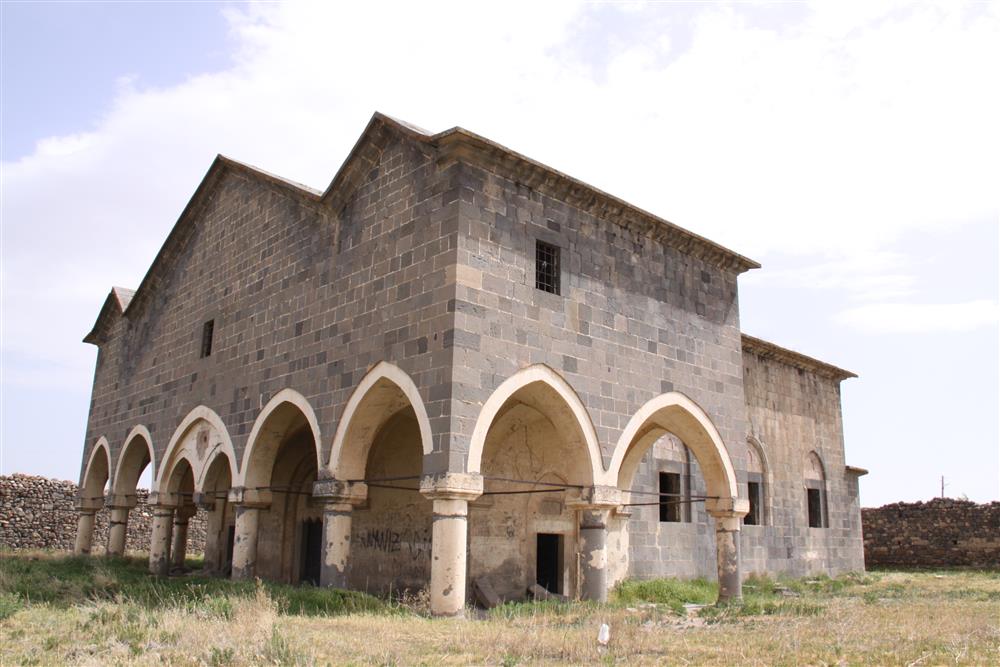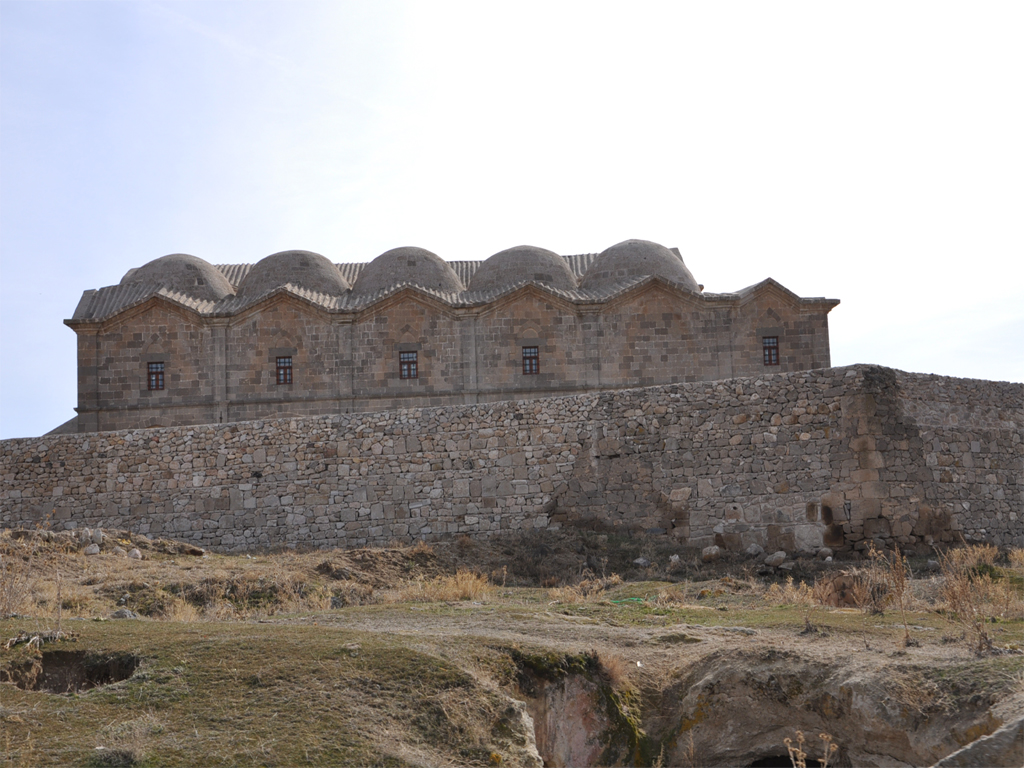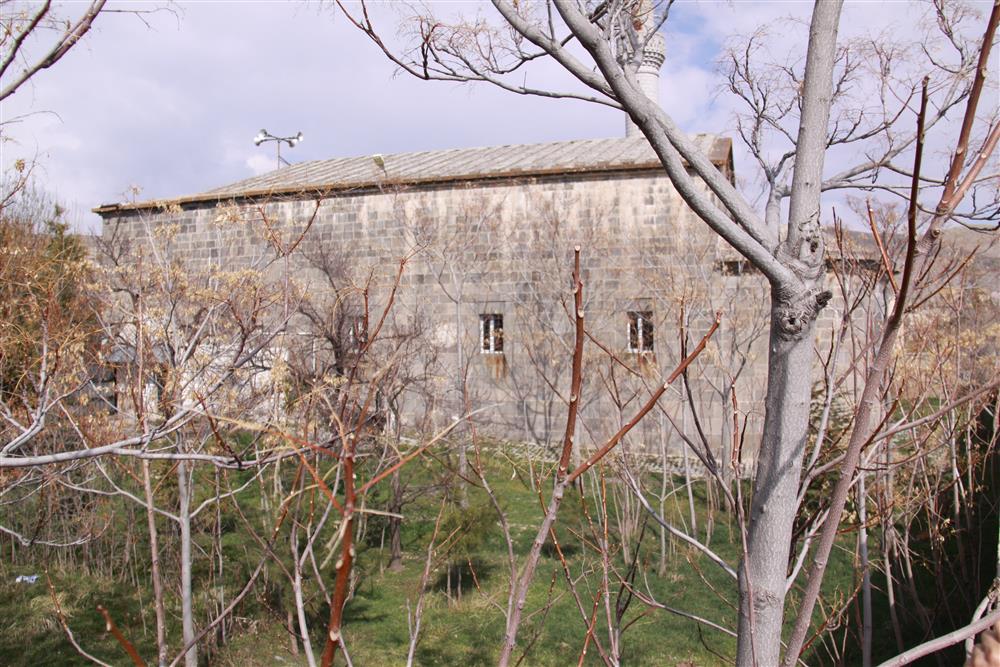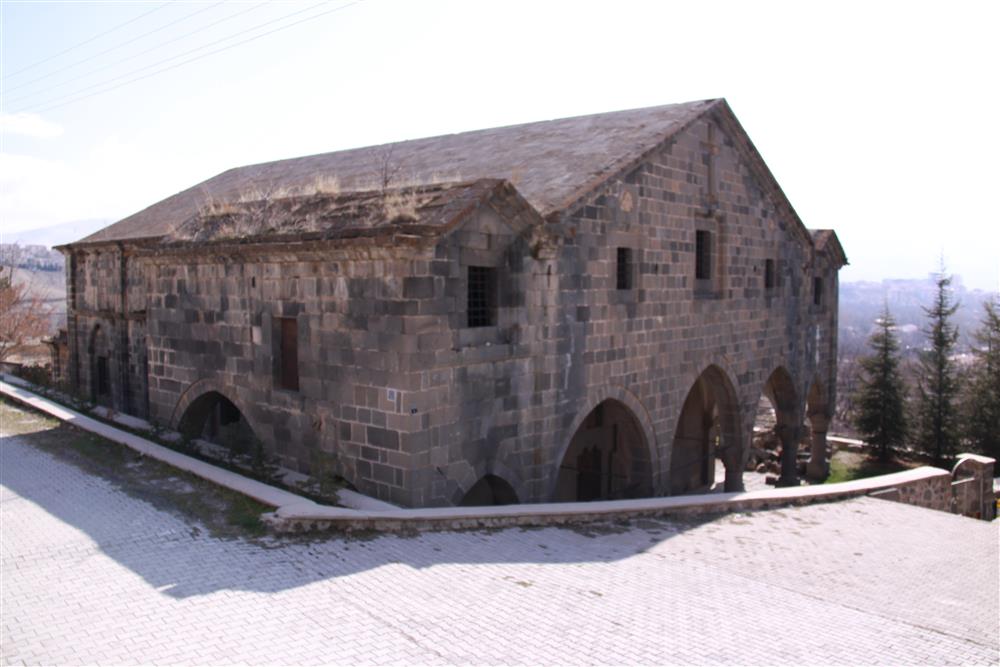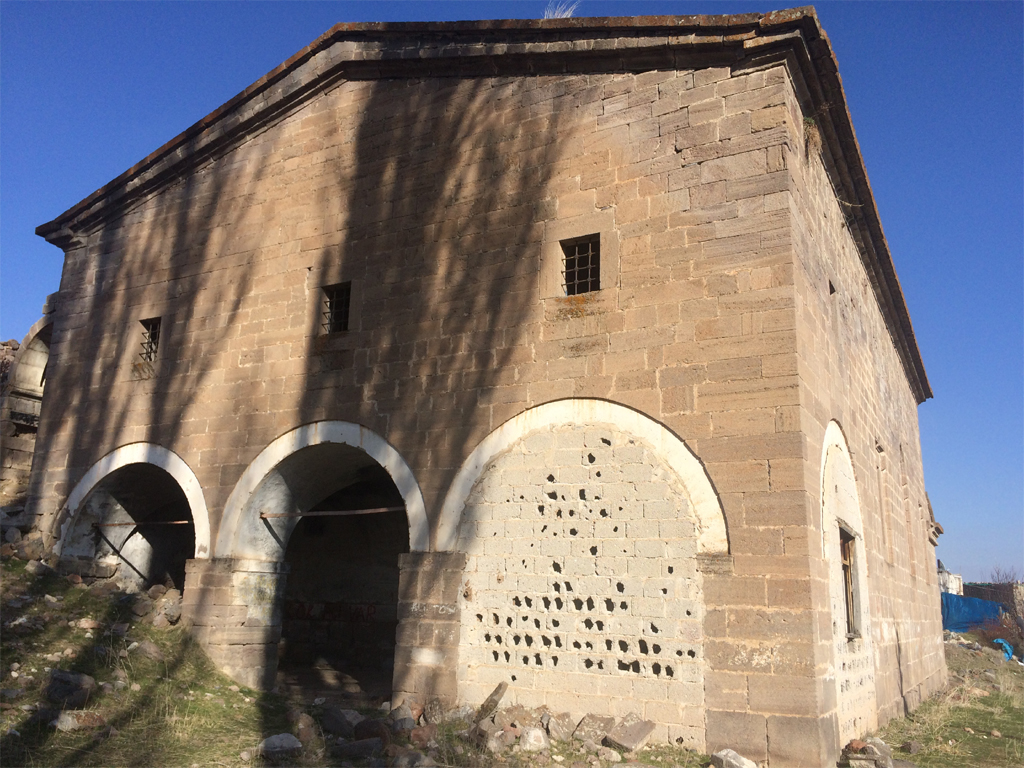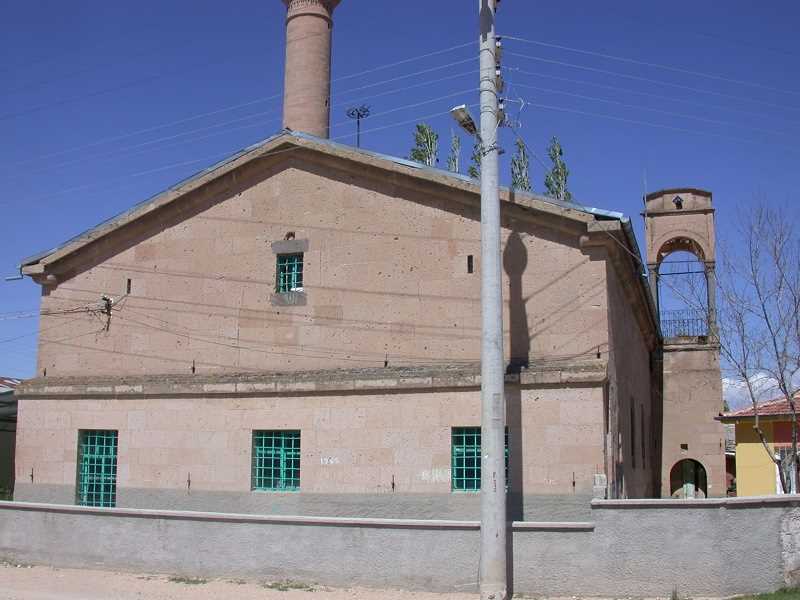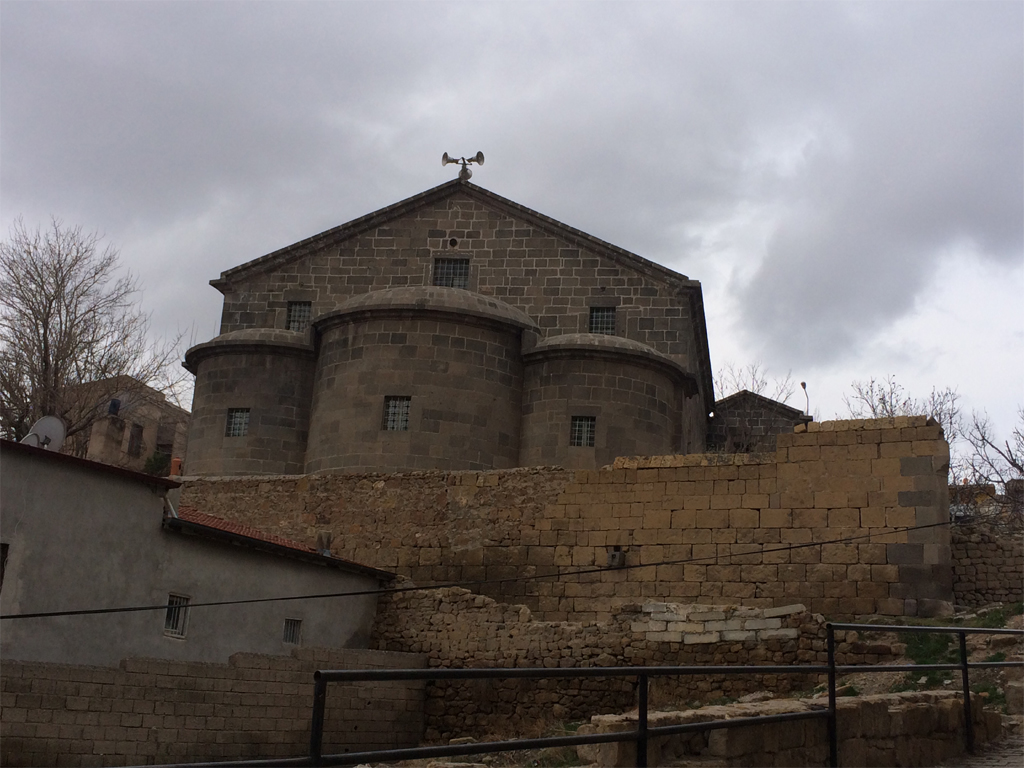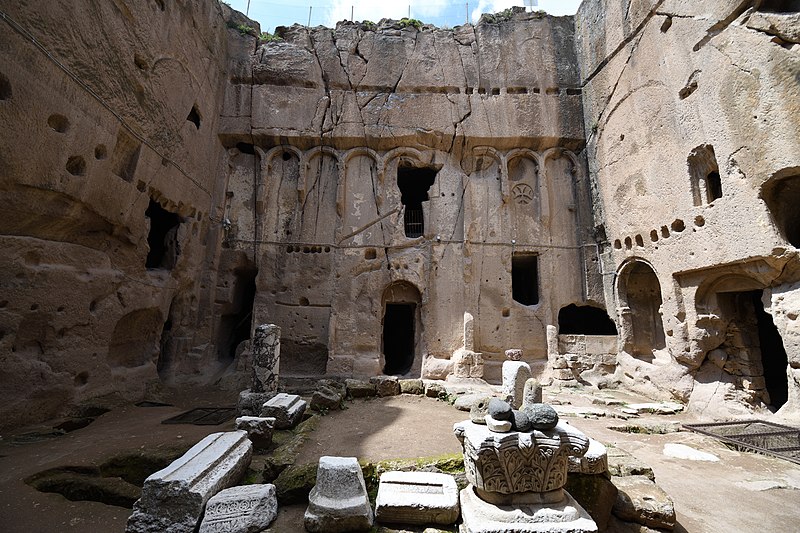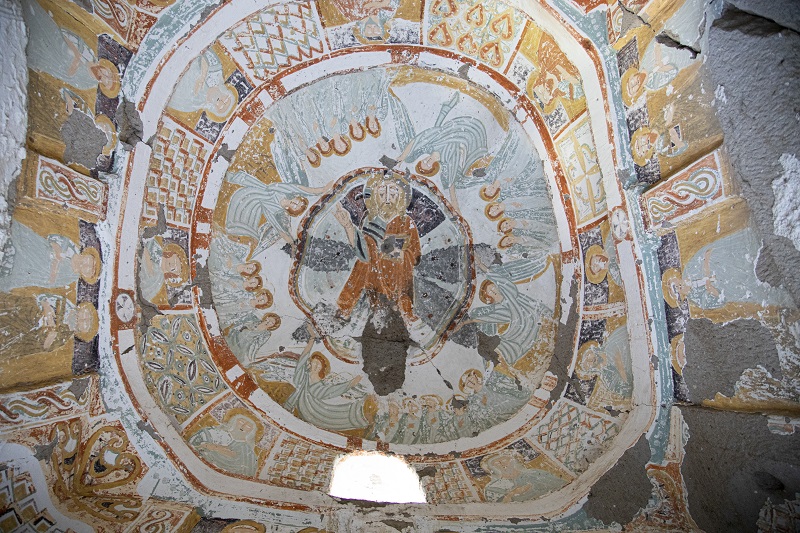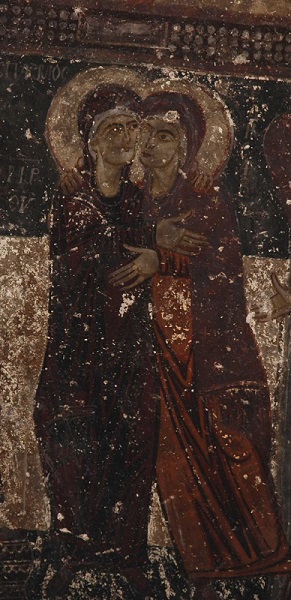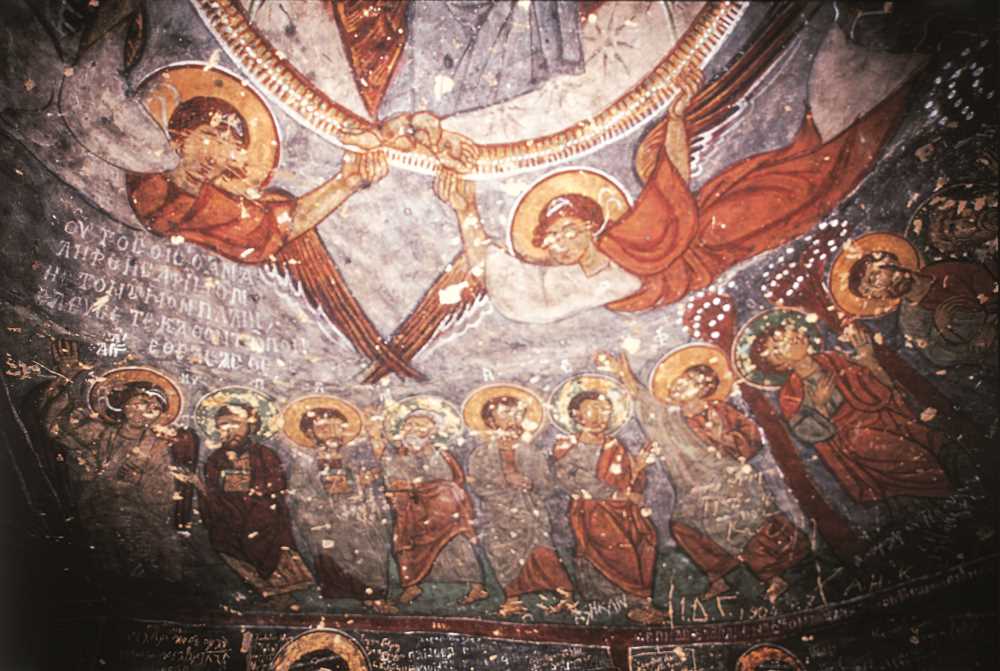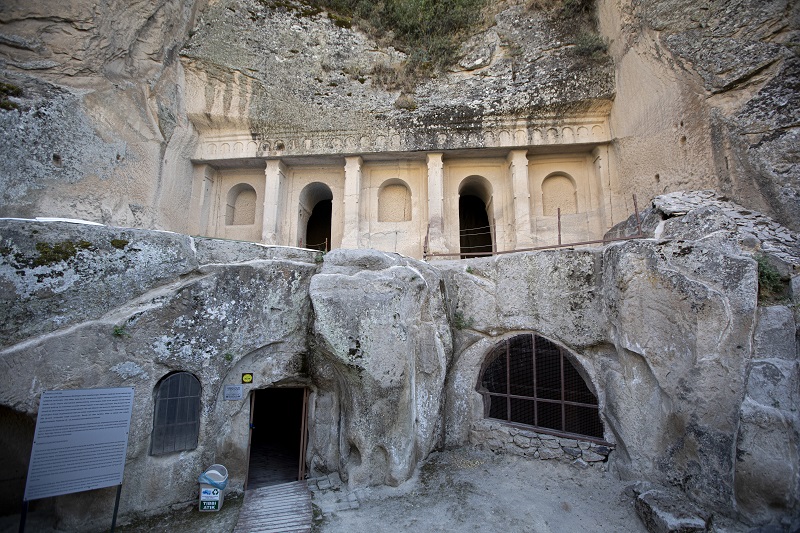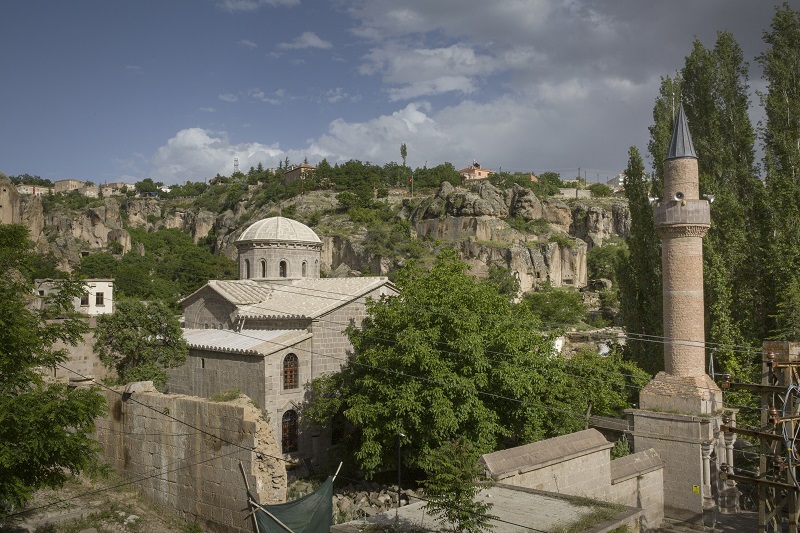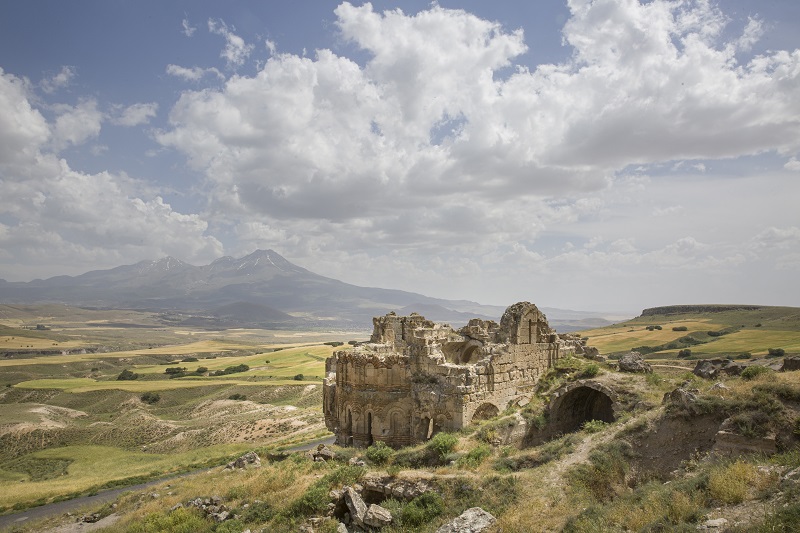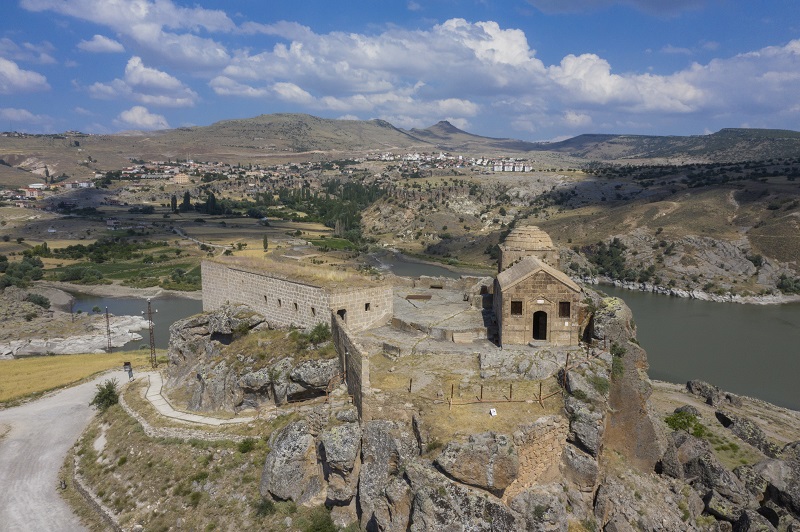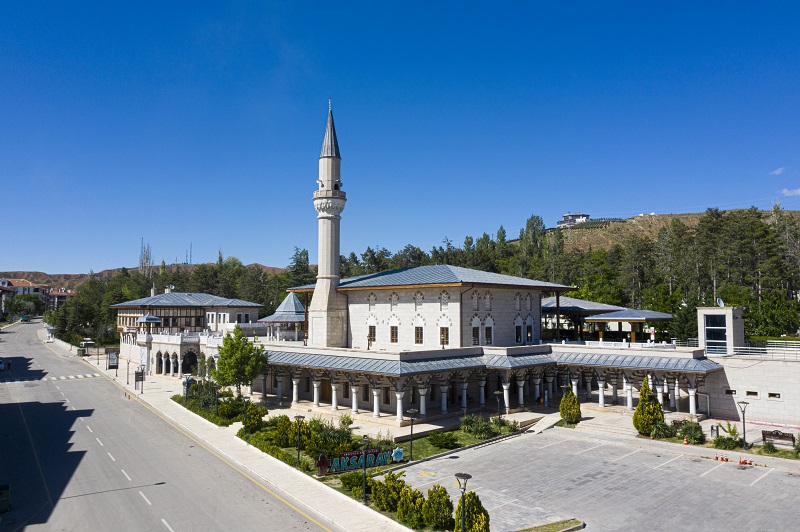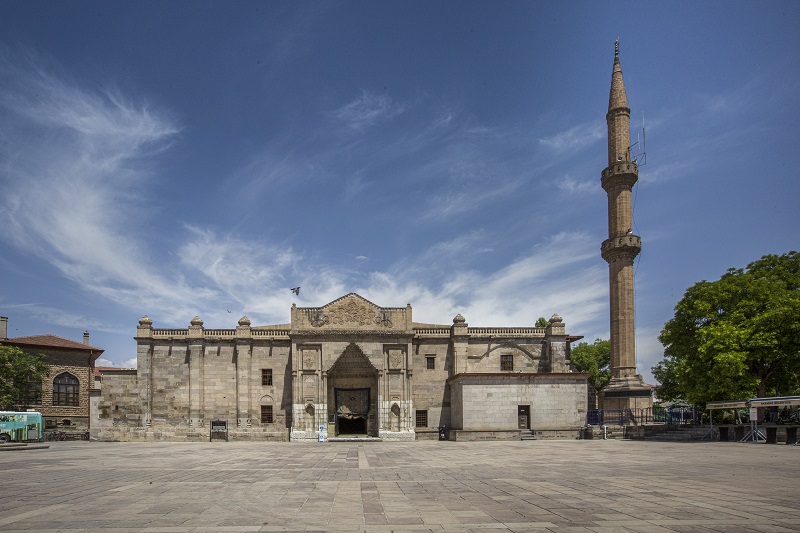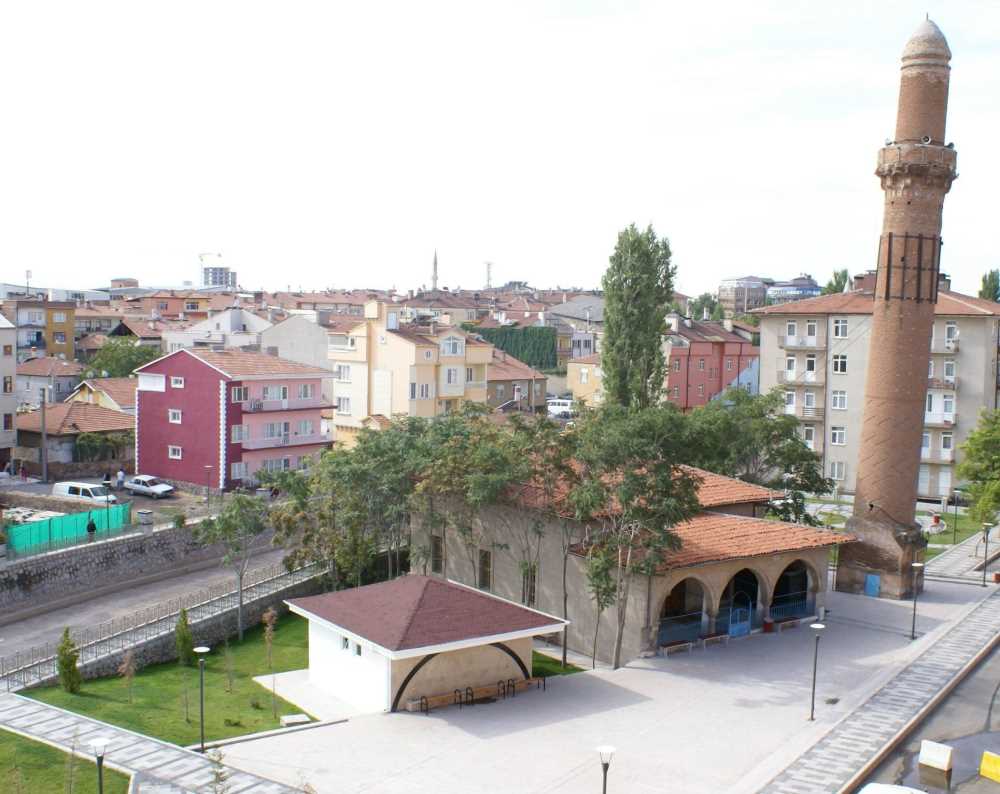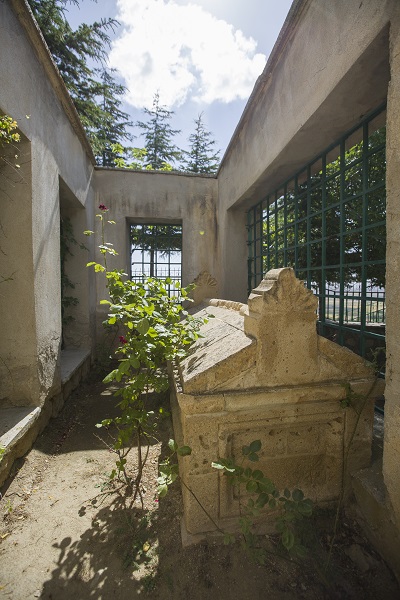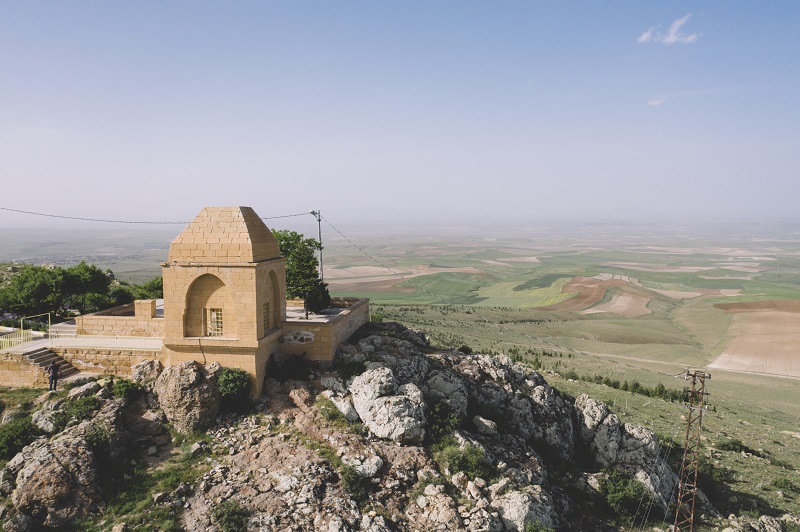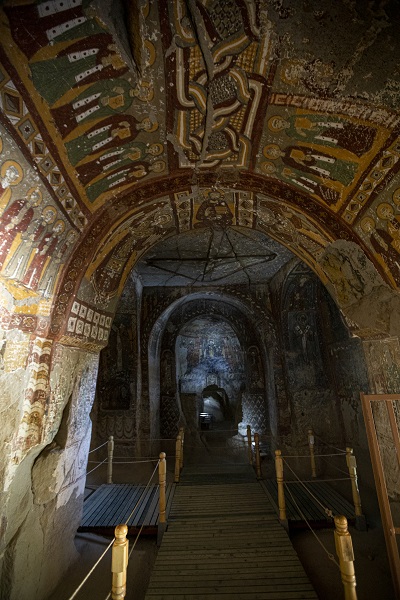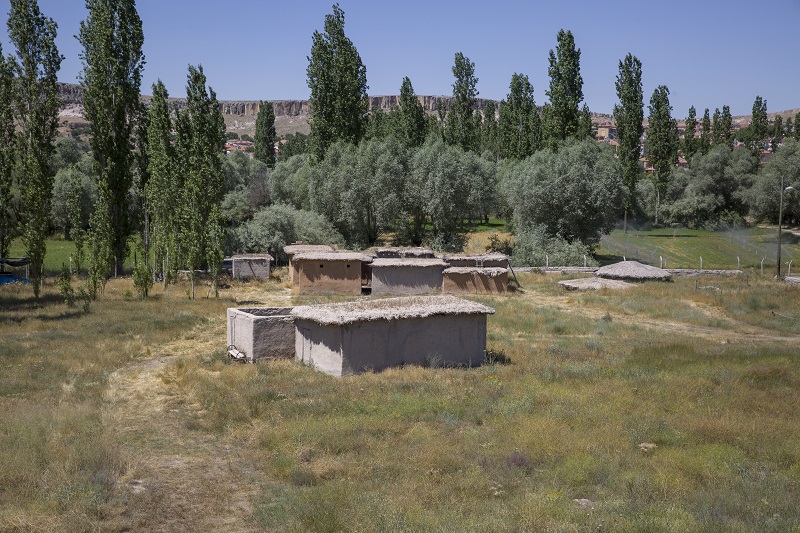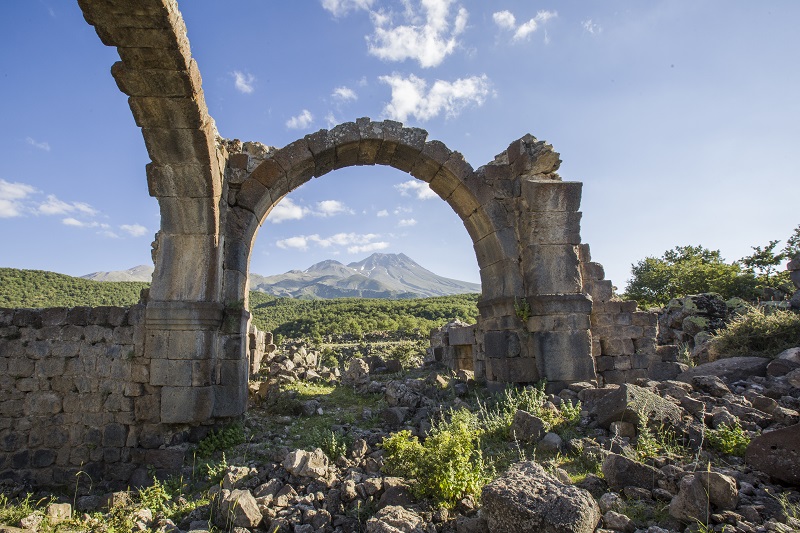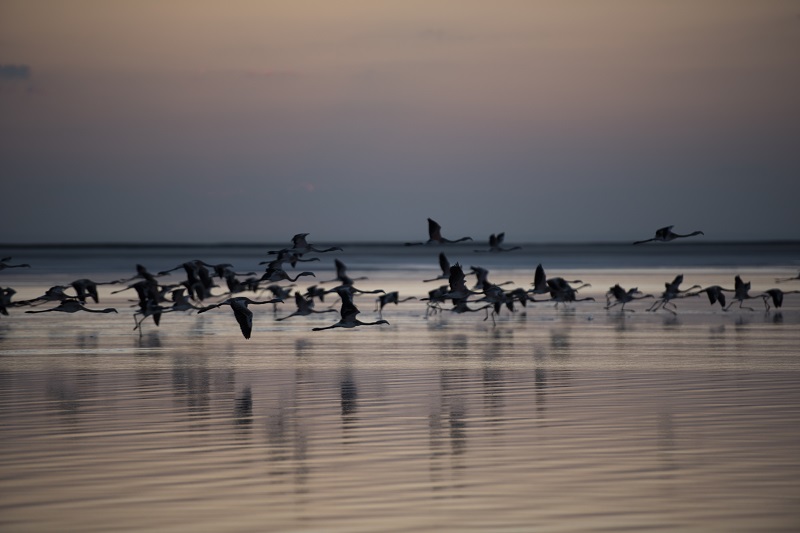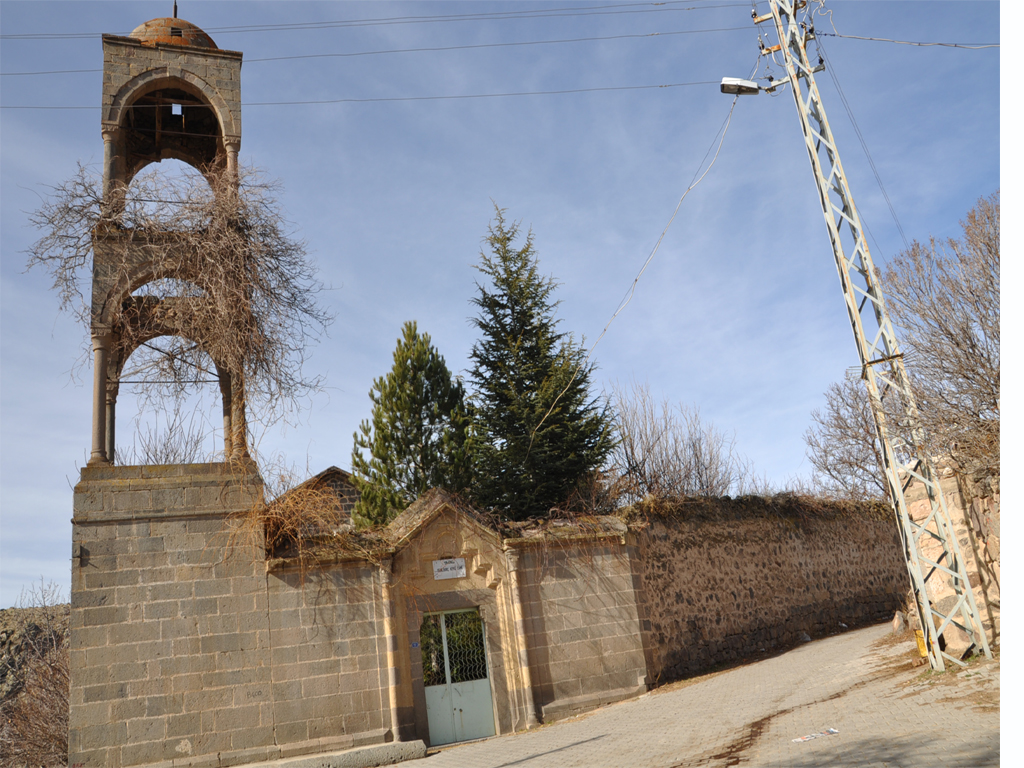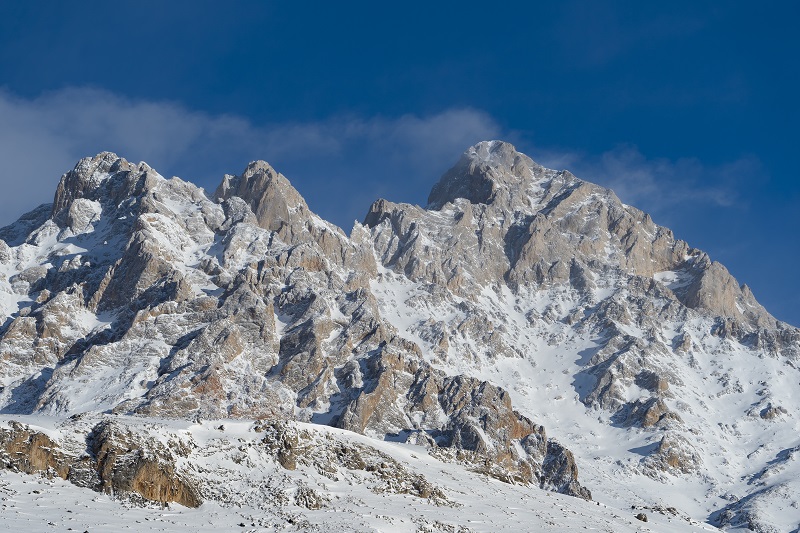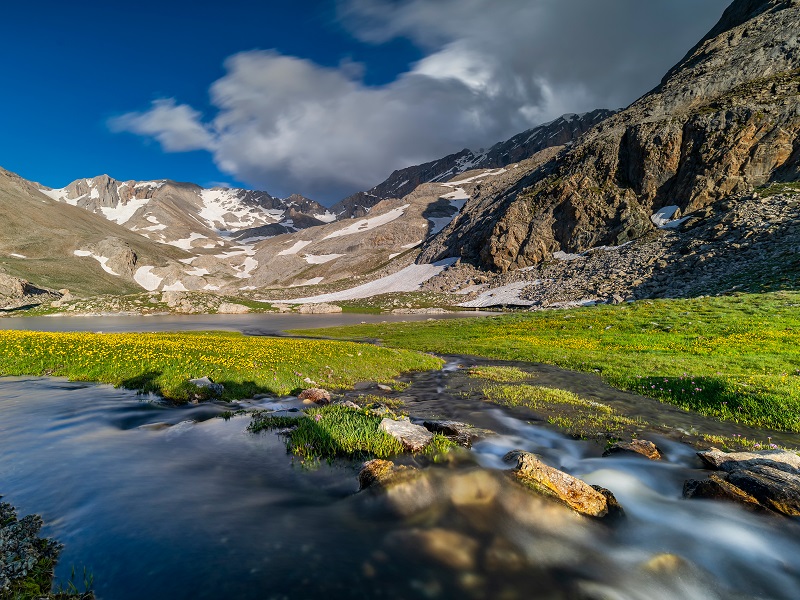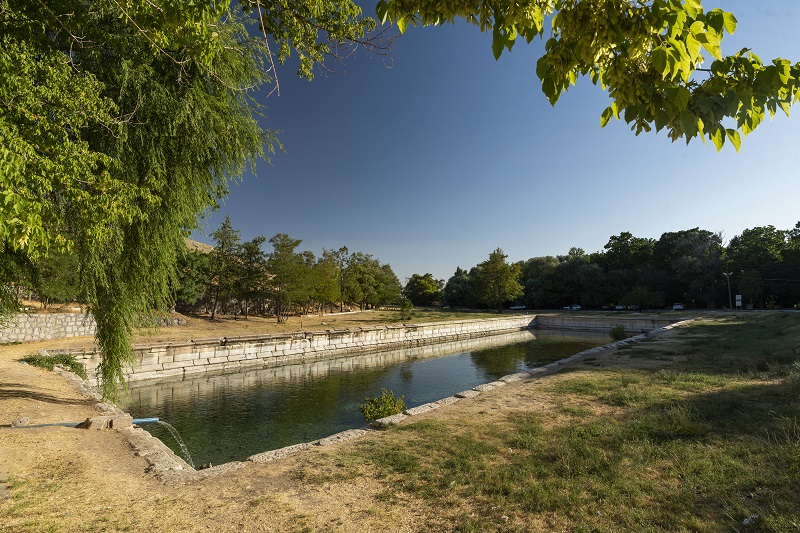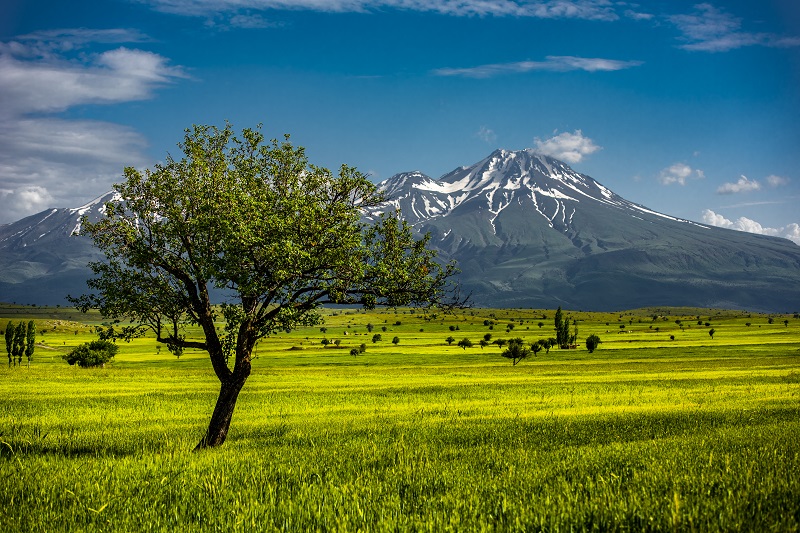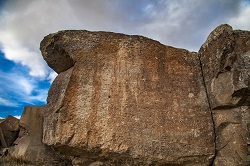
 cappadocia
cappadocia
Places To Visit
Think of such a place that it offers a holiday full of special activities at any time of the day. Let it fascinate with its natural beauties, dazzle with its history, and make brand new discoveries with its culture. Cappadocia vacation expectations, which is one of Turkey's most popular holiday destinations for the higher "good enough" with features that will make us manage to attract millions of tourists every year.
The saying that "places to visit in Cappadocia are countless" is not an exaggeration. The landmarks, museums, special points for viewing the scenery, valleys, national parks, underground cities, churches, museums and historical places in this settlement dating back thousands of years fascinate those who see it. Although there are many places to visit in the region, the popularity of some spots is international.
The chapels, churches and living spaces carved into the rocks await local and foreign tourists at the Göreme Open Air Museum. Güvercinlik Valley, which stretches for 4 kilometers, amazes with its unique vegetation. While the most unique images of fairy chimneys turn into a visual feast in Güllüdere Valley, romance lovers can take their breath to Love Valley. Those who want to enjoy watching with Sarnıç Church, Görkündere Church, Saklı Church and El Nazar Church can have a unique experience in Zemi Valley while walking.
Uçhisar Castle welcomes those who want to dominate Cappadocia with all its majesty, and history enthusiasts cannot leave Cappadocia without visiting the Tığraz Castle, which has seven floors and interconnected tunnels.
In addition to all these historical and natural beauties, the pottery workshops identified with Avanos must be visited. Pottery workshops, where the soil is shaped with great skill and this experience is offered to the visitors, mediate unforgettable moments.
Places to visit in Cappadocia are enriched with underground cities. Underground cities such as Derinkuyu, Kaymaklı, Gaziemir await those who want to discover magical clues about the lives of past civilizations.
Aflak Baba Cupola

It is located in Altınyazı Village. The cupola rising on a square body with beveled corners is covered with a dome from the inside and a pyramidal cone from the outside. The cupola, which displays Seljuk architectural features, was completely renovated and made of cut stone.
Source:
https://www.kulturportali.gov.tr/turkiye/kirsehir/gezilecekyer/aflak-baba-kumbet
Lale Mosque

The building is thought to belong to the 13th century. The mosque is made of rubble and cut stone and is covered with three domes sitting on piers. It is thought that the building, which is used as a mosque today, may actually have been a mint.
Source:
https://www.kulturportali.gov.tr/turkiye/kirsehir/gezilecekyer/lala-cam-lale
Kırşehir Alaaddin Mosque

Kırşehir center is located on Kalehöyük. It is dated to the Seljuk Period. Due to its location on the mound, it was demolished and renovated in different periods. The most striking part of the building is the portal. The entrance (portal) of the building is one of the richest examples of stone decoration of the Seljuk Period.
Source:
https://www.kulturportali.gov.tr/turkiye/kirsehir/gezilecekyer/alaaddn-cam-
Kapucu Mosque

Although it belongs to the Ottoman Period, its exact date of construction is unknown. The building is entered from the narthex covered with three domes. The main place of worship has a square plan and is covered with a dome.
Source:
https://www.kulturportali.gov.tr/turkiye/kirsehir/gezilecekyer/kapucu-cam
Ahi Evran Complex

The Ahi Evran Mosque and its Islamic Complex, designed for conserving the tradition of the Ahi community, are rooted back to the 12th century and have an important place notably in Kirsehir and the history of Anatolia.
Ahilik Organization is an institution of art, trade, solidarity and assistance that has developed and spread among the Turks.
It defends business ethics, protects the capital, workforce, science, and business principles. It has similar aspects to today's cooperative unionism, social security, quality and price control system.
The building was built over the tomb in 1450. It was expanded and a mosque was added to the structure in 1561. The building has been the spiritual center of Turkish tanners and craftsmen during Ottoman Empire.
Source:
https://kirsehir.ktb.gov.tr/TR-195631/ahi-evran-i-veli.html
Cacabey Astronomy Madrasa

Cacabey Astronomy Madrasa, one of the most important historical buildings in Kırşehir, was built in 1272 by the Governor of Kırşehir, Nureddin Cibril bin Cacabey, as a madrasah where mathematics, science and astronomy education was given. In addition to its unique architecture, Cacabey Astronomy Madrasa, which attracts attention with its inner colonnades, observation well, luminous light and observation tower, which symbolizes the planets in the solar system, is one of the first and perhaps the most important centers to provide astronomy education. The rocket-like colonnades found in three different parts of the madrasah, which is used as a mosque today, are considered as proof that the building was operating as an astronomy center.
Cacabey Astronomy Madrasa, which is one of the most important historical buildings in Kırşehir and located in the city center, was built in 1272 by the son of Anatolian Seljuk Sultan Kılıç Arslan II. It was built by Nureddin Cibril bin Cacabey, Governor of Kırşehir, during the Gıyaseddin Keyhüsrev period as a madrasah where mathematics, science and astronomy education was given. The first thing that draws attention in the madrasa is the colonnades on the exterior and in the corners. It is believed that the three columns in total show the firing and launching state of the rocket. The double-colored Crown Gate, one of the most beautiful examples of the Anatolian Seljuk Decoration Art, is another striking element of the building. Some of the shapes engraved on the Crown Gate have been the subject of discussion today. In particular, the comments made on the fact that the spheres hanging from the capitals of the colonnades at the entrance of the Crown Gate symbolize the moon and the sun, and that the circular shapes on the right and left lower corners of the pediment show the equatorial line and the axis inclination, brought the discussions to their climax.
Source:
https://kirsehir.ktb.gov.tr/TR-195632/cacabey-ve-gokbilim-medresesi.html
Aşık Paşa Tomb

Aşık Pasha, whose real name was Ali, was born in Arapsun in H. 670 / A.D. 1272 and died in Kırşehir in H. 733 / A.D. 1333. Aşık Pasha, who uses Pure Turkish in his works, learned his religious and mystic knowledge from Sheikh Süleyman Türkmani. Aşık Pasha established a lodge in Kırşehir. Aşık Pasha's work "Garipname", which consists of 10,613 couplets, is important because it was written in Turkish. Garipname is Aşık Paşa's most well-known work. The Aşık Paşa Tomb is located on the hill on the Ankara-Kayseri road, inside the large cemetery in the Aşık Paşa Neighborhood. The building was built as a single storey, two-part building. The entrance door has a rectangular plan, and the section where Aşık Paşa's sarcophagus is located has a square plan and a dome. The crown gate of the tomb is one of the unique examples of the Anatolian Seljuk Ornamental Art. The 10-slice oyster shell-shaped cavalier and the braided ornaments surrounding it are the most striking elements on the crown door. Since the dome of the building resembles a Kyrgyz tent, it is thought that its architect was a Turk who came with the Khorasan saints. In the three-line inscription of the building, it is stated that Aşık Pasha was the son of Sheikh Pasha Muhlis, the year he was born, the year and the day of his death. Aşık Pasha reacted to those who admire Persian and Arab cultures, and addressed those who were immersed in foreign cultures as follows. “No one would look at the Turkish language, every secret heart would not flow to the Turks, even the Turks did not know these languages, Fine way, great ranges"
Source:
https://kirsehir.ktb.gov.tr/TR-195633/asik-pasa.html
Fatma Hatun Tomb

It is located in the Central Medrese District, Kümbetaltı Cemetery. It was built in 1266 by one of the notables of the period, Hoca Aka Maatır, in the name of Fatma Hatun. Cupola; It has an octagonal body on a square base with triangular chamfered corners. The cover system is a dome inside and an octagonal conical cone outside. The building was built with neat cut stones.
Source:
https://www.kulturportali.gov.tr/turkiye/kirsehir/gezilecekyer/fatma-hatun-kumbet
Melikgazi Cupola

The cupola, located in the center of Kırşehir province, was built by his wife in the name of Melik Muzaffereddin Behram Shah, one of the Sons of Mengüçuk, between 1240-1250. The cupola has an octagonal body on a square base with bevelled corners. Triangular chamfers were used in the transition to the cylindrical conical cone. With these bevels, the cupola was given the appearance of a tent, and it is one of the examples that strengthens the argument that the Turkish tomb architecture was influenced by the Central Asian tent art, and that the origin of the cupolas is the Central Asian Art.
Source:
https://www.kulturportali.gov.tr/turkiye/kirsehir/gezilecekyer/melkgaz-kumbet
Süleyman Türkmani Tomb

It is thought that Süleyman Türkmani, who is understood to be a member of the Mevlevi order, was born in 1214 and came to Anatolia with a Turkmen tribe at a young age (1224) with his father, Sheikh Hüseyin, and settled in Konya. It is not known where he was born. He was called Turkmani because his grandfather was a Turkmen Bey. Suleiman Turkmani, who took lessons from Mevlana, came to Kirsehir in 1239 to spread the Mevlevi sect with the encouragement of Mevlana's son Sultan Veled, after his death, and attracted great attention. It is also known that Süleyman Türkmani taught Aşık Paşa in the last years of his life. The greatest work of Süleyman Türkmani, who is known to take lessons from great teachers, is "Tezkire-i Evliya". It is estimated that he died in Kırşehir when he was 84 years old in 1298. His tomb is located in the Imaret District of the city.
Source:
https://kirsehir.ktb.gov.tr/TR-195657/suleyman-turkmani.html
Üçayak Church

It is located near the Kirsehir Merkez Taburoglu Village. It belongs to the 10-11 century Byzantine period. It is one of the important works that reflect the architecture of the capital of the Byzantine period. It is thought to have been built as a votive place by two emperors. The building, which consists of two churches, is completely made of bricks; The dome covering the building was still standing until the earthquake in 1938.
Source:
https://kirsehir.ktb.gov.tr/TR-64770/kiliseler.html
Seyfe Lake And Bird Sanctuary

Seyfe Lake is one of the few salty lakes in Central Anatolia. Located in the northeast of Kırşehir, the lake is 16 km from Mucur. away. There are a total of 187 bird species, including songbirds, around the lake. The lake is one of the important wetlands not only in Turkey but also in the world as a feeding, breeding and accommodation area for waterfowl.
One of the world's largest flamingo communities (320 thousand units) lives in the lake. The lake is also the accommodation area for hundreds of thousands of ducks in autumn. Other important bird species that feed and stay in Lake Seyfe; teals, pelicans, herons, plovers, geese, swordbills, seagulls, baboons and terns. It has been determined that 480 thousand birds live together in the region.
The most beautiful views in Seyfe Lake can be seen from the mound located near Seyfe Village. It is also possible to come to the lakeside from Badıllı neighborhood of Seyfe and watch the beauty of the lake and the flamingos. In addition, flamingos can be seen from many parts of the lake during the summer months.
Source:
http://www.kirsehir.gov.tr/seyfe-golu-ve-kus-cennetimiz
Hirfanlı Dam Lake

Area Covered: Kaman, Kırşehir Merkez, Evren, Şereflikochisar.
Area: 26,300 ha.
The Hirfanlı Dam, which was completed in 1959 and opened for operation on January 8, 1960, in order to generate electricity, prevent floods and use it for irrigation, is a large dam located on the Kızılırmak in the north-east of Salt Lake.
The highest number of water birds found in the Hirfanlı Dam Lake in recent years is 133,809.
Known as the "Sea of Central Anatolia", Hirfanlı Dam Lake attracts attention with its unique view, beach and social facilities. In addition, fishing is an important source of income in the villages around the Hirfanlı Dam Lake.
One of the natural beaches of Hirfanlı Dam Lake; The village of Toklumen, 50 km from Kırşehir, Sıdıklı Büyükoba village, 25 km from Kırşehir, the beaches and facilities of Davulağıl region, and Savcılı Büyükoba beaches, 16 km from Kaman, are popular places for visitors. Among the places used as a camping area during the summer months; Yeşilli, Uzunali and Karaduraklı villages, which are 27-30 km away from Kırşehir, have dam shores.
Source:
https://kirsehir.ktb.gov.tr/TR-196433/hirfanli-baraj.html
Kaman Kalehöyük Museum and Japanese Garden

Kaman Kalehöyük Archeology Museum, which was made as a grant by the Japanese Government within the framework of the "Cultural Heritage Preservation Project", covers a total area of 1,500 square meters, 830 square meters of which is open and 470 square meters of which is closed.
In the museum, there are exhibition halls, a cine-vision corner, a library, a laboratory, cafe, warehouses and technical sections that allow examination, research, photography and restoration work.
The landscaping is arranged in the style of a mound that is being excavated. Thus, the visitors were provided to see both the finds unearthed during the excavations and the excavation methods and works.
Also, the largest botanical garden outside of Japan is built in a "Japanese garden" style. The museum received the "Best Green Museum" award in 2011 and was nominated for the Museum of the Year in Europe in 2012.
Source:
https://muze.gov.tr/muze-detay?SectionId=KKK01&DistId=MRK
Ürgüp

Ürgüp Temenni Hill
Ürgüp Temenni Hill is one of the must-visit locations in Cappadocia, with its unique ruins and its ability to possess the Cappadocia landscape.
The hill, which is located in the center of Ürgüp and is one of the first destinations that comes to mind when it comes to panoramic viewing of Cappadocia, is located at an altitude of 80 meters. Attracting the attention of local and foreign tourists, Temenni Hill is a popular destination for those who want to wish and photograph the beauty of Cappadocia.
There is no vehicle to go to the hill, vehicles must be parked near Cami Kebir. The scenery witnessed even while climbing up Temenni Hill is simply fascinating.
There is also a very important feature that makes Ürgüp Temenni Hill special. Kılıçarslan Tomb is located on this hill. There are also mausoleums in the tomb, which was opened to visitors in 2013 after necessary arrangements were made. Seljuk sultans who escaped from throne fights and Mongol raids and took refuge in Ürgüp are thought to have been captured and killed in the area.. On the western slope of the hill is the St. Georgios Church. Although all the walls of this ruin have been demolished and only the carving hall remains, this work is still worth seeing.
Ürgüp Grand Mosque
Both natural beauties and historical ruins fascinate those who come to Cappadocia. While the historical artifacts built in different periods complement the texture of the region, it continues to be the center of attention of local and foreign tourists.
Ürgüp Grand Mosque is also among the must-visit destinations in Cappadocia. Ulu Mosque and Madrasa, built by Karamanlı Taşkın Pasha as a reflection of the tradition of the Ulu Mosque from the Seljuks, has survived to this day.
There is no exact information about the architect of the building built on a square-like plan. There are two tombs in the courtyard of the mosque and one of the tombs is known to belong to Karamanlı Taşkın Pasha.
There are many locations in Cappadocia that those who are excited about culture and faith tourism can visit except the Ürgüp Grand Mosque. Cappadocia, which has hosted many different civilizations since ancient times and has important destinations for Muslims as well as Christians, makes every step a new discovery. If you turn your route to Cappadocia, you can see the unique Cappadocia artifacts closely and experience a holiday experience that is impossible to forget in a lifetime.
Devrent Valley

Devrent Valley, surrounded by surreal fairy chimneys, is a must-see place for every local and foreign tourist. The resemblance of the fairy chimneys to animals in Devrent Valley takes anyone who wants to go on a fantastic journey on a dream trip. You can see fairy chimneys resembling many animal figures as if you’re walking around the zoo. The giant camel-shaped fairy chimney is one of the most important symbols of the valley. It is also possible to see figures resembling humans in the valley where you will witness nature's sculpting artistry.
The name ‘’Devrent Valley’’ means "pit and cliff". But contrary to this connotation, the valley is entirely filled with fascinating scenery. You can do trekking and horse safari, and dream by the moonlight at dusk. If you want to take a break in this natural beauty, there are shops where you can get some snacks and souvenirs.
Devrent Valley is located on the Urgup road between Avanos and Urgup regions. You can reach Dream Valley right after you pass Zelve Open-Air Museum. You can arrive at the valley by local methods of transportation or your private vehicle.
Zelve & Paşabağları Open Air Museum

In the Zelve Valley, which houses large and pointed fairy chimneys, you can see many ancient structures. You can come across monasteries, cave houses, and churches made by human carving. While touring the Zelve Open Air Museum, you can also consider trekking through the rugged areas of the valley.
After all this, the last thing you need to do in the valley is to attend the fascinating Zelve Mapping Show. 3D Mapping Show; is the reflection of the special animation contents prepared in accordance with natural texture through projection devices on the fairy chimneys. In the show, you can watch the centuries-old history of the region and the development of civilizations chronologically. In addition to that, you can find Ottoman History, modern Turkey and the development of Cappadocia.
Paşabağ Valley, also known as the Valley of the Priests, covers a very large area surrounded by mushroom-shaped fairy chimneys. The valley, which is frequented by many tourists, is one of the regions where the world famous fairy chimneys are the most intense and prominent. Its unique scenery and mystical atmosphere make every person who steps into the fairy-tale land deep in thought.
As can be understood from its other name, in ancient times, Christian clergymen lived and served as missionaries in Paşabağları. The priests, who retreated here, have created living spaces and religious shrines in the valley throughout their lives. There is also a historical carved church estimated to have been built 1000 years ago. The church among the mushroom-headed fairy chimneys will make its visitors feel its mystical feelings.
After entering the valley, you can see many retreats. When you go a little further, you will come across different fairy tale ways. You have to be sure that each road leads to a different story. You can collect and eat fruits from mulberry trees in Paşabağ Valley and witness the millions of years of nature's work.
Paşabağ Valley is located in Zelve Ruins, which is very easily accessible. The area known as the old religious center is 5 kms from Avanos and 1 kms from Paşabağ.
For further information and e-ticket, please click here.
Avanos

Avanos is one of the most visited location in Cappadocia and popular with its Pottery, Swinging Bridge and Red River.
Although Avanos pottery seems to be easily shaped in the hands of masters, there is no doubt that their production is quite difficult. Pottery requires creativity, skill, and of course patience is a must in this art. In a magical place like Cappadocia, you should try the production of world famous Avanos pottery to reveal the artist within you and to witness this art. By making pottery, you can both calm down and get away from your stress and have a brand new experience.
Crossing the Swinging Bridge in Avanos
Walking on the Avanos Swinging Bridge is one of the symbolic activities that you should add to your list of things to do in Cappadocia. You should also enjoy taking pictures on the wooden bridge, which is seen as the symbol of Avanos. In order to enjoy the calm and beauty of the river, you should not forget to spend time in the cafeterias located on both legs of the bridge. Maybe you can see the cute surprises waiting for you while having a pleasant time here…
Walking on the Edge of Kızılırmak
Kızılırmak has an atmosphere that you will want to spend time with its peaceful current during your visit to Cappadocia. As we have just said, on this river, you can go on a pleasant journey by gondola, or you can meet your adrenaline expectations by taking a jet boat tour. You can also experience an unforgettable romance if you walked on the edge. You should add a walk along Kızılırmak, which is one of the must-do activities for those who go to Cappadocia, to your list. Kızılırmak will welcome you with the guarantee of having fun, relaxation and wonderful moments. Every step you take along the river will introduce you to the traces of past civilizations.
Feeding the Geese
Kızılırmak hosts dozens of creatures and it is possible to encounter geese in the region. You should also try feeding the goose, which is one of the favorite activities of those who visit Cappadocia. While feeding the geese living on the island on Kızılırmak, you will return to the excitement of your childhood days and you will have great pleasure when you hear the sounds they make from joy. While experiencing the most special moments of your Cappadocia trip, you should not forget to take lots of photos!
Çavuşin Village (Çavuşin Church)

Çavuşin Valley takes its name from Çavuşin Village in its region. The village, built among large rocks, is home to a long history. The village, with its history dating back to the first century, is the area where Christian monks escaped from Roman attacks. Living spaces have been built inside the rocks to protect them from attacks. Living people used pigeon manure by explaining cavities in the chimneys due to inefficient soils. With the Byzantine period, Christianity lived freely, and with the coming of the Seljuks, it gained a place in Islam in the region. Churches, monasteries and mosques were built, the foundations of the brotherhood of religions were laid.
There are many religious buildings that you should definitely visit in Çavuşin Village. You should absolutely have a look at the Çavuşin Church, the Crusader Church, the Church of St. Jean, the Church of the Three Crosses and the Church of St. John the Baptist. You can see centuries-old frescoes and depictions in these churches. You can also see the graves made for the deceased more closely. You will step into a different world while visiting these churches with their history of over a thousand years.
Ceramic and pottery workshops, where you will witness the handiwork of the local people, are one of the main livelihoods of the village. In these workshops, you can experience pottery and pottery making as in old times and have an unforgettable memory. The village is located very close to Goreme. It is 2 km away on the Goreme-Avanos route.
Göreme Open Air Museum

It is the museum of Cappadocia that attracts much attention. In Göreme, which has many places of worship, the texture of each church and monastery differs according to their periods. Göreme region, which is the retreat of past thinkers and monks, has also become the land that inspired Saint Basil the Great.
Göreme Open Air Museum was included in the World Heritage List by UNESCO in 1985. Its historical and natural texture is meticulously preserved and maintenance is ongoing. The museum, which stands out in relief with the increasing number of tourists every year, is visited by more than 1 million people every year and this number is constantly increasing.
Monastic life has been lived for centuries. The frequency of the dining halls and places of worship in the region, which hosts intense monk life between the 4th and 13th centuries AD, is remarkable. With this form of life, the region became the first point of monastery education system.
1000-year old Tokali Church, which is the largest rock church in Cappadocia, is located here. The structure is quite interesting and consists of 4 separate sections. It amazes people with its frescoes and architectural features that are still alive. Many scenes such as the Ascension of the Prophet Jesus and the Descent into Hell decorate the church walls.
One of the most remarkable buildings of Göreme Open Air Museum is the Dark Church dating back to the 12th century. The frescoes are quite evident since the structure does not receive too much light. The church consists of columns inside, also has a dome. Many scenes staged on the walls are from the history of Christianity and the Torah. It is forbidden to take photos in order to protect the building.
You should definitely see the churches and monasteries which have unique stories and architectural features; Priests and Sisters Monasteries, Elmalı “the Apple Church”, Saint Barbara Chapel, St. Basil's Church, Snake Church and Çarıklı “the Church with Sandals” are also located in this region.
For further information and e-ticket click here.
Göreme Panoramic View Point

Cappadocia has a worldwide reputation for its cultural and natural beauties. Fairy chimneys, settlements carved into the rocks, valleys reflecting the dance of colors, extraordinary soil structure, luxurious cave hotels and the Open Air Museum, which has witnessed history, give this destination a well-deserved recognition. There are various panoramic viewing points to explore Cappadocia from the shortest way and witness all its beauties, and among these, Göreme Panoramic View Point continues to be the most preferred.
Göreme panoramic viewing point fascinates those who want to watch the beauty of Cappadocia and the sunrise and sunset with its generosity. The most practical way to enjoy the beauty of the Cappadocia valleys, the uniqueness of the fairy chimneys and the balloons that add color to the sky is to go to the panoramic viewpoint of Göreme. The panoramic viewing point, which welcomes those who want to relax with an insatiable view, is quite crowded. This location, which is always fun with tourists from many countries, becomes the center of warm meetings and conversations. We strongly recommend those who come to Cappadocia: Do not leave Cappadocia without visiting the Göreme Panoramic Viewpoint!
Uçhisar

Uçhisar Castle
Uçhisar, located 5 kilometers away from Nevşehir center, is known as the biggest and most salient fairy chimney of Cappadocia. You can watch Cappadocia from a bird's eye view at Uçhisar Castle; Valleys, castles, Göreme Open Air Museum and Avanos can enchant those who meet at this point with all their beauty.
The castle, one of the permanent destinations of those who visit Cappadocia, exceedingly meets the expectations of those who want to witness all the beauties of Cappadocia. The district, which is the only place where Erciyes and Hasan Mountains can be seen together, has been in existence since the Roman Empire period.
Houses, shelters, cisterns, tombs and cellars were carved into the castle, which consists of two fairy chimneys adjacent to each other. The castle has been the most important defense and shelter point against Arab raids in the region.
In addition to its mystical beauty, Uçhisar Castle continues to be the center of attention for local and foreign tourists, as it is one of the most important places where the sunset view can be enjoyed. When the valleys surrender to the evening glow, the visual feast it creates makes Uçhisar a unique romance point. For this reason, Uçhisar Castle is always at the heart of the list of places to visit in Cappadocia.
Three Beauties Fairy Chimneys

Ürgüp - One of the most important symbols of Cappadocia, the Legend of Three Beauties takes its name from the fairy chimney of two adults and a child. So why have we defined these fairy chimneys as adults and a child? When you learn the legend, you will fully understand what we mean.
Rumor has it that a king and princess lived in Cappadocia. The beautiful princess, the daughter of the king, fell in love with a shepherd. However, the king can not give approval for this love. Because the person she falls in love with is a shepherd. The arrogant king, who does not want to marry his princess girl with a shepherd and opposes his daughter to marry despite all her insistence. Realizing that she can not convince her father, the princess runs away with her beloved one night. After the escape, the shepherd and the noble young girl also have a child.
After all, the princess considers visiting her father, thinking that the stubbornness of the king will be broken after the baby is born. However, the cruel king, who learns that he has a grandson, gets even angrier and maddened. He instructs his soldiers to find the daughter and the shepherd. The poor princess and her family, who are cornered by the soldiers who follow them, realize that they can no longer escape. At that moment, she prayed to God and made a preacher and waited for a miracle for her family to stay together. In the fairy tale, the princess's wish came true and all the family turned into immortal fairy chimneys. It is believed that the foremost is the shepherd, the middle one is the child, and the one in the back is the princess.
In this story, the Three Beauties, which is thought to be symbolizing the family, were believed that the families without children would come here and have children by going up and down the slope next to these fairy chimneys 7 times.
According to another legend, it is a love story in which they could not come together and the friendship of fairies and people. Evil giants living in Cappadocia used to scare people by blowing flames over the mountains and burning their houses. The sultan of the fairies, who happen to pass through the Cappadocia Three Beauties region, wanted to help people when he saw this situation. The fairies managed to extinguish the fire with the ice and snow they brought from the top of the mountains by working for days. After the giants entered the underground, a warm ambiance formed between humans and fairies. And fairies started living in fairy chimneys as neighbors with people.
After a while, the son of the king "Revan" and the daughter of the fairy sultan "Gülperi" fell in love. However, people decided to frown on this love and fight fairies. The sultan left Cappadocia because he did not want to fight people. However, thinking that people can not cope with giants, he ordered all fairies to be pigeons and stay with them. Gülperi also turned into a white dove and settled on the window of Revan's room every day. Revan, unaware of what happened, thought she abandoned him. He waited until the end of his life. He took the pigeon on his palms and met his longing for Gülperi with love and caressed her.
These 3 fairy chimneys, which are the most important figures of Cappadocia, are one of the most photographed places in the region. The bodies that turn to stone get a very artistic and lively appearance, especially with the night lighting. Including the view of the imposing Mount Erciyes, Three Beauties presents a fascinating palette of colors that breathtaking at sunset.
Kaymaklı Underground City

Kaymakli, one of the major underground cities of Cappadocia, consists of 8 floors. However, as in many underground cities, not all floors are open to tourists. In the city, the first floor is separated for the animals to go out easily. Establish a connection between the churches and other living spaces with the corridors separated from the stables. Kaymakli Underground City, which has astounding sections such as warehouses, kitchens, cemeteries, mughouse, and copper processing workshop, still contains hidden underground tunnels that have not been fully revealed.
For further information and e-ticket please visit click here.
Derinkuyu Underground City

Derinkuyu, the largest underground city of Cappadocia, consists of 12 floors according to the information available. However, the permission of visitors is up to the 8th floor. This depth goes down to about 50 meters underground. In Derinkuyu Underground City, where there are more than 50 water wells, there is a natural ventilation system that prevents pollution from clean water during wartime. Therefore, some chimneys have no connection with the earth.
It is not possible for two people to move side by side due to the corridors and floors being quite narrow. The main reason for this is thought to be the need to quickly close the connection roads during the raid. This process is provided by round bolt stones that can not be opened from outside.
Derinkuyu also inholds a church carved on its second floor and offers a different world where 50.000 people can live together.
For further information and e-ticket please click here.
Ihlara Valley

Ihlara Valley is an impressive geological formation belonging to Aksaray province. Millions of years ago, it was formed by the erosion of the stream caused by the lava ejected as a result of the volcanic eruption in Hasandağı. The valley, which is about 18 km long, is one of the rare places that brings nature and art together with its natural vegetation and historical buildings. It has an average depth of 150 meters and a width of 200 meters. Ihlara Valley, where people lived in the past, is distinguished from other canyons in the world with this feature. The biggest reason why it is suitable for human life is that the Melendiz River gives life to the region. There are many churches from the past and living areas carved into the rocks.
To explore Ihlara Valley, where culture and civilization meet nature, you have to go down dozens of steps. After climbing down the steps, you will be listening to the flowing water and nature. Upon entering the depths of the valley, you can take a closer look at the chapels and the habitats inside the rocks. As the minutes pass, you will witness the strange energy of the valley that engulfs you to inspiration and makes you happy.
You can see Ihlara Valley in two different ways. The first is to watch the magnificent valley from the sky with a Balloon Tour from Cappadocia. The second is to embrace a wonderful adventure from beginning to the end with a full 18-kilometer hike.
Selime Monastery

Located in Selime Town at the end of Ihlara Valley, the monastery is the largest castle monastery in the region. Selime Cathedral was built on 2 floors to make the first Christians able to worship secretly. Carved into the rocks, the monastery was used both as a place of worship and as a fortress against attacks.
Selime Monastery is the cathedral where clergymen were raised and the first loud ritual was held. There are traces of Byzantine architecture in the cathedral which is surrounded by fairy chimneys. The castle, which was used in the Seljuk Period later, is known as the region where the greatest struggles were fought against the Mongol invasion in Anatolia. It is possible to see more than 100 carved structures only around the monastery.
There is also a kitchen and a courtyard built inside the cathedral. The frescoes of Christ ascension and the Virgin Mary are still visible today.
The Selime region also contained a market place in the past. Therefore, there is a way for the safety of caravans inside the monastery. Loaded camels were taken to the middle of the cathedral and taken under protection.
Red Valley

Kızılçukur Valley, with its viewing terrace, is one of the areas where the most special views of Cappadocia can be observed. It has such a fascinating appearance with its red hues that it makes you feel as if in a living space from another planet.
Red Valley offers trekking and nature walks in a magnificent riot of colors. You can enjoy walking on another planet for about 2 hours. We can say that photography enthusiasts can capture thousands of frames during the tour. You can also visit many historical churches and witness history. You can watch a fantastic sunrise with the balloon tours organized in the first lights of the morning. You can explore the valley with horse-drawn safari and ATV vehicles and participate in unlimited activities.
The to-do list in Kızılçukur Valley is quite high. At sunset, the red painting of the entire valley becomes extraordinary. You should not forget to watch the volcanic rocks in a rich color palette from the special viewing terrace. Do not forget to photograph this color feast where you can come across fairy chimneys of all colors.
The valley is located in Göreme National Park and its transportation is very easy. You can rent a car or use local transportation to go to Kızılçukur.
Zemi Valley

Valley walks, where every person in nature is happy to be involved, is one of the favorite activities of adventure lovers around the world. Trekking routes, which are both enjoyable and challenging, can vary according to geographical differences. And, at the end of the courses, they provide their participants with satisfying feelings. Turkey has also hiking trails in many different regions. With its anthropic and geographical features, one of the most impressive is the Zemi Valley in Cappadocia.
If you want to join a 5600-meter dream starting from Urgup (Ürgüp) and extending to Goreme (Göreme), you should follow the Zemi Valley sign that you can see during your trip to Cappadocia. The valley route, which has a very simple starting route, will change as your steps increase, revealing the absolute harmony of history and nature to your eyes. Shortly after entering the valley, you will cross the landing points that will meet you and encounter another valley view. Your route, which will dazzle you with its ancient churches, historical ruins and dozens of trees, is accompanied by the sounds of water sources, crows of birds and steep rocks.
You will have to make small jumps over the waterways and walk through the steep rocks from time to time in the Zemi Valley, where it is very easy to walk through the path. While walking through the tunnels formed by the tuff cliffs, it will be quite fun to taste the fruits in the tree branches and you will wish your walk to never end.
Swords Valley

Kılıçlar Valley takes its name from the fairy chimneys that look like swords. The valley, which attracts great attention from tourists, hosts trekking trails and safaris. Inside the valley, you will witness a tunnel of more than 250 meters long and very different shapes of fairy chimneys. In the region where the caves are very dense, you can see the beehives and pigeon nests of the past. Under the chirps of birds and fairy chimneys, you should make a journey to history to make up your day. You have to conquer the valley gradually, taking in the beauty of nature.
You can see 2 churches in Kılıçlar Valley where you will witness the vast religious history of Cappadocia. These churches are the Virgin Mary and Swords Church. The most prominent feature of the Kılıçlar Church is that it has different frescoes containing 33 scenes from the Bible. It is estimated that this church was built before the 10th century. The Church of Virgin Mary, as its name suggests, has unique frescoes of the Virgin Mary. However, you can see that many historical events such as the crucifixion of Christ are symbolized.
In the valley where there are not many options for shopping, you should meet your eating and drinking needs in advance. But in the summer, there are small kiosks where you can buy freshly squeezed orange and pomegranate juices from the local people. It is located opposite the Göreme Open Air Museum and its transportation is very easy.
Hacı Bektaş-i Veli Mausoleum

Hacıbektaş, one of the most visited areas of Nevşehir, deserves to be a favorite of tourists with its sculptures as well as its spiritual atmosphere.
The Cappadocia region, which has been home to Christian clergy for centuries, has also become a home for Hacı Bektaş-i Veli, one of the most important names in the Islamic world. Hacı Bektaş-i Veli is one of the greatest Turkish Sufis who lived in the 13th century.
Unlike an ordinary historical building, Hacı Bektaş-i Veli Mausoleum is very important, as it is the center where Bektashism emerged. It has been nominated for the UNESCO World Heritage List. You can see the manuscripts, calligraphy samples and items belonging to the Bektashi order in the Hacı Bektaş-i Veli Museum. The mausoleum is architecturally divided into 3 separate courtyards. Nadar Courtyard, stands out as a very large garden. In Dergah Avli, you can see the Mosque, Fountain, House and Mansions, Square Pool and Historical Arches. When you step into the Hazrat Courtyard, you will see the tomb of Hacı Bektaş-i Veli. While visiting the museum, you can visit many areas, from the rooms where dhikr is made to the halls where science is produced.
During the trip, you will be visiting an important center of Islamic history, feeling the mystical atmosphere of the building. In order to pass through the doors in the complex, it is often necessary to bend down. The reason why the doors were made so low was that the head was bowed and it meant respect. The tomb is located 60 kms from Nevşehir.
Hacı Bektaş Çilehanesi
It is said that Hacı Bektaş Veli occasionally stayed in a small cave with an entrance and exit, located high above.
The cave entrance, which is located on a sloping hill about 3 kilometers east of the district center, is wide enough to walk easily. Inside the cave, there is a hole that opens out and is of a size that can hardly be passed through. There are also widely known beliefs about Hacıbektaş Çilehanesi. It is narrated that people with sins cannot pass through this hole and that impeccable ones can pass easily.
The district is also famous for the works around it. There is an arched fountain in the western part of the hill where Çilehane is located, there are Kulunç Kaya and Minder Kaya, which are thought to be connected with Hacı Bektaş Veli in a mythological sense. Minder Kaya took this name because of its shape and it is believed that Hacı Bektaş Veli was sitting on this rock.
Çat Valley

Çat Valley, one of the most colorful hiking trails of Cappadocia, is one of the most famous destinations where the beauty of Cappadocia can be seen for 7 kilometers. The valley got its name from the town of Çat with the same name. The valley, located 7 kilometers away from Nevşehir, has an impressive allure. The beauty of the valley, which fascinates every visitor with its view can be watched without getting bored for hours, must be crowned with a pleasant nature walk.
The valley extends in the north-south direction between Gülşehir Açıksaray ruins and Çat town. When the middle of the valley is reached, the trekkers have to make an important choice. In this region, Çat Valley and Fırınasma Valley intersect; those who want can continue to proceed from the Çat Valley. The starting point for the valley walk is the Çat town. In recent years, the fame of the town, which is one of the shining stars of Cappadocia, have been increasing.
There are many dovecotes carved into high rock walls up to the junction of Çat Valley and Fırınasma Valley. It is known that these pigeon houses were built by farmers to collect pigeon manure in ancient times. Some dovecotes have artistic embroideries, all details show that the Çat Valley should be added to the Cappadocia excursion route.
Saruhan Caravanserai

Cappadocia, which has hosted many different civilizations for thousands of years and gained a worldwide reputation with the artifacts left by these civilizations, is one of the destinations that must be visited in a period of life. There are many places to visit in Cappadocia, many historical ruins and special viewing points that make it possible to have a wonderful holiday experience. Saruhan Caravanserai stands out as one of the must-see places for those who visit Cappadocia.
Saruhan Caravanserai is located within the borders of Avanos district of Nevşehir.This caravanserai, built in 1249 during the period of Izzettin Keykavus II., bears the traces of Seljuk architecture. Saruhan Caravanserai, which became an important part of the caravanserai trade routes planned in a classical structure, was built with light brown, yellow and pink cut stones. This building, which spreads over an area of approximately 2000 square meters, is a single storey but has a magnificent entrance door. Five doors open to the courtyard of the caravanserai, which has a mixed type of architecture, three doors are the main door and they have a visual quality that can be considered as a work of art.
If you want to witness the history and take in the beautiful atmosphere of the period, you can add the Saruhan Caravansary to your Cappadocia trip route.
Mustafapasa (Sinasos) Village

Mustafapaşa Town, which is among the untouched destinations of Cappadocia and not within 6 kilometers of Ürgüp and 25 kilometers from Nevşehir, is a Greek Village, formerly known as "Sinasos". This charming village, which is one of the must-see places in Cappadocia, is becoming popular with its history of rupture and its architectural features.
It is possible to come across impressive churches and chapels in Mustafapaşa Town. St. Vasilios, St. Stephen's Churches and St. Basil's Chapel, which hosted the Christian people until 1924 when the population change took place, created a dazzling effect. As a result of the fact that many civilizations have made this place home throughout history, it is possible to come across original examples of Seljuk and Ottoman architecture at the destination.
Mustafapaşa Village is one of the regions rich in places to visit. It is recommended to allocate time for destinations such as St. Nicholas Monastery, Mehmet Şakirpaşa Madrasa, Constantine Helena Church, Cappadocia Art and History Museum in the town, which is a must-see tour in Cappadocia. It can be said that stone mansions, which have become icons from the past to the present, also create a fascinating atmosphere for visitors.
Keşlik Monastery

About 17 km away from Ürgüp, in the Keşlik Monastery, there are two churches, a bezirhane, a winery, a kitchen, a dining hall, a school, a meeting room, a holy water source, and houses where monks and priests stay. It is thought that the monastery can accommodate 200 people. It is one of the mystical places that you should definitely see on your Cappadocia trip. One of the two churches in the monastery is dedicated to the archangel Archangelos and the other to St. Stephen, who is considered the first martyr of the Christian world. Archangelos Church is also called the Black Church because it is covered with soot. On the apse in the church, the last supper, the placing of Christ in the grave, the depictions of the Virgin Mary and Adam and Eve can be seen. St. Stefanos Church is located in a separate rock block. It is also called the Cross of the Church because of the cross on its ceiling.
Keşlik Monastery started to be built in the 3rd century with the spread of Christianity during the Roman Empire. Christian monks, who want to worship comfortably, have carved the rocks over time and gifted this huge structure to Cappadocia. Inside the sheltered caves, they were able to both protect themselves from attacks and perform Christian rituals.
Taşkınpaşa Madrasah

Taşkınpaşa Madrasah was built during the period of Karamanoğulları Principality. Although the date of its construction is not known exactly, it is estimated that it was completed in the 13th century. The madrasa is located in Damsa Village, 20 km away from Ürgüp. Taskin Pasha Complex consists of the mosque, the madrasa and the tombs in the courtyard of the mosque.
The mihrab, doors and windows of the mosque are built of smooth cut stones, and the walls are built with rubble stones. Although the upper cover has been completely destroyed, it is understood by the stairs to the left of the entrance that it has at least two floors. The rich stonework seen on the west side is in the classical Seljuk style. The main entrance door is completely decorated with geometric and floral motifs. The inscription that should be placed above the entrance is missing. To the right of the low arched entrance is the mosque of the madrasa. Like its mihrab, it is decorated with rich floral motifs. The upper part is decorated with palmettes and the double border with floral motifs.
Taşkınpaşa Mosque's mihrab, which is exhibited in Ankara Ethnography Museum, made of walnut inlaid technique, is important because it is the only remaining wooden example. The architecture of the Anatolian Principalities has a unique interior and exterior appearance you can not witness in other geography that fascinates people all over the world.
Soğanlı Valley

Soğanlı Valley has hosted all living species with its thousands of years of history. It is a first degree natural and archaeological site. It is a living history with its monasteries, caves and dovecotes built in the rocks… Especially the churches built in the Roman Period are very magnificent. The most famous ones of these churches are; St. Barbara (Tahtalı), Karabaş, Domed and Serpentine Church. In all these churches, there are frescoes with sections from the Bible. The Domed Church, one of the most famous structures of Soğanlı Valley, was built by processing the huge fairy chimney in the form of a dome.
In Soğanlı Valley, rag dolls hand-woven by the local people living in the region are very interesting. In addition, carpets with Turkish motifs and traditional items are also made. You can buy souvenirs from these shops and immortalize your trip. In addition to all these, there is also the chance to make a canyon trip in the valley.
Soğanlı Valley is located 60 km from Nevşehir. You will encounter a junction at the entrance to the region. The road on the left will lead to the village and the road on the right will lead to the historical churches. You can easily reach there with your private vehicle or with the help of touristic tour agencies.
Nevşehir Kayaşehir Castle

Kayaşehir came about by chance when the urban transformation project was being carried out in 2014. The region, which has been declared an archaeological site, is a huge living space with a rock-carved church decorated with frescoes, passage tunnels and nearly a thousand rooms. It is also the world's largest slope/hillside habitat. As a result of archaeological excavations; military, religious and social habitats such as waterways, rock-cut tombs, tunnels, and shelter areas have been unearthed.
Under the magnificent view of Kayaşehir Castle, which houses one of the world's largest underground cities, perhaps the largest, where thousands of people can live. With the work done, 1271 historical artifacts were unearthed. The castle, which was built on one of the highest points of the city, used materials made of volcanic rocks and tuffs. The building, which is one of the symbols of the region, has a magnificent city view.
Kayaşehir is located at the center of Nevşehir, in an area that is very easily accessible. You can step into the impressive living space from the city center by car or on foot.
Esenbey Tomb

The square body of the tomb is covered with a pointed dome. The body is made of rubble cut stone and the dome is built of rubble stone. The tomb is the son of Gıyaseddin Mehmet Bey, the Ruler of Eretna, II. It belongs to Eretna's son, Esen Bey.
Source:
https://nigde.ktb.gov.tr/TR-74359/turbeler.html
Narlıgöl Chapel

It is a small chapel made by carving one of the natural fairy chimneys in the south of the Narlı lake. There are tombs, an apse and mostly destroyed frescoes inside.
Source:
https://nigde.ktb.gov.tr/TR-154659/kilise-ve-sapeller.html
Dikilitaş Church

Today, the church is used as a carpet weaving workshop. There is an embossed figure of a saint soldier under the eaves on the western façade of the church. It has three naves, a cradle notose cover, and a basilical plan. There are also stairs on the west side of the church that provide access to the roof.
Source:
https://nigde.ktb.gov.tr/TR-154659/kilise-ve-sapeller.html
Güzelyurt

Güzelyurt, formerly known as Gelveri, is one of the shining pearls of the region that has hosted many ancient civilizations. Gelveri stands out with its characteristic houses. Cappadocia houses made by carving the rocks and historical Greek stone buildings stand together. It hosted great civilizations such as Hittites, Persians, Seljuks, Ottomans, Ancient Greeks and Romans.
Saint Gregorios Nazions, the founder of the Orthodox sect, started his first monastic life in Güzelyurt while he was living in and around Güzelyurt. With the natural wonder Ihlara and Monastery Valley, Kaya Mosque, St. With Gregorios Theologos Church, Red and High Church, Gelveri houses, Selime Cathedral, fairy chimneys, underground cities, spa tourism and dozens of other historical buildings, Güzelyurt contains all the beauties within Cappadocia.
With its rich cultural traditions, organic wine, impressive geographical structure and magnificent sunset, this beautiful town is a backyard that should be explored especially by those who want to have a magical time in Cappadocia. Gelveri town is located 70 km’s from Nevşehir.
Red Church

The Red Church is an Armenian church that took this name because it was made of red cut stone. V or VI of the Red Church. It is estimated that it was built in the centuries. The church is located in Sivrihisar village of Güzelyurt district of Aksaray province.
Source:
https://tr.wikipedia.org/wiki/K%C4%B1z%C4%B1l_Kilise_(Sivrihisar)
Ortahisar Castle

Ortahisar Castle, also known as the most spectacular fairy chimney of Cappadocia, is located in Ortahisar town of Nevşehir. Said to be one of the first multi-storey settlements in the world, this castle is surrounded by steep valleys on three sides. Its geography enabled the castle to be used for protection and shelter in ancient times. The castle, where the first settlement of the town started, became the center of Ortahisar in time with the settlements built around it.
The history of the castle is very old. After the Hittite, Phrygian, Lycian, Persian, Roman and Byzantine domination, the region came under the rule of the Turks. The castle, which has witnessed many victories and defeats throughout history, consists of chambers and tunnels built by carving rocks. It has a very rich cultural heritage and with this feature, it was the first region in Cappadocia to be opened to tourism.
Ortahisar Castle, which welcomes visitors with all its glory from the moment you step into the town of Ortahisar, provides a full adrenaline experience for those who fear heights. In the open air, all the beauty of Erciyes Mountain awaits you at Uçhisar Castle, İshak Pasha Castle greets those who turn their gaze to the east. Although the process is a bit painful while climbing to one of the highest points of Cappadocia, the beauty encountered at the summit is worth everything.
Ortahisar Culture Museum

It serves both as a museum and a restaurant. The museum, created by restoring the “Göreme Hotel” which is the first touristic hotel of Cappadocia, opened in 1954. The mansion has hosted many famous names from past to present. The famous novelist Yaşar Kemal stayed for 1 month and it inspired him to write the book "Fairy Chimneys".
The Culture Museum has 12 rooms and it narrates the people of Cappadocia Region in an ethnographic language. You can see the portraits of agricultural lifestyle, religious life, food culture, and other rituals through sculptures. If you wish, you can taste local food and beverages in the restaurant section.
St. Jean Church

It is at the entrance of Gülşehir district center. The church has 2 floors. On the lower floor there are wine cellars, water channels and tombs. The upper floor is a church and its walls are decorated with scenes from the Bible. After it was restored in 1995, it became what it is today. The scenes in the church, which contain the depictions of Jesus and the subjects taken from the Bible, are in the form of friezes within the bands. Yellow and brown colors are used on a black background. Vegetal and geometric motifs can be found on the niche vaults and facades. On the western and southern walls, there is the “Last Judgment” scene, which is rarely seen in Cappadocia. According to the inscription on the church apse, it is dated to 1212.
Source: https://www.kulturportali.gov.tr/turkiye/nevsehir/gezilecekyer/aziz-jean-kilisesi
Living Heritage Museum

The museum, where the intangible cultural heritage of the region is kept alive, aims to hand down the traditions of Cappadocia to the next generations. The studies are ongoing, considering the "Convention for the Safeguarding of the Intangible Cultural Heritage" adopted by UNESCO in 2003.
In the museum; you can experience the shadow shows, minstrelsy and eulogy show, marbling art which are UNESCO Intangible Cultural Heritage List of Turkey. You can also learn the cultural heritage of Cappadocia, such as weaving, culinary art, the tradition of birth, wedding, death and children's games.
Özkonak Underground City

Ozkonak which is the most important feature of small communication networks is built with tiny ventilation and communication holes, the largest of which is 8 cm, making the city different from other underground cities. According to available information, it is estimated that it dates back to the 4th century BC. They created a functional architecture to pour hot oil and acid onto the enemy at the time of the raid with other large and small holes they created.
For further information and e-ticket, please click here
Tatlarin Underground City

It is thought that Tatlarin Underground City serves a different purpose with its large halls and many churches. It is estimated that the city was used as a military garrison rather than civilian life. 3 skeletons had found that were thought to be belonging to the Romans. The main entrance has been demolished and the halls can be reached with a passage of 15 meters. The first underground toilets of the world were built in the underground city, where the connection between the departments was provided with sliding stones. Only 2 floors of Tatlarin Underground City are open to tourists.
Güray Museum

Guray Ceramic Museum, where you can see the world-famous old ceramics and pottery closely, was built as a result of carving and restoring the underground caves. The museum contains historical artifacts from centuries before Christ. By examining these works, you can discover the developing and changing habits of people.
Guray Museum consists of 3 separate sections according to the works exhibited. In the first part of the Antiquities Hall, the 20th-century items belonging to 5000 years before Christ. You can see the valuable ceramics and pottery made until the Ottoman Period. In the Second Modern Works Section, you can have a look at the artworks of the great ceramic masters who have lived and are still alive recently. In addition, you can find a cafe to relax, a library for reading, a special exhibition hall and a music area. In the third part, you can have a calm and pleasant walk in front of works of art such as sculpture, painting, and photography.
The tradition of pottery, which has been ongoing for 5 generations, is performed in a pottery workshop on the museum. The family presents its artworks for sale to its visitors in the sales office. In addition, contemporary exhibitions and concerts are held continuously in other art branches.
Cappadocia Art and History Museum

Cappadocia Art and History Museum, another name of which is Bebek Museum, is located in Mustafapaşa, which is about 5 km away from Ürgüp. There are nearly 3.000 dolls, all of which are handmade. What distinguishes Cappadocia Art and History Museum from other doll museums is that it bears the traces of world history. Each doll's telling of a period and the flow of history will make you have a long journey of culture and history. You will go to the past, learn about ancient times, and hark back nostalgic times. There are an additional café and boutique hotel in the museum area where you will witness the hosting of a 170-year-old mansion.
Andrew Rogers Statues

Australian sculptor Andrew Rogers built fascinating sculptures in Cappadocia in 2007 and 2009 as part of the " Rhythms of Life" project. The most important feature of the statues is that they can be seen from the sky. Rogers, whose works can be seen on Google Earth, reflects the cultural development of people in Cappadocia and the values of the region in his works "horse, Cybele statue, seten stone, angel-faced bird, tree of life, double-bodied single-headed lion, stone age. and sculptures named as "the first temple".
Andrew Rogers’ statues describe the historical and natural beauties of Cappadocia with masterful symbols. Although they were made in modern history, they were authentically processed without damaging the texture of the region. One of the sculptures made by Rogers attracts attention with the gilding on it when the sun shines at sunset.
Tourists who want to see the masterpieces must use the natural routes to climb the hills of the region. After taking a deep breath after a pleasant journey, you will be witnessing history from a different perspective.
Sobesos Ancient City

Sobesos Ancient City was discovered by accident in 2002. The city, which is one of the mirrors of Cappadocia's history, was unearthed as a result of a 3-year archaeological excavation. As a result of the excavations, it has been observed that there are many motifs embroidered on colored stones. Especially the floor mosaics are made with interesting geometric patterns.
As a result of the motifs and the general architecture of the building, it was understood that it was from the Roman period. Although the exact boundaries of the city cannot be drawn, an administrative center, bathhouse, cemeteries and chapel have come to light. The meeting room covers an area of approximately 400 meters.
The origin of the name Sobesos is based on the native people of Anatolia, Luwi. The original name of the city, Swa, is derived from Assa / Assos oges. The city was called Sobesos / Sobessos during the Roman and Byzantine periods with the changes its name went through in the following years.
Sobesos Ancient City is located in the region called Örencik by the villagers, near the source point of Damsa Stream, south of Şahinefendi Village of Ürgüp. It was strategically built on an area with very safe and fertile land
St. Theodoros Trion Church

Theodoros Trion Church, also known as the Grape Church of the 19th century, which is one of the important Greek settlements of the region and has a bell tower, was built by the Ottomans during the reign of Sultan Abdulmecid, in accordance with the San Stefano Treaty, in return for war indemnity.
The Greek inscription of the church includes the following statements:
"This very holy church of Agios Theodoros Trion was built during the reign of Emperor Sultan Abdülmecid Han, with his high will, with the encouragement of St. Iconion (metropolitan) Neofitos Efendi, and with the donations of Christians residing here (Malakopi) and the efforts of the chief architect of Haldias, Kiriako Papadopoulos Efendi.
It was dedicated to Agios Theodoros and was blessedly opened. May Allah protect this country from all dangers through him (Agios Theodoros). Amen. The year 1858 May 15..."
Theodoros Trion Church, which attracts the attention of foreign tourists in particular, draws attention not only in terms of architecture, but also with the high quality of its monumental wall paintings.
It is stated that the construction of the church was influenced by the Seljuk architecture.
Source: http://derinkuyu.gov.tr/yeralti-sehrimiz
Gomeda Valley

Gomeda Valley is located to the west of Mustafapaşa Town, whose historical name is Sinasos. It is also intriguing with the stories about this valley, which is known for its mystical and spooky atmosphere as well as its beauties. Bey Creek accompanies visitors throughout this destination, which is among the must-see places in Cappadocia and is famous for its dovecotes carved into the rocks.
Gomeda Valley, also known as the "Small Ihlara Valley" due to its geomorphological similarity with Ihlara Valley, has a walking area of 7200 meters. The green nature throughout the valley and the pigeons that can be seen in summer create an admirable and beautiful landscape. At the beginning of the walking route of Gomeda Valley, the ruins of the Alakara Church greet the tourists. The history of the church, which is one of the dozens of works carved into the rocks, goes back to the Roman period.
Many surprises await visitors on the route of Gomeda Valley. After passing an underground city with closed passages and a rock arch, St. Basilios Church, which is thought to have been built in the Byzantine Iconoclast period, about 1400 years ago, adds an extra beauty to the trip.
Aios Konstantinos - Eleni Church

It is in Cumhuriyet Square, next to the City Hall. The inscription above the entrance door of the church was made in 1729, during the Ottoman Empire, and was repaired during the reigns of Sultan Ahmet in 1829 and Sultan Abdülmecit in 1850. The Konstantin-Eleni church is open to visitors and is in good condition. In June 2010, a great orthodox ritual was held, directed by Patriarch Bartholomew. In 1895, a bell tower was added to the church, which was decorated with frescoes. However, these paintings have disappeared over time. The church, built of smooth cut stone, has a basilica plan. The writing on the inscription above the entrance door; I am the church of the most holy royal family; I was built during the reign of Sultan Ahmet I of Constantine and Helena. I was decorated during the reign of Abdülmecid I, and when the famous Paisios became Bishop, I was completed in 1792 with the efforts and expenditures of the people of Sinasos. I was repaired in 1850.
Source: KAPHIB
Pigeon Valley

Güvercinlik (Pigeon) Valley, an essential part of the list of must-see places in Cappadocia, is located between Uçhisar and Göreme. The nests carved into the rocks for pigeons in the valley continue to host many species of pigeons today. In the valley, which has a length of approximately 4100 meters, there is a 10 - 15 meter high waterfall that fascinates its every visitor.
In Güvercinlik Valley, the expectations of the visitors who want to witness history while integrating with nature are met. It is possible to come across those who take walks, participate in yoga activities and have a pleasant time alone with nature in the destination, which is characterized by the magnificent view that creates a fascinating effect on each visitor. There are areas marked in red in the valley so that explorers do not lose their way. Those who do not comply with these measures, due to the presence of blind spots in the valley, may have to pass through the places where they have already walked once again. Apart from the dovecotes, there are also historical ruins such as the Tığraz Underground Refuge and a bulgur mill in ruins that must be seen.
Güvercinlik Valley can also be explored by a bird's eye view. Uçhisar Castle, one of the most popular destinations of Cappadocia, greets the valley from above.
St. Nicholas Monastery

St. Nicholas Monastery, located in the Manastır Valley in the south of Mustafapaşa, is very close to the center of town, which can be reached from the road following Dere Sokak. St. Nicholas Monastery, the most important religious building in the Monastery Valley, is a complex structure dedicated to St. Nicholas, to whom the villagers assigned great importance.
Although there are different saints with the same name, Nicholas, who is highly respected in the Orthodox faith, is the Saint whose cult began to spread after the 9th century, whose commemoraion day is December 6, and who was bishop of Myra. Saint Nicholas, of the most respected saints not only of the Rum people of Sinasos, but also of the whole Christian world, has turned into a figure, become known as “Santa Klaus” in the Western world over time.
The monastery complex consists of four separate spaces. Some are masonry, others are carved from the rock and adjacent to each other on the lower story level. Although it is not known exactly when the monastery was built, its present form was built in the second quarter of the 19th century. In addition, it is known that the monastery’s history goes back much further and has existed since the 18th century at the latest, based on the history of an icon that was gifted here.
The courtyard, where the monastery buildings are located, is entered through a decorated door with two intertwined circular arches in the northwest. The structure has three stories. There exist some places to the east of the monastery consisting of four churches, including the church dedicated to St. Nicholas. The structural complex, where the monastery churches are located, is arranged side by side irregularly in the northsouth direction. From the door that provides access to these places, one passes to the church, which is thought to be the main church in the center. The domed cross–in-square church in the south is most probably the oldest building in this complex, dating back to the Middle Ages. This idea is supported by the stylistic features of the murals. To the west of the monastery, there are various places consisting of the courtyard, hospice rooms, fountain and cemetery.
St. Nicholas Monastery had a very important place not only in the religious life of the people of Sinasos in the 19th century, but also in the social life. Villagers believed the water flowing from the fountain in the courtyard of the church was a healing power. In addition to the Rum people, Turks also went to the fountain to get rid of their diseases and drank its healing waters.
Source: https://mustafapasakapadokya.org/en/yapilar/st-nicholas-monastery-and-church
Love Valley

Love Valley, also known as the Valley of Lovers, is among the meeting points in Cappadocia for those who want to witness a magnificent visuality as well as those who want to experience romance to the fullest. This valley, which is one of the must-see places in Cappadocia, has a length of 4900 meters. The vineyards and fruit trees in the valley, which fascinates every visitor with its impressive fairy chimneys, are expressed as the closest companions of the visitors.
Love Valley, located within the borders of Göreme, is one of the places where the sunrise and sunset can be watched the most wonderfully. The feast created by the balloons floating in the air must also be witnessed. As a matter of fact, it is not in vain that it is among the favorite destinations of local and foreign tourists visiting Cappadocia. Access to the Love Valley is also very easy. Although there are two different entrances to the track, it is a bit difficult to start hiking in the valley. When the obstacles are overcome, a pleasant adventure can begin.
If you are visiting Cappadocia, you should definitely visit the valley among the other symbolic regions. You can make one of the best choices by visiting Cappadocia to experience romantic moments with your loved one or to witness a visual feast with your family.
St. Theodore Church

It is located in Yeşilöz village of Ürgüp. The T-shaped church, built in the name of St. Theodore, has a large apse. There is a gallery under its dome. For this reason, it is not like any other church in Cappadocia. The frescoes are thought to date from the 11th and 13th centuries. It is understood that it was made by two different painters due to the two different styles it carries.
Source: https://www.kulturportali.gov.tr/turkiye/nevsehir/gezilecekyer/tagar-st-theodore-kilisesi189994
Gülşehir Open Palace Archaeological Site

The mushroom-shaped fairy chimneys exceptional to the region, found at Gülşehir Açıksaray archaeological site, an important center of the Roman period, are unique. It is estimated that the history of the region, which is about 3 kilometers away from Gülşehir and also called the Open Palace Museum, dates back to 1000 years ago. While many of the architectural works in the region, which are among the favorite preferences of those who want to witness the history while walking, are in ruins, the atmosphere they created must be witnessed.
Gülşehir Açıksaray, which has many caves including multi-storey underground cities from ancient times, can be cited as examples of places that are highly recommended to visit, such as the Boğalı Church, Backgammon, Küçük Saray settlement, Four Column Monastery, Twelve Column Church and Staircase House.
The Open Palace Museum, which should be among the indispensable destinations of Cappadocia trips, is a frequent destination for those who want to take nature and history walks. A long hiking trail from the valley in the archaeological site, which has free entrance to Çat Town, can be experienced and exclusive photo frames can be captured.
Saintess Nino Church

St. Nino Church is one of the churches in Ortahisar town of Nevşehir province. It takes its name from Nino of Cappadocia, known as the saintess who spread Christianity in Georgia. The street where the church is located bears the name of St. Nino. St. Nino Church, which is a two-storey structure, was built by carving into a pyramid-like rock. The first floor is the place of worship; It is estimated that the second floor served as a shelter. The adjacent room is thought to have been added later. St. Nino Church is a structure with a free cross plan and a dome. Since the oval upper part of the dome in the center collapsed, it was later covered with wood. The entrance opening of the church is located on the south arm of the cross. However, it is estimated that this door was opened later. The church has a single apse in the form of a horseshoe. The murals of the St. Nino Church have survived to a large extent. On the dome of the church, St. Jesus and St. Mary is pictured praying between two archangels. On the western wall of the church, the archangel is depicted in large size, and on the northern wall, the Deisis scene is depicted, although it has survived to the present day. Of the two archangels depicted on the west wall, it is understood from the writings below that the right one is Raphael and the left one is Azrael.
Pancarlık Church

It is in the Pancarlık Valley on the right of the Ürgüp - Mustafapaşa road, south of Ortahisar Town. It has a flat ceiling, a single nave and a single apse. The frescoes in the church are mostly green and well preserved. At first glance, it is thought that two different artists painted the church at different times, but when the scenes and all the writings are examined separately, it is understood that it was decorated by the same artist. The church, which contains frescoes with scenes from the Bible, is dated to the first half of the 11th century.
Scenes: “Appearance of the Prophet”, “The Gospel”, “Visitation”, “Proof of Virginity”, “Following Elizabeth”, “Order of John the Baptist”, “Wine Miracle”, “Healing of the Evil Man”, “Jesus and the Woman from Samarra", "Transfiguration", "Massacre of Innocent Children", "Joseph's Second Dream", "Escape to Egypt", "Healing of the Man Who was Spoiled by the Devil", "Ascension of Jesus", "Jesus on the Way to Calvary”, “The Prophet Jesus on the Cross”, “Christ's Descent into Hell" and depictions of saints.
Source: https://www.kulturportali.gov.tr/turkiye/nevsehir/gezilecekyer/pancarli-kilisesi
Grape Church

It is located in the west of Ortahisar, at the entrance of the Kızıl Çukur Valley. The fairy chimney, where the Üzümlü Church is located, was carved out like a monastery complex. There is a church in the lower part of the fairy chimney, and a place with a relief cross on its ceiling, which can be seen easily from the outside, since its walls have been partially destroyed. The church has a single apse, a single nave and a square plan. There is a burial niche at the back of the nave. This church is also known as the Church of St. Nichitas, as there is an inscription belonging to Stylite Nichitas in the dedication letter of the church.
Source: Murat Gülyaz
Photos: www.cappadociaexplorer.com
Bektaş Efendi Tomb

The tomb, which is open to visitors today, belongs to the Ottoman Period as understood from its inscription, and was built in 1603. The monumental building is located in a garden surrounded by a wall. The building consists of a square planned entrance and a tomb with a sarcophagus. The portal of the building is round arched and decorated with circular motifs. There are calligraphy decorations in a rectangular plate in the arch part of the door, where the passage to the tomb section is provided. On the north, south and west façade walls of the tomb section, there are small windows in round arched niches and decorations with verses on these windows. There are hand-drawn ornaments adorned with floral motifs on the dome and walls, and star motifs on the squinches.
Source: https://www.kulturportali.gov.tr/turkiye/nevsehir/gezilecekyer/bektas-efend-turbes
Gülşehir Karavezir Mosque

It was built by Silahtar Seyyit Mehmet Pasha in 1778-1779 in Gülşehir. It is written in the charter of Karavezir that the architect of the mosque was Ebubekir Veledi Halil Efendi, who worked with eight akçes per diem.
The mosque, which has the characteristic features of Ottoman architecture, is made of two-color cut stone, square planned, 11 m diameter dome covering the main space is seated on four arches. The dome sits on the main walls with four pointed arches and pendentives at the corners. The dome is partly carried by the corner towers and piers, and partly by the arches.
Source: http://www.turkiyenintarihieserleri.com/?oku=2313
Alaaddin Mosque

The Ottoman inscription of Alaaddin Mosque, located in the center of Avanos District, which gives the date of 1202, was stolen. The structure, whose domed part is thought to be original; It was expanded by adding new units during the Ottoman period. Although the mosque in the courtyard was built with smooth cut stone, it is seen that rubble stone masonry was used in the domed unit. The entrance to the mosque is provided by a low-arched door placed in a baldachin style domed unit shaped by four columns on the axis of the northern façade. The place of the Last Congregation, which has a rectangular plan in the east-west direction where the door opens and is supported by a reinforced arch in the same direction, covered with a pointed vault, was divided into two rooms with two axisymmetrical walls in 1935 in accordance with the function of the Quran Course. The door in the middle unit opens to the main prayer unit with a rectangular plan extending in the east-west direction. The mihrab niche, which is on the same axis as the door, is in the vaulted unit to the west of the sanctuary. The eastern unit, which is thought to be original, is covered with a corner triangle transitional dome. The original minaret of the building is reached by a 15-step staircase adjacent to the eastern wall. However, the minaret is not in place today. The new minaret is in the southeast corner of the building.
Source: https://www.kulturportali.gov.tr/turkiye/nevsehir/kulturenvanteri/alaaddn-cam
Photos: http://www.turkiyenintarihieserleri.com/?oku=2328
Avanos Grand Mosque

It is located in Nevşehir, Avanos district, Camikebir District, 807. Street. Architectural Features: The Grand Mosque of Avanos, also known as the "Underground Mosque", is an Ottoman work. It was built in the 18th century. The transverse rectangular structure is descended from the ground level by stairs. The structure, which is covered with smooth cut stone on the outside, is covered with a long vault reinforced with ribs inside. The interior space, which receives light from the window, is completely plastered.The mihrab is a plain niche and the pulpit is a rough lectern built later.
Damat Ibrahim Pasha Complex

The Complex (Kulliye) was built in the first half of the 18th century (1726-1727), by Nevşehirli Damat İbrahim Pasha, the famous grand vizier of the Tulip Era. It consists of a mosque, a madrasa, a caravanserai, a primary school, a soup kitchen, a Turkish bath and two fountains.
In terms of the complex program, it is one of the last applications of the classical Ottoman kulliye program. Located on a sloping land, the mosque was built on a platform bounded by a madrasa primary school and a soup kitchen retaining wall. There are two fountains, one outside the south wall of the mosque courtyard and the other on the retaining wall at the corner of the primary school courtyard, with the mosque on the east, the primary school, the madrasah and the soup kitchen on the west, of this platform, which runs through Cami Cedid Street in the middle. The bath is on the north of this platform, on a sloping land.
İbrahim Pasha Mosque has a square planned sanctuary and the mihrab front unit has a rectangular plan that protrudes from the south wall. In the structure covered with a large dome, the transition to the dome was provided with squinches. The cover of the space in front of the mihrab protruding from the sanctuary is a half-mirror vault. It is located in the city center and is within walking distance.
Source: https://www.kulturportali.gov.tr/turkiye/nevsehir/gezilecekyer/damat-brahm-pasa-kursunlu-cam
Hasan Emmi Tomb

He is one of the saints who grew up in Anatolia. He lived in Nevşehir in the eighteenth century. His tomb is still a place of visit in Nevşehir. He is famous among the people and is also known as Hasan Baba and Hasan Emmi. His legends are very common among the people, and some of them are described as follows. "One day, when one of his friends was about to die, he was at his head and prayed for him. The patient asked for pears when he was in his last moments. It was winter and it was not possible to find pears in that season. The relatives of the patient were confused about what to do, and looked at Hasan Dede's face. They looked at him and said, "Help us, what should we do, we will not be able to fulfill this patient's desire." Hasan Dede said to these people who were desperate and very upset: "Don't worry, we will find it. Allah creates an opportunity. He went out saying, "Wait a bit." After a short time, he came in with a pear branch in his hand. There were green leaves on the pear branch and ripe yellow pears on it. When the people at the head of the patient saw this situation, they understood that this was a miracle of Hasan Dede. Their deep affection for him and the close attention he showed made them all cry. They ate pears and made the patient's heart happy. The patient passed away shortly after."
The single-domed mausoleum on the tomb of Hasan Dede was built in the eighteenth century. The area around the tomb has been turned into a recreation park and afforested.
Source: http://www.turkiyenintarihieserleri.com/?oku=2310
Mustafapaşa Grand Mosque

It is on Mehmet Şakirpaşa Street in the Davutlu neighborhood of the Mustafapaşa town of Ürgüp district.
The oldest of the three mosques built by Muslims in the town is the 'Cami-i Kebir (Grand Mosque)', dated 1601. The modest stone fountain under the Cami-i Kebir, named after Mustafa Pasha, who brought water to the village in the early 1800s (and hence the name of the village in the second half of the 1920s), was relocated during the repair. When the housing texture around the Sipahi Mosque (1834) and Şeyh Ali Mosque (1802) is examined, traces of Islamic culture can be seen, especially in the interior decorations.
Source: http://www.turkiyenintarihieserleri.com/?oku=2302
Arpacızade Tomb

Oral sources tell that Arpacızade Mehmet Efendi, who lived in the 19th century, was born in Ürgüp and received his madrasa education in Kırşehir.
Mehmet Şükrü Efendi, who was born in 1845 in Nar and served as mufti and deputy, and Hafız Osman (1860-1910) Efendi from İncesu-Hamurcu, are among the students of Arpacızade. Arpacızade Mehmet Efendi, who was a professor at the Arpacızade madrasah in Ürgüp, produced a handwritten copy of the 1841 dated Adalı Mustafa b Hamza's "Netaicü'l - Efkar Şerhü'l İzhar".
Arpacızade Mehmet Efendi, who moved and settled in Demirtaş village of Ürgüp, died in this village and was buried in the old cemetery. Since the writing of the tombstone inscription has been erased and corrupted, the entire inscription cannot be read.
Source: H. Hüsetin Dilaver
Turesan Veli Tomb

Located on Tekke Mountain, south of the center of İncesu, on the route that goes from İncesu to Başdere Town and then to Ürgüp, which is named Ulu Yol according to the charter, at the end of the secondary road that diverges 1 km north of this road, again according to the records of the foundation, the zaviye is located in Sultanım locality today. It is the only example remaining from the 17th century Seljuk era.
As for the structure of the zawiya, there is a long hall in the middle, a tomb and a masjid on the left, a cell and a kitchen on the right, when you enter the building, which was built with small size cut stones supplied from the surrounding area, through the low-arched gateway. There is a small symbolic dome in the middle of the ceiling formed by the original stone steps leading to the roof from the right of the hall and the vault supported by two reinforced arches. The ceilings of all other sections are vaulted. There is a chat room at the end of the hall. The mosque mihrab is original with its simple stone decoration. The sarcophagus in the tomb was built as a masonry and was built later. There is no inscribed tombstone. On the right of the sentence door, the inn, which covers the north of the lodge from one end to the other, is passed through a vaulted entrance. This place later became a cemetery.
Koçubaba Mosque and Tomb

There is a folk belief that 'Koçu Baba' was Seyit Hasan Sultan, one of the Horasan Turks, who gave his name to the tomb and mosque in Koçubaba village of Kırıkkale Balıseyh district, and that he came and settled in Balıseyh/Koçubaba in the 14th century. The exact date of construction of the tomb, which has an octagonal plan and is covered with a pointed cone, and does not have an inscription, is not known.
Sources:
https://dergipark.org.tr/tr/download/article-file/471148
https://www.kulturportali.gov.tr/turkiye/kirikkale/kulturenvanteri/kocubaba-turbesi
Ballı Baba Mosque and Tomb

It is not known who built the building, which is one of the symbols of the district and is estimated to have been built in 1121 in the 12th century. There is Ballı Baba, who contributed to Anatolia's becoming a Turkish-Islamic homeland, in the tomb, which was restored by the Kırıkkale Governor's Office. The woodwork on the ceiling cover of the mosque is remarkable.
Sources:
https://www.kirikkale.com.tr/mekan/balli-baba-turbesi
https://www.kulturportali.gov.tr/turkiye/kirikkale/gezilecekyer/balli-camii-ve-turbesi
Nur Mosque

The mosque, which has a 32-meter-high main dome and four minarets, was built with the Seljuk and Ottoman architectural understanding and has an indoor area of approximately 25 thousand square meters, a total of 10 thousand people pray in the mosque, 4 thousand people in indoor areas and 6 thousand people in open areas.
The lighting system of the mosque, which is located in Kırıkkale city square, received the "Mercy Award" from the International Association of Lighting Designers. There are social areas such as a conference hall, seminar hall, library and reading room, Turkish-Islamic handicrafts training center, religious publications promotion and sales place, classrooms, and family guidance office in the mosque complex.
The construction of the mosque, designed by Architect Necip Dinç, started in 2008 and was completed in 2015, for the Nur Mosque, based on the Edirne Selimiye Mosque style, a masterpiece of Mimar Sinan. In the mosque, there are four minarets with three balconies, which are dressed in the corners of the main body.
Sources:
https://tdv.org/tr-TR/proje/kirikkale-nur-camii/
Hasan Dede Mosque and Tomb

Hasandede, an important part of Anatolia's multicolored belief mosaic, lived in the 16th century and is an important figure of Hoca Ahmet Yesevi school. Next to the tomb is the mosque built during the reign of Suleiman the Magnificent.
Hasandede, who came to Anatolia from Khorasan, participated in various wars with the Ottoman army. He acted as a mediator in the conflicts and rebellions in Anatolia. With the Sultan's edict, he was given land in the area where his tomb is now located.
Hz. Hasandede, who is known to be a descendant of Muhammad, is seen as a very important Islamic lawyer. He also has poems bearing traces of the philosophy of Hoca Ahmet Yesevi, Hacı Bektaş-ı Veli and Yunus Emre. He enlightened the people with his wise personality and poems.
The tomb is in a very important position by many people with religious sensitivities. It is a frequent destination for many visitors in every period of the year and especially in August when the Hacı Bektaş-ı Veli Commemoration Ceremonies are held.
The "Mecca Stone", which was brought from Mecca and positioned inside the mosque wall, adds a special importance to this location.
Sources:
https://www.kirikkale.com.tr/mekan/hasandede
Haydar Sultan Tomb

Located at the foot of the Böyrek Mountains, 500 meters from Haydar Sultan Village, there is a well in the garden of the mausoleum, called "Deliler Well", which boils constantly despite its cold water.
It is rumored that Haydar Sultan, son of Hoca Ahmet Yesevi, who played an important role in the Turkification of Anatolia, was captured by the enemy and imprisoned in a well here. The Haydar Sultan Complex, built on a monastery that existed in the Late Roman or Early Byzantine periods, consists of a mosque, tomb, graveyard, fountain and well. The complex, which lost its original identity with the repairs made, has survived to the present day with a well called "Crazy Well" and two inscriptions. Deliler Kuyusu is in the courtyard surrounded by a wall next to the mosque. There is a 50 cm diameter well collar, and below it there is a 60x60 cm square well. The mouth of the well is raised with concrete linings and its depth from the ground is about 2 meters.
The tomb is in a very important position by many people with religious sensitivities. It is a frequent destination for many visitors in every period of the year and especially in August when the Hacı Bektaş-ı Veli Commemoration Ceremonies are held.
Sources:
https://www.kirikkale.com.tr/mekan/haydar-sultan-turbesi
Rahmaniye Mosque

It is included in the group of rectangular planned flat roofed mosques. It was built by Abdurrahman Pasha in 1747. The mosque, whose original features have been largely preserved, is 9.25 x 12.20 m. from the outside. dimensions of the harim and 3.70 x 10.55 m. placed on the north side. It consists of a three-eyed narthex and a minaret with a single balcony in the northeast corner. Finely cut yellowish trachyte stone was used on the wall and minaret, basalt in the arches and jambs of the column and sentence door of the narthex, plaster in the altar, and wood and tile in the cover system. Large single-row low-arched windows were opened on the walls of the mosque and the façade massifs were removed. The structure is simple. The columns of the narthex have two curved capitals to reflect the characteristics of the Ionic order. The facade walls are surrounded by cornices from the upper part of the window. The ornamentation that draws attention in the interior is seen on the mihrab. The mihrab is a muqarnas cave palace. It has triangular pediments on the crown and is decorated with folded branches, tulips and various flowers. The mihrab is surrounded on three sides by a total of seven thin moldings. Baroque decorations, which are characteristic of the period, are seen in the decorations of the building.
Source:
https://nigde.ktb.gov.tr/TR-74357/camiler.html
Alaeddin Mosque

It was built in 1223 by Niğde sanjak chief Ziynettin Beşare. According to its inscription, the architects of the building are the master Sıddık and his brother Gazi. In addition, the name Müstenireddin is mentioned in the construction inscription, and it is understood that this person was the construction manager responsible for the construction of the mosque. The mosque, which has survived some repairs, preserves its original feature to a large extent and continues its function. The mosque has two doors. The shadow left by the sunlight between 09:30 and 11:00 in the summer months on the east-facing door reveals the "Crowded Woman's Head" of the master who worked with the stone dexterous hands of the door. According to the legend, the master painted the subject on the stone in the door decoration to keep the love he felt for the daughter of Niğde Sancak Bey, whom he fell in love with and knew he would never marry. The building consists of a minaret with a single balcony placed in the northeast corner.
Source:
https://nigde.ktb.gov.tr/TR-74357/camiler.html
Sungurbey Mosque

The mosque does not have a construction inscription. However, it is thought to have been built around 1335. It was built by Sungur Bey, who was the Governor of Niğde during the İlhanlı period. It is in the southwest direction of Niğde Castle. The mosque, which has survived with some repairs, preserves its original feature and function, except for the cover system and minarets. There is a tax inscription dated 874 H./1469-70 M. on the main entrance opening of the eastern crown gate.
Sources:
https://nigde.ktb.gov.tr/TR-74357/camiler.html
Murat Ali Pasha Mosque

The mosque, which has survived some repairs, preserves its original feature to a large extent and continues its function. The building with a transverse rectangular plan measures approximately 13.00x30.60 m from the outside. in size. There is a mausoleum in the northwest corner of the sanctuary, which is covered with 4 domes of different diameters, and a minaret with a single balcony on the east side of the north façade. In the middle part of the northern façade, it is thought that there was the last congregation place with three rooms. In the wall and cover system of the building, finely cut trachyte stone in yellowish color, basalt stone on the piers, and marble material was used on the pulpit and one door. It has clean workmanship. The massiveness of the walls was eliminated by opening two rows of windows on the façades. Although the mosque is built simply, the striking decorations can be seen at the courtyard gate, the mihrab, the pulpit, and the wooden mahfil in the western part of the sanctuary. It was built on September 16, 1670, M.
Source:
https://nigde.ktb.gov.tr/TR-74357/camiler.html
Dört Ayak Mosque

The mosque, which was built by Ebu Bekir Ağa in 1764-1765, was placed on sloping land in the north-south direction. It is in a group of mosques with flat wooden ceilings. The mosque is 12.70 x 13.45 m from the outside. dimensions of the harim and the last congregation place with three rooms placed in the north. The yellowish-coloured rough stone was used on the wooden-beamed façade wall, the fine-cut stone was used in the door mihrab, piers and arches, and wall corner connections, marble was used in the columns in the narthex, and wood and tile material were used in the cover system. The entrance to the sanctuary is through a door with a stone jamb and wooden lintel placed in the middle of the north wall. There is a minaret with a single balcony on the side of the last congregation place, which was built recently. The mosque is plain. The striking elements are the mihrabi at the narthex and the mihrab in the harim. The mihrab has an oyster-grooved sash.
Source:
https://nigde.ktb.gov.tr/TR-74357/camiler.html
Gündoğdu Tomb

The tomb does not have a construction inscription. However, the epitaph on the tomb written in the name of Ahi Bevvap, son of Gündoğdu, who died in Safer on June 1344, was later placed on the crown door. Based on this, it is accepted that the tomb was built around 1344. It is unknown who made it. The tomb, which has survived with some repairs, preserves its original feature. The building is in the category of single-story and square-planned tombs. In the construction of the building, yellowish thin trachyte stone was used in the entrance opening jambs, marble in the lower arches, red and yellowish cut stone in the low arches, and white marble in the jambs and lintels of the windows. Very clean workmanship is seen in the construction of the tomb. The square planned tomb is 6.50x6.50 m from the outside. in size. The lower part of the building has a square plan, the facade walls are 2.20 m from the ground. From the height, it is chamfered to form 2 adjacent triangles, forming a narrow hoop with a dodecagon plan at the top. This situation causes the tomb to be closed with a pyramidal cone from the outside and a dome with a squinch from the inside. There is a crown door on the eastern façade of the building, and a window on the north and west façades. The crown door is reached by a double-armed, two-step stone staircase. Although the tomb is built simply, the decorations on the crown door, altar and windows attract attention. Crown door; It is surrounded on three sides by two borders of different widths and four moldings. The motifs are in low relief technique. The crown door is inconspicuous. The two inner borders were surrounded from the top in the form of an arch, forming the Tahfif arch. Inside, the mihrab is kept quite plain.
Source:
https://nigde.ktb.gov.tr/TR-74359/turbeler.html
Hüdavent Hatun Tomb

According to the construction inscription on the crown gate, it was built in 1312-13 M. Anatolian Seljuk Ruler IV. It was built by Hüdavend Hatun, the daughter of Rukneddin Kılıç Aslan. The mausoleum, which has survived some repairs, preserves its original feature. The building belongs to the group of tombs with a single storey and octagonal plan. In the construction of the building, the yellowish colored thin aspect trachyte stone; White marble was used in the jambs, arches and lintels of the doors and windows, and the belts and inscriptions on the pulley. With the decorations on the pointed arch pediments on the pulley, the figured decorations on the windows and the window grids, the finer textured and harder reddish stone; Black cut stone is used in the deaf pointed arches in the dome drum of the interior, and very rich material is included. A very clean and meticulous workmanship is seen in the construction of the building. The tomb rises as an octagonal body on an octagonal base and is turned into a hoop with Onat edges at the top and is closed with a dome from the inside and an eight-sided pyramidal cone from the outside. The tomb is special in terms of its vegetal, geometric and especially figured plastic decorations as well as in terms of structure.
Source:
https://nigde.ktb.gov.tr/TR-74359/turbeler.html
Şerifali Tomb

According to the construction inscription, it was built in 1865-66 A.D. It was built by Hacı Said Pasha. The mausoleum, which preserved its original state, was restored in 1976, and the eroded stones on the facade walls were renewed. The building has a single storey, rectangular plan. Externally, it measures 5.90 x 9.20, in a north-south direction. In building construction; yellowish color trachyte stone is used and careful workmanship can be seen. The building is built quite simply. The tomb of Sungur Bey, which was built in 1335, and the tombs of Kesikbaş, Ağa Yusuf, Arap grandfather, Shah Süleyman are also located in the center of Niğde province.
Source:
https://nigde.ktb.gov.tr/TR-74359/turbeler.html
Kesikbaş Tomb

Kesikbaş (Şemsi Tebrizi) Tomb: The tomb located in the southeast of Eskisaray District of Niğde; It is in a group of single-story, rectangular-planned tombs. The building, which measures 5.40x9.95 meters from the outside, was placed in an east-west direction and a yellowish colored finely cut trachyte stone was used in its construction. Since the building was built quite simply, no ornamental elements can be seen. Here lies a severed head. There are many legends and rumors about it. The strongest is that the person lying here is Şemsi Tabrizi. Mehmet Önder identified this belief in his studies by saying in his work "Mevlana" that 'The Kesikbaş Tomb in Niğde is also attributed to Şems'.
Source:
https://www.kulturportali.gov.tr/turkiye/nigde/gezilecekyer/kesikbas-semsi-tebrizi--turbesi
Sari Saltuk Tomb

Sari Saltuk is a contemporary of Haci Bektashi Veli. Sari Saltuk Tomb is located in the Bor district. XIII. This mausoleum, which belongs to the 19th century, has been repaired at different times. We see this important figure in Fuat Köprülü's work called "The First Sufis" in Turkish Literature. Saltuk Name, which tells the story of Taptuk Emre's master, Sarı Saltuk, is one of the rare copies registered to the number 17292 of the Bor Halil Nuri library.
Source:
https://nigde.ktb.gov.tr/TR-74359/turbeler.html
Aktaş (Church) Mosque

The church, which does not have an inscription, was built in 1842 according to the information given by the local people. The narthex in the west was demolished in the 1950s and today's last congregation place was made. The small capitals used as seating units in the fountain in its courtyard must have been used in the gynekaion, and the large capitals and columns on the ground in the courtyard must have been used in the narthex. A minaret was built to the northwest of the three-nave vaulted, basilica-planned church. The interior of the building is plastered. The cross-painted glass lighting elements, preserved in the original standing iconostasis and prosthesis, are of great importance.
Source:
https://nigde.ktb.gov.tr/TR-154659/kilise-ve-sapeller.html
Andaval Church

The settlement, which is mentioned as Andavilis, Addaualis, Ambavalis in historical sources, served as a station on the road from Istanbul to the Cilicia Pylaisi in Late Antiquity. The church belonging to the Byzantine period is briefly described in W.J.HAMILTON's travel book published in 1842. The traveler states that the church in Old Andaval was a church dedicated to Helena, the mother of Constantine. 8 km from Nigde province. It is located in the northeast of Aktaş Village, on the coast of the Niğde - Kayseri railway, and is dated to the Early Byzantine period. It was built in the basilica plan scheme. The building has a rectangular plan, close to a square, in the east-west direction. There is an apse protruding outward in the east, round in the interior, and polygonal in the exterior. The naos with three naves is 12 m. inside. long, 12.20m wide. On the west wall of the naos, two doors open outwards, one to the middle nave and the other to the north nave. There are three window openings on the north and south walls of the naos, which have been destroyed today. The northern and southern walls of the church were destroyed, while the eastern and western walls were largely destroyed. Accordingly, the cover system is also not standing. The church was built of tuff stones. The church was built in the 9th century AD. The frescoes (north wall of the nave) were relatively intact. Renovation works of the Andaval Church, which belongs to approximately 1500 years ago, are carried out under the presidency of the Niğde Museum Directorate.
Source:
https://nigde.ktb.gov.tr/TR-154659/kilise-ve-sapeller.html
Armenian Church

The basalical planned church, located in the center of the old palace district, was made of cut stone. The two columns in front of the gate constitute the main elements of the courtyard with a portico, which is already built with stones. The main entrance is on the west façade and the epitaph is empty and it is in the form of a relief cross. There are one windows on the narrow faces and four on the long faces. Its end is divided into three naves with two columns and three arches in the direction of its long axis. The frescoes have been completely destroyed and their traces can only be seen inside the arch. Column capitals are also decorated with leaf motifs. The hipped roof is covered with basalt stone slabs. It does not have an inscription, it is a bit like the church at the top, because of its architectural resemblance to the 19th century. It is dated and seems to save the adjacent church from loneliness if the necessary restoration is done. It is necessary to open the porticoes and clean the interior and exterior.
Source:
https://nigde.ktb.gov.tr/TR-154659/kilise-ve-sapeller.html
Greek Church

The church, located in the Central Old Palace District, has a Basilica plan. It was built with basalt-type smooth-cut stone. On the sides and in the middle, there is a pomegranate texis that sits on six columns. The interior of the church is divided into three naves with two longitudinal columns and three arches. Column capitals are decorated with leaf motifs. The hipped roof is covered with tiles. In the middle part of the vault covering the main nave; in the middle, There are depictions of Jesus and 4 apostles around him, and rosettes decorated with floral motifs symmetrically. In addition, there are depictions of angels and apostles on the arch faces.
Source:
https://nigde.ktb.gov.tr/TR-154659/kilise-ve-sapeller.html
Fertek (Church) Mosque

It is a three-aisled basilica church. It is made of yellowish-cut stone and basalt. Three apses on the east are round inside and flat on the outside, and the "U" shaped narthex protrudes in a semi-circular curve at the west entrance. There are 16 columns in total in the narthex. The narthex ceiling has interesting woodwork, including floor and floor paint. The narthex is entered through three doors. Inside, there are five columns in two rows. Column capitals show woodwork. There are 28 small columns in total on the "U" shaped upper floor. The ceiling is vaulted and has hand-drawn decorations. There are fresco remains from place to place on the left as you exit to the upper floor. The pulpit and mihrab have been added to the interior. The apses are windows and are separated from the main space by a wall. There are doors on the sides of the apse that provide access to the northern and southern spaces. There is a niche in the left apse. From the outside, the main space, corner spaces, and apses are covered with a double-chamfered roof, and the galleries in the north-south direction are covered with an upper roof. The capitals of the narthex columns are simple stalactites. There is an inscription in Karamanli on the half-round and protruding façade of the narthex. The date reads 1837. Three oval-shaped windows in the north and south open outwards from the upper part.
Source:
https://nigde.ktb.gov.tr/TR-154659/kilise-ve-sapeller.html
Hançerli Church

It is a three-aisled basilica church. It has three apses, rounded inside and out, on the east, and a narthex with 6 columns, with 5 pointed arched openings on the west. The roof of the building, which has a solid exterior, is double chamfered. Inside, the columns with high pedestals are in double rows and form a group of 5, and their headings are in the form of a plain post. The covering system of the naves is cradle vault in the east-west direction, the apses are semi-domes, the narthex is covered with a cradle roof in the north-south direction, and the roof of the main space is covered with a cradle vault in the east-west direction. Dark basalt smooth cut stone work is seen. Inside, there are 6 windows opening to the south. One of the windows was closed and an altar was added here. In addition, a pulpit and a room were added to the right. The 6 windows on the left are closed. There are niches on the left and middle apses. There is a closed door in the upper left part of the interior. There are three small windows with triangular pediments above the narthex in the west. The roof of the building is covered with stone plates. On the retaining wall of the courtyard in the south of the building, there is a fountain with a temperature on it and two arches inside one another, with a Karamanlıca inscription. The floor of the building is covered with stone plates.
Source:
https://nigde.ktb.gov.tr/TR-154659/kilise-ve-sapeller.html
Hasaköy Church

Built of black basalt stone, it has a three-nave basilica plan extending in the east-west direction, with three rounded apses from the inside and outside. There is a "U" shaped narthex with a gallery at the entrance to the west of the building. Lighting is provided by the windows on the north-south and east walls of the building. The naves are separated from each other by four columns. The middle nave is wider than the others. The covering system of the naves is a barrel vault. The seven-section narthex is covered with cross vaults. The roof is covered with stone and is in the form of a hipped roof. Adjacent to the northeast of the building, there is an additional building with a single room, a single apse, and possibly a burial chapel. The inscription reads "Hagia Kryake" and the date is 1848. There is also a wall surrounding the church from the outside and a bell tower in the west corner. The interior decoration of the building consists of frescoes and architectural plastic elements. On the middle nave, there are scenes such as Jesus the pandocrator, the gospel writers, "the gospel" and the baptism of Jesus in other places.
Source:
https://nigde.ktb.gov.tr/TR-154659/kilise-ve-sapeller.html
Konaklı Greek Church

It has a basilical plan and is made of basalt stone. It consists of an artex in the west and three naves extending longitudinally inside. The upper cover of the church is covered with a hipped roof on the middle nave and five small domes on each side nave. The narthex sits on a pier on each side with 4 columns. There is a large arch in the middle and two small arches on both sides. On the front façade, there is a tree of life motif emerging from the vase on the decorative pier near the roof on the large arch, and a thick molding starting from the sides crowning the façade and rising gradually upwards. The lower windows are arched and the tops of the arches are decorated with blind arches and decorative piers. The entrance to the main space from the narthex is through three doors. There are inscriptions inside the arch mirror above the main door and on the door just to its left, and the date 1844 is read. In the east, apses protruding beyond the church are seen. The main apse and side apses (diaconicom and prosthesis).
Source:
https://nigde.ktb.gov.tr/TR-154659/kilise-ve-sapeller.html
Kumluca (Church) Mosque

It has a basilica plan and was built of basalt cut stone. The place of worship is divided into 3 naves by 8 columns. The top cover is vaulted. On the vault cover of the middle nave, Hz. There is a depiction of Jesus and his apostles, on both sides of the window in the middle apse, a winged angel on the left, and a depiction of Mary on the right. The frescoes on the side walls are whitewashed. The porticoes, which consist of three vaulted arches and four columns at the entrance, were built with stones. There are crosses on both sides of the entrance door. There is a 9-line rectangular inscription on the door dated 1835. The courtyard walls of the church have been demolished, only the entrance to the courtyard, decorated with a triangular pediment, is the entrance to the courtyard covered with plasters with Ionic caps on both sides of the crown gate.
Source:
https://nigde.ktb.gov.tr/TR-154659/kilise-ve-sapeller.html
Kurdunus Church

Located in Hamamlı village, the three-nave basilica-plan building has three apses with a round inside and polygonal plan on the outside, and the nar texy surrounding the building in a "U" shape on the west. It is a small copy of the church in Hasköy with its double-beveled roof on the western façade. However, unlike the others in this structure, there are very different and different titles in the narthex section. Each headboard has a different decoration from the other, and the dragon figure in one of them, which is handled symmetrically and in Ionic style, is interesting. This and other titles contain rich composition.
Source:
https://nigde.ktb.gov.tr/TR-154659/kilise-ve-sapeller.html
Küçükköy Church

It is a basalt church with a three-nave basilica plan, three round apses from the outside and inside, and a three-section ceiling cross-vaulted narthex in the west. There are 4 piers in the narthex. It is entered from the narthex through the door. There is a 6-line inscription in Karamanli on the door. The right part of the narthex later became a room, and there are two rows of three columns in the interior. Three domes form the middle nave and vault ceilings on the side naves. On the right There is a fresco with the scene of the sacrifice of Ismail. In the middle of the transition to the dome, there are frescoes of four biblical writers, as well as hand-drawn works such as blue-colored baroque-style cartridges, floral motifs, flower motifs coming out of the vase. There is a cross relief on the outer upper part of the window. At the upper floor level of the building, there are three windows on the pediments to the east and west. The main space roof is double chamfered, barrel-roofed apses have a flattened cone roof. The roofs are covered with stone from the outside. The moldings that define the fringe line of the apses on the eastern façade continue on the north and south walls, ending with a snakehead. The structure is generally solid.
Source:
https://nigde.ktb.gov.tr/TR-154659/kilise-ve-sapeller.html
Ovacık (Church) Mosque

According to the inscription on the construction date of the church, which is located in the Ovacık Town of Niğde Province, it is seen as 1771. The building, which was originally built as a church, was converted into a mosque in the following years. Church The mosque is entered through the door on the side of the narthex. The arches of the narthex were covered with stone material. The church, which was built with 3 naves in the interior, consists of the main apse and two small apes on the sides. There is a second floor just opposite the main apse. In the following years, approximately two meters of ground was raised when it was converted into a mosque. There is a bell tower in the southeast of the church, and a minaret was added later. It is also used as a mosque by adding a mihrab inside the church. The Qur'an course and imam's house were built in the courtyard of the church, whose roof is covered with tiles.
Source:
https://nigde.ktb.gov.tr/TR-154659/kilise-ve-sapeller.html
Aşağı Kayabaş Church

Located in the Aşağı Kayabaşı neighborhood, the church with a basilica plan was made of basalt cut stone. The main prayer hall is divided into three naves with 8 symmetrical columns and the middle nave is larger than the side naves. On the west side, the stairs on the right side of the entrance lead to the balcony. To the east of the church, which has a rectangular plan in length, there is an apse with three iwans, one large in the middle and a smaller one on both sides. Geometric ornaments are seen on the ceiling in the shape of a saddle and inside the arches connecting the columns. The church is generally well-preserved inside and out. The church is accessed by stairs from the main road and is used as a mosque. The front and two sides have porticoes, and the cloisters are covered with barrel vaults and painted in yellow, blue, and brick colors. The door is in the shape of a cross and there is a Greek inscription dated 1835 on the entrance door. In addition, the decorations made on both sides and the upper part of the door are covered with whitewash today. It is popularly known as the Begum Mosque. It is generally well preserved, but there are spills on the ceiling and frescoes.
Kaynak:
https://nigde.ktb.gov.tr/TR-154659/kilise-ve-sapeller.html
Gümüşler Monastery

The monastery, which was carved into a large rock church, is the most important structure of the Gümüşler Monastery, which has survived well preserved and is one of the largest monasteries in the Cappadocia region, is the church located in the north of the complex. There are two burial niches to the north of the northern cross arm of the closed Greek cross planned church with four free supports, and two entrance spaces with barrel vaults to the west of the naos.
At the top of the pictures in three stripes on the main apse, there is Jesus on the Throne, two angels on the right, the symbols of the Gospel writers and the Virgin Mary and the apostles in the Desis scene, and the images of church fathers such as Basil the Great from Kayseri, Gregorios from Nysa, Gregorios from Nazians on the bottom strip. .
The Annunciation to Mary, the Nativity of Jesus and the Presentation to the Temple, and the figures of John the Baptist and St. Stephanos on the northern arm must have come from a second artist. The figures of Mary and child Jesus on the south of the entrance door from the inner narthex to the naos and the archangels Gabriel and Mikael on both sides belong to the third artist.
Source:
https://nigde.ktb.gov.tr/TR-74360/gumusler-manastiri.html
Ağaçaltı Church (Daniel Pantonassa)

It is in the southern part of the entrance stairs to the valley within the Ihlara Valley. The free cross is planned. The central space is covered with a high drum dome and the arms of the cross are covered with barrel vaults. Made with preiconalast technique and IX-XI century. In the frescoes dated, the Annunciation, the revelation visit, the birth, Daniel in the Pit of the Lions, Koimesis, the Migration to Egypt, the baptism of Jesus and the Prophet. The death scenes of Meryem are processed. In the dome, there is the scene of Jesus' ascension.
Source:
https://aksaray.ktb.gov.tr/TR-63659/kiliseler.html
Bahattin Samanlığı Church

The name of the person who used this place as a barn was given to the church by the local people. It is on the rocks across the Belisırma Village, on the western bank of the river. The church has a single nave, longitudinal rectangular plan. Its frescoes are dated between the 10th and 11th centuries.
Scenes: Annunciation, Visitation, Water Experiment, Birth, Adoration of the Three Magi, Joseph's Dream, Presentation at the Temple, The Last Supper, Betrayal, Jesus on the Cross, Anastasis.
Source:
https://aksaray.ktb.gov.tr/TR-63659/kiliseler.html
Saint Georges Church (Kırkdamaltı Church)

This church, which is the highest church in the region and located in Belisırma, was built by Amirarzes Basileios and his wife Tamara. It was decorated between 1283-1295. It is a basilica planned church with an apse. An inscription in Greek circles the entire perimeter of the church. Seljuk Sultan II. Mesud's picture is depicted. The space forming the entrance section has been destroyed as a result of the rupture of a part of the rock.
Scenes: Deisis, Vow, St. Prayer to George, Death of Mary, Ascension of Jesus, Metamorphosis.
Sümbüllü Church

The name of the building located on the left side of the valley was given by the local people because of the hyacinth flowers growing around it. It is 20m above the river level and the Monastery spaces are carved into the rock mass in two layers. There is a church at the bottom. Frescoes X. century. with his head XI. YY. or XII. YY. It is dated to the beginning of. Scenes: In the apse dome, Mary between Michael and Gabriel, the Annunciation, Koimesis (Death of Mary), Presentation of Jesus in the Temple, Pantocrator (Ruler of the World) Jesus in the dome, Three Hebrew Youths in the Furnace, and Saints.
Source:
https://aksaray.ktb.gov.tr/TR-63659/kiliseler.html
Saint Gregorius Church (Church Mosque)

It is one of the earliest Christian works in Cappadocia and is of great importance for the Orthodox world. The church was built by Emperor Theodosius on behalf of the Nenezili religious scholar, St. Gregorius Theologos, in 385 in a closed cross plan. Later, the bell tower of the church, which underwent various changes, was turned into a minaret and converted into a mosque. The iconostasis, made of wood and painted with madder, located in the apse of the Church Mosque, was moved from its place and arranged as a mihrab after the church was converted into a mosque. In addition to this work, which is one of the most beautiful examples of wood carving, the Russian Tsar II. The wooden anbon sent by Nicholas complements the iconostasis.
To the north of the garden is the guest house of the temple. Next to the Church Mosque, there is the underground water, spring, which is descended by a staircase of thirty-five steps.
Kaynak:
https://aksaray.ktb.gov.tr/TR-63659/kiliseler.html
Çanlı Church

The Çanlı Church, which draws attention with its mummies unearthed until today, is also an important religious center. Çanlı Church is also one of the best views across Hasan Mountain.
The interior of the Çanlı Church. It is decorated with frescoes about Jesus and his Apostles. There are houses of various sizes carved into the rocks and dating from the 10th to the 14th centuries in the church and its surroundings. In the researches, it has been understood that the big houses were divided into parts in order to ensure the survival of more than one family when the people of the region became poor.
During the architectural survey in the residential area to the east of the Çanlı Church, two large churches, two chapels and a monastery consisting of chambers near them were identified.
Source:
https://www.kulturportali.gov.tr/turkiye/aksaray/gezilecekyer/canli-kilise
High Church

Known as the Monastery of Girls, the church is stone carved on steep rocks. It is approximately 3 km from Guzelyurt town centre.
It was built in the 19th century on the top of a high rock, in which there is a chapel from the Byzantine period. Surrounding the church, where many obsidian materials are found, is undoubtedly an important neolithic settlement. The view of Güzelyurt and Hasan Mountain (3268m) from the Yüksek Church is breathtakingly beautiful. It is said that the area where the high church is located dates back to 8000 BC. It is explained by researchers that the pottery çömek pieces found in this region belong to these ages. It is said that it has a connection with two churches parallel to this church and it was used as a geological measure.
Source:
https://web.archive.org/web/20091024102530/http://guzelyurt.org.tr/yuksek.aspx
Somuncu Baba Complex

He is one of the great scholars and guardians who grew up in Anatolia during the founding years of the Ottoman Empire. Somuncu Baba, whose real name is Hamid, was born in Kayseri in 1349. His father's name is Musa. His lineage is based on our prophet from the 24th generation. Sheikh Hamid-i Veli, who received his first education from his father, later attained superior degrees in Sufism and science by taking lessons from the leading scholars of the period in Aksaray, Damascus and Ardebil, respectively.
Sheikh Hamid-i Veli, who went to Bursa, the capital of the Ottoman Empire, with his student Hacı Bayram in 1395, hid himself here and was known as Somuncu Baba among the people. During the opening of the Great Mosque in Bursa, Somuncu Baba, whose secret was obvious with his interpretation of Surah Fatiha in seven different meanings, went on a pilgrimage to the Hejaz with his student after this event. Somuncu Baba, who came to Aksaray (Şehr-i Süleha) after the pilgrimage, continued his activities of science and guidance until the end of his life, and died in Aksaray in 1412. The Graveyards are in the Ervah cemetery in Aksaray.
Somuncu Baba is the teacher of Hacı Bayram Veli, Hacı Bayram Veli is the teacher of Akşemsettin and Akşemsettin is the teacher of Fatih Sultan Mehmet. Somuncu Baba guided the period he lived in and the following ages with his understanding of mysticism, and became the starting point of the spiritual climate that ensured the conquest of Istanbul with the students he trained.
Source:
https://aksaray.ktb.gov.tr/TR-170584/somuncu-baba.html
Aksaray Grand Mosque

Ulu Mosque, one of the most beautiful examples of Seljuk architecture, was built by Kılıçarslan's son Rükneddin Mesud. On the inscription of the mosque, which was expanded and repaired during the Karamanoğulları Period, it is written, "The great Sultan Mehmed, the son of the late and regretful Ala-ed-din Bey, ordered it to be built and renovated in 811." name is written. In Ottoman records, the name of the mosque is mentioned as "Karamanoğlu Mehmed Bey Mosque".
The Ulu Mosque was built of smooth cut stone in a nearly square plan. The entrance is made through the crown door on the west facade, which is decorated with typical ornaments of the Anatolian Seljuk principalities. There are four feet in the direction of the qibla and three perpendicular to the qibla, a total of twelve. These feet are connected to each other by arches. It was made by Nüştekin'ül Cemali, one of the most famous wood-carving, mother-of-pearl inlay and pencil works of the period.
In addition, many carpets and rugs belonging to the Seljuk and Ottoman periods in the Ulu Mosque were taken under protection in the Aksaray Museum, and some of them were exhibited in the museum and presented to the visitors.
Source:
https://www.kulturportali.gov.tr/turkiye/aksaray/gezilecekyer/ulu-camii-karamanoglu-mehmed-bey-camii
Curved Minaret

The Curved Minaret draws attention with its resemblance to the world-famous Leaning Tower of Pisa in Italy. The Eğri Minaret, located on Nevşehir Street in the city center of Aksaray, is one of the important historical monuments that have survived from the Seljuk Period. While the minaret is called the Eğri Minaret due to its curvature, it is also known as the Red Minaret due to the red bricks.
Eğri Minaret, one of the 13th century Seljuk works, was built in 1221-1236 by Gıyaseddin Keyhüsrev I, the father of Seljuk Sultan Alaaddin Keykubat. The Eğri Minaret, which has a balcony and 92 steps, is 30.6 meters high.
Source:
https://www.kulturportali.gov.tr/turkiye/aksaray/gezilecekyer/egri-minare-kizil-minare
Taptuk Emre Tomb

Tapduk Emre, one of the saints of Khorasan and who came to Anatolia during the Mongolian oppression, XIII. He lived in Aksaray and its environs in Central Anatolia in the 19th century. Tapduk Emre, one of the caliphs of Hacı Bektaş-ı Veli, is the mentor of the great Turkish-Islamic Sufi Yunus Emre. Tapduk Emre, who lived in the same age as Hacı Bektaş-ı Velî and Mevlâna, is also shown among the followers of Sarı Saltuk and Barak Baba in the sources.
Yunus Emre, a student of Tapduk Emre, spread what he learned from his teacher, whom he had served at his door for forty years, to a wide geography, and spoke of him with praise, saying, "You have reached the hands we have reached, the hearts that are happy - You are the people of Tapduk, alhamdulillah."
Tapduk Emre Tomb, which is shown in the Ottoman archive documents in Aksaray Sanjak, Eyübeli (Ortaköy) District, Oflagu (Tapduk) Village, is 26 km from Aksaray.
Source:
https://aksaray.ktb.gov.tr/TR-202299/tapduk-emre-xiii-yuzyil.html#:~:text=Osmanl%C4%B1%20ar%C5%9Fiv%20belgelerinde%20Aksaray%20Sanca%C4%9F%C4%B1,a%2026%20km%20mesafede%20bulunmaktad%C4%B1r.
Yunus Emre Tomb

Yunus Emre is one of the pioneers of poets and mystics who grew up in Anatolia. Yunus Emre, who has an exceptional place in our civilization history with his words and ideas, was born in Güzelyurt - Sivrihisar Village within the borders of Aksaray in 1240, continued his life in Ortaköy - Sarıkaraman Village, and walked to Hakka where his tomb is located on Visit Tepe. The tomb of his teacher, Tapduk Emre, is also in the same region, in Tapduk Village. The narrations in the Hacı Bektaş Velayetname, which is one of the important records about Yunus Emre, also coincide with the characteristics of this region.
Yunus Emre was brought up with the tradition of Islamic mysticism and reached the position of the star of the world of mysticism. In his journey of love on the path of mysticism, he always sought to seek God, to be a worthy servant of Him, and at the end of this journey he found what he was looking for, and became a voice that transcended the ages without being condemned to time and space. The universal messages of Yunus Emre, whose tomb is in Aksaray, have reached the whole world, and he has become the common name of the language of love.
Source:
https://aksaray.ktb.gov.tr/TR-232526/yunus-emre.html
Yılanlı Church

The sleeve lengths are in the form of a wide free cross. The passage to the cradle vaulted narthex is through the corridor located in the south of the church. Narrow cross arms in the north and south surround the central space, the ceiling of which is decorated with a relief cross. Frescoes IX. between the first half of the century and the XII. YY. dated between. There are depictions such as Jesus on the cross, the entrance to Jerusalem, the burial of the Egyptian Mary, and the visit.
Source:
https://aksaray.ktb.gov.tr/TR-63659/kiliseler.html
Aşıklı Höyük (Mound)

It is in Kızılkaya village of Gülağaç district of Aksaray.
Aşıklı Höyük is the first known village in Central Anatolia where hunters, gatherers and nomads settled down. The people of Aşıklı, besides being a hunter and gatherer community, are among the first agricultural communities.
In terms of architectural history, the oldest example of the traditional adjacent rectangular mudbrick architecture of Anatolia can be seen in Aşıklı Höyük. A first in the history of medicine took place here, and the first brain surgery in the world was performed on a young woman. The skull with surgical scars and other finds from Aşıklı Höyük are exhibited in the Aksaray Museum. Research shows that the people of Aşıklı started to deal with agriculture after they settled down. The grains and plants that were previously collected in the wild were first used for agriculture by the inhabitants of Aşıklı. Both wild and cultivated varieties of barley, wheat and lentils were unearthed in carbonized layers during excavations. The animal remains found in the excavations show that the most frequently hunted animals by the residents who engage in intense and conscious hunting are sheep, goats, wild cattle, pigs, red deer, fallow deer and roe deer. Obsidian, which is known as volcanic glass and originating from the geological formation of the region, has been the raw material of tools and weapons that enable the people of Aşıklı to carry out all kinds of daily activities such as hunting, butchery, hide and leather work.
Source:
https://www.kulturportali.gov.tr/turkiye/aksaray/gezilecekyer/asikli-hoyuk
Nora (Mokissos) Ancient City

Nora, which was connected to other regions through three gates in Antiquity, is an important settlement center of the region where roads meet. Researchers refer to the name of the ancient city as Nora, Viranşehir and Mokisos. Nora is an important military center in a strategic location that has been inhabited since the Hellenistic Period. The churches at Nora were built around the 6th and 7th centuries. The newly established city consists of approximately 1000 houses. With an area of 45-50 hectares, it is larger than some of the walled cities in Cappadocia. Kaiserai (Kayseri), which was the center of the region at that time, was 26 hectares. The city, which had a short and bright period, was abandoned after the 8th century. During the surveys in Nora, which was carried out in an area that was used as a necropolis during the Roman Period, 48 Roman tombs were identified. It has been determined that Nora is a city built for defense purposes only, without a planned city settlement and road network. Nora is also described as a military garrison. There are only churches as representative buildings in the city.
Source:
https://www.kulturportali.gov.tr/turkiye/aksaray/TurizmAktiviteleri/hasandaginda-zirve-yuruyusu
Salt Lake

Located within the borders of Aksaray, the bird paradise Salt Lake and its surroundings; While it hosts hundreds of bird species with shelter, wintering and hatching opportunities, it also draws attention with its endemic plants. Tuz Gölü is one of the richest basins in Turkey with the presence of birds living in the small lakes and marshes around it. While this region is on the migration route of wild birds, the absence of an important wetland in the middle of the steppe except Tuz Gölü and its surroundings directs the migratory birds to Salt Lake. The lake, which does not freeze in winter due to its high salt content, is also a good shelter for migratory birds.
Another feature that makes Salt Lake and its surroundings privileged, which is a resting, feeding and wintering area for birds, is that it is an important incubation area. In the lake, flamingos, cranes, wild goose, axilla, angut and similar birds, as well as plovers and wild ducks live in groups. In the small lakes, ponds and swamps around the lake, swamp terns, terns, angut and gull species continue to live.
While there are 38 endemic species around Tuz Gölü, nearly 20 of them are only found in Tuz Gölü and its surrounding Eskil and Eşmekaya. Tuz Gölü has an important photo safari potential with endemic plant species, hundreds of bird species and the redness that occurs at sunset in Tuz Gölü. During the photo safari, which will start from Eskil, the swamp, small ponds and bird species in Tuz Gölü can be photographed along with endemic plants. At sunset, the reverse light that occurs when the redness of Tuz Lake falls on the surface of the lake offers unforgettable shots for photography enthusiasts.
Source:
https://www.kulturportali.gov.tr/turkiye/aksaray/gezilecekyer/tuz-golu
Yeşilburç (Church) Mosque

Yeşil Burç Church Mosque: It is a church with three apses in a basilica plan with three naves made of yellow colored cut stone and basalt in the east-west direction. From the parts close to the roof, the top is made of basalt. There are one arches on each side of the narthex and three arches in the western part. The ceiling is cross vaulted. The main space is entered through a door from the narthex. There is an inscription in Karamanli on the door. Inside, there are 4 columns in two rows. The column headings are plain. Only the corners of the two titles are volute. Inside, there is a section above the narthex. The upper floor ceiling is semi-cross vaulted. The two-winged angel head fresco here is clearly visible.
The ceiling of the main room is vaulted. There are hand-drawn decorations on the ceiling. There are four windows opening to the south and north. The apse parts of the building, which has three apses, are divided by an internal wall. The apses are half rounded inside and angular outside. There are windows in the apses. Later, a window was opened to the south and a door to the middle one. There are a total of seven niches in the apses. Apse ceilings are vaulted. Inside, there is another door opening to the south in the space above the narthex. To the east of the building is a bell tower with a square plan, 4 columns, two storeys and a dome made of basalt.
Source:
https://www.kulturportali.gov.tr/turkiye/nigde/gezilecekyer/yesilburc-kilisesi
Aladaglar National Park

Aladaglar is of great importance in terms of mountaineering, trekking and winter sports. There are four elevation groups in the Aladağlar, which has the status of a national park. Demirkazik is 3756 meters. Kızılkaya is 3725 meters high. The highest peak of Kaldı Mountain in the Kaldı group is 3688 meters. The highest peak of Vayvay Mountain in the Torasan group is 3565 meters.
Researchers and mountaineers, who will make trips and climbs on the Aladağlar, usually enter the Aladağlar via the Niğde-Çamardı-Çukurbağ village. Those who want to climb only Demirkazık peak of Aladağlar can also enter Aladağ from Demirkazık village. Both Çukurbağ and Demirkazık villages are connected to Niğde city center through Çamardı state. Niğde- Çamardı road (65 km) is used to reach Çukurbağ village.
According to the natural environment and climatic conditions, the best time for excursions and climbing activities on the Aladağlar is June, July and August.
Excursions and climbing on the Taurus-Aladağlar are generally implemented in four parts. These trips and climbs are programmed as Demirkazık, Yedigöller, Kaldı and Turasan climbs, respectively. These excursion and climbing programs can also be applied from south to north as Kaldı-Turasan, Yedigöller and Demirkazık programs.
Source:
http://camardi.gov.tr/aladaglar
Bolkar Mountains

Bolkar Mountain (3524 m.) ski areas are located within the provincial borders of Niğde. Located in the south of the bottleneck subdivision of Ulukışla district of Niğde province, west of Çiftehan sub-district-Maden village and on the northern slopes of Bolkar Mountains, the ski area is located on an altitude belt of 2300 meters and 3003 meters.
Top hill (3017 m.), Tahtalıkaya (3372 m.) and KoyunAşağı hill (3426 m.) in the east, İncikeya (3347 m.) Erkaya (3308 m.) and Çinigöl in the south, Gökboyun (2757 m.) and Meydan plain (2300 m.) in the west. m. ), Bolkar Ski Area covers an area of approximately 2000 hectares. For this center, December 10 – April 20 is the most suitable time for the ski season. During the ski season, the snow thickness is 100 - 200 cm. The assembly area of the Bolkar Ski Area and the most suitable place for settlement is Meydan, 7 km from the Darboğaza. It is 5 km from Madenköy. away.
Source:
http://www.nigde.gov.tr/aladaglar2
Tyana Archaeological Site and Aqueducts

Tyana Ruins and Aqueducts Ancient Tyana ruins are in Kemerhisar Town, Bor district. The ruins remained under a large part of the town. Important sculptural artifacts found in various places in the town, and artifacts and architectural pieces found as a result of scientific excavations in the ruins are exhibited in the Niğde Museum. The town was named Kemerhisar because of the arches created to carry the spring water that gave life to the ancient pool, which is located in the town of Bahçeli and called the Roman pool, with the arches made in the Roman Period.
In the section from the Roman pool to the interior of Kemerhisar Town, the arches are under the ground. The arches in the remaining section and up to the excavation area are on the ground. Water was carried to the city from the Roman pool with aqueducts, most of which are still standing. Aqueducts M.S. II-III. belong to centuries. Tyana Ruins I.II. and III. It has been taken under protection as a graded archaeological site. Kemerhisar (Tyana), which has been a place for many civilizations from prehistory until the collapse of the Hittites, is known as Tuwanuwa in the Hittites period and Tyana in Rome. Tuwanuwa was the capital of the Late Hittite Period. The famous king Warpalawa ruled in this city between 738-715 BC. BC 30-AD During the Roman Period covering 395 years, Kemerhisar (Tyana) experienced the most important phase of its history with intense construction. The ancient city became a big city with palaces, temples, aqueducts and settlements. The heyday of Tyana is undoubtedly the Roman Age. During this period, it was the capital of the Southern Cappadocia Kingdom twice.
Source:
https://www.kulturportali.gov.tr/turkiye/nigde/gezilecekyer/tyana-oren-yeri-ve-su-kemerleri
Roman Pool

It is located in Niğde Province, Bor District, north of Bahçeli Town, approximately 3 kilometers from the town centre. Trojan in the Roman Period and A.D. in the Period of Hadrian. It was built in the 2nd century. The pool was built with smooth cut stone blocks, has a rectangular plan and measures 65x22.5 meters. The water boiling under the pool was transported to the Ancient City of Tyana (Kemerhisar) through the arches created. Periodic repairs were made. It largely preserves its original feature.
Source:
https://www.kulturportali.gov.tr/turkiye/nigde/gezilecekyer/roma-havuzu
Hasan Mountain

Hasan Mountain, which is a volcanic mountain with its 3268 meters peak, attracts the summit lovers with its majestic stance. In order to climb the mountain, you can reach Helvadere Town via Aksaray, set up camp at the foot of the mountain, and climb the summit via different tracks. Hasan Mountain is one of the safest mountains to hike to the summit if you know where to climb to the summit. It is convenient to exit from the hotel direction or from the chalet, but for a safe and comfortable track, the best option is to exit the chalet. Those who use the chalet trail to climb to the summit of Hasan Mountain, whose summit is reached in an average of 6 hours, first encounter the Süt Church. From here, after a short walk in the valley, the mountain ridge is reached and the hike to the summit is continued by following the goat path. As you progress on the track, a vast land and Erciyes, Ekecik mountains and Salt Lake reveal themselves under your feet.
Hasan Mountain also attracts attention with its winter sports potential. It is possible to ski especially between December and April. In addition, amateur and professional athletes who come to Hasan Mountain, which has suitable conditions for paragliding, jump off the slope and glide into the sky.
Source:
https://www.kulturportali.gov.tr/turkiye/aksaray/gezilecekyer/hasan-dagi
Acıgöl Hittite Inscriptions

Acıgöl Hittite Scriptures, which should be seen by everyone who passes through Cappadocia, is one of the most popular treasures of Cappadocia.
Ağıllı Village, located within the borders of Acıgöl district of Nevşehir, contains important historical remains from the Hittites. Acıgöl Hittite Inscriptions, which are among the popular destinations of local and foreign tourists who want to witness the rich history of Cappadocia, are also called Topada Written Rock Monument.
The rock inscription belonging to the late Hittite period is from the 8-line text; these texts also consist of 400 words. The well-preserved inscription belongs to the Tabal period. Acıgöl Hittite Inscriptions, which are among the most important written sources due to their rich content and good condition, were engraved on the smoothed surface of a protruding rock. Each line of verse is separated by lines.
In the inscription, the struggles of King Wasusarma and his friends with eight different enemy kings and the victories achieved as a result of these struggles are described. It is also found in the inscriptions that these wars lasted more than three years. Although it is said to be well preserved, some words in the inscriptions have been damaged due to erosion factors and by humans.
